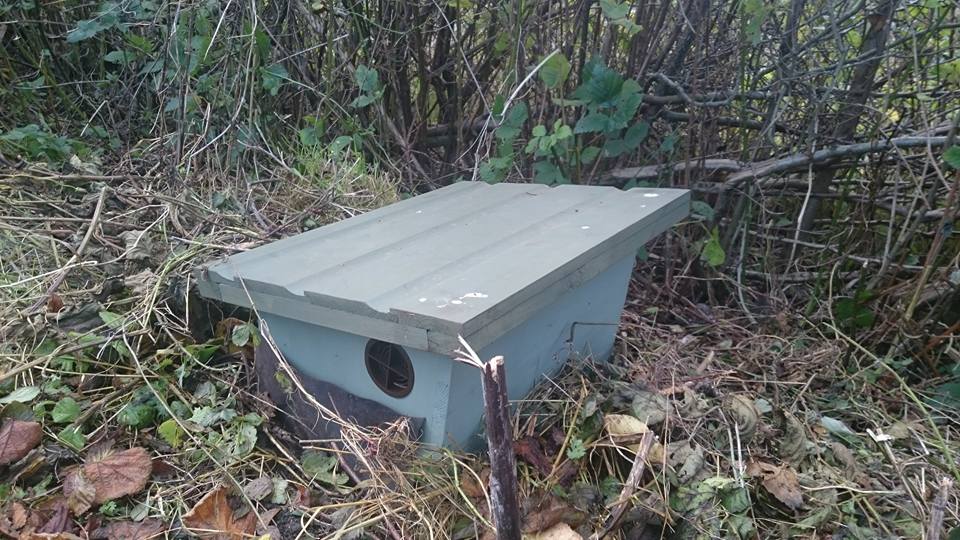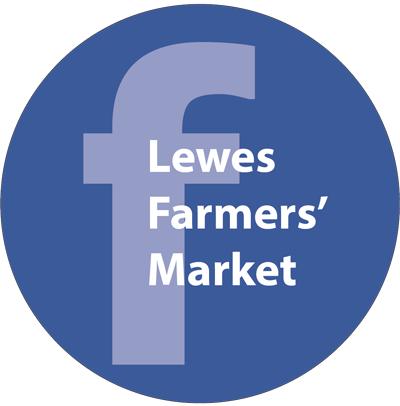The Flourish project began in September 2015, and one of the first things we did was to set up a three-day apple course working with a group of supported interns from Plumpton College. This took place at the beautiful Community Orchard in Ringmer.
This is scheduled as an annual course, and we were pleased when Plumpton College said the year one group enjoyed it so much, that this autumn (2016), they wanted us to run the course for both Supported Internship classes.
So on 26 and 27 September, Flourish project manager Emma Chaplin and apple expert Peter May hosted two different groups at the Orchard for a day each of learning about apples; picking, grading, weighing and storing them ready for day two, juicing, of the Flourish apple course, which will take place at Stanmer Park in October hosted by Brighton Permaculture Trust*.
*Brighton Permaculture Trust "work with nature to sustain achieve a sustainable lifestyle". They are extremely knowledgeable about apples, have their own orchards, organise a huge Apple Day event every year and run lots of apple and fruit related courses. They also have apple pressing and pasteurising equipment.

Emma welcomed the groups at the Orchard on both days and talked a little about Flourish being a Lottery-funded project, managed by Common Cause Co-op. Everyone was shown where the toilets were and asked to wear a name label. Emma then said one thing she felt about apples (that she likes crumble!) and invited the group to introduce themselves one at a time with something they like or dislike about apples. On the first day, quite a few interns said they weren't keen on apples. On the second, most of the group liked both apples and apple juice - with several saying they particularly like cider!
Then Peter addressed the interns, explaining that the Orchard growing season has been different from last year, and the apples are two weeks behind in terms of ripening.
The interns asked if each group could pick different varieties, so that they could compare the taste of each once they are juiced at Stanmer Park in October. Peter said that would be fine - the first day would be picking Ashmead's Kernel, the second, Red Falstaff.
Peter gave a tour of the apple store and the Orchard. He said the Orchard has rich soil from when horses grazed here in the past. He explained the differences between a tree nursery and an orchard. An orchard will feature lots of apple varieties which are grown to last for years.
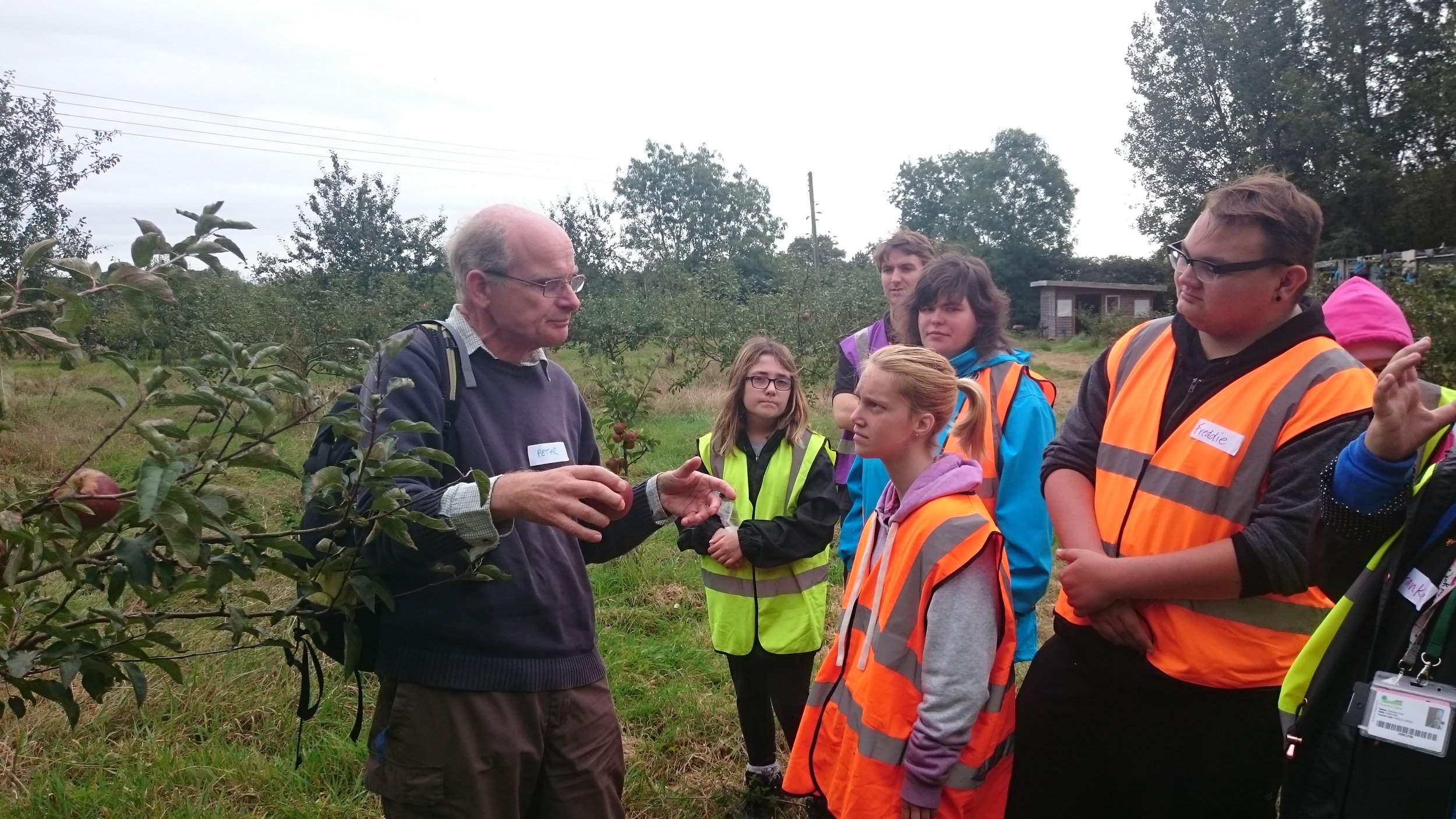 When the Orchard was being planned, he explained, each bush apple tree was planted 5m apart, with 7m between rows, to allow the trees room to grow. They allowed 10m for larger varieties.As we walked round, he pointed out several trees that are leaning, and said that is partly because they grew so vigorously and strongly the roots couldn't keep up - plus the added factor of the wind. He also mentioned that the Orchard also has some pear trees as well as a new quince and some plum trees.
When the Orchard was being planned, he explained, each bush apple tree was planted 5m apart, with 7m between rows, to allow the trees room to grow. They allowed 10m for larger varieties.As we walked round, he pointed out several trees that are leaning, and said that is partly because they grew so vigorously and strongly the roots couldn't keep up - plus the added factor of the wind. He also mentioned that the Orchard also has some pear trees as well as a new quince and some plum trees.
"You have to think about thirty years' time when you're planning an orchard"
He then talked about his career, and how interesting an apprenticeship was - trying various jobs in different departments, learning new skills, getting a sense of what worked for him. He explained that working for a commercial orchard might include working with equipment or in glass houses or polytunnel indoors.
"What employers are looking for", he explained, "is enthusiasm and lots of energy and for people who are prepared to work outdoors in all weathers"
Peter said that pesticides and chemicals are not used on the trees in the Orchard so many of the apples are lumpy and bumpy - unlike fruit you get from commercial orchards.
Some interesting apple facts that Peter pointed out:
- This is a post that Peter wrote last autumn about the different varieties of apples at the Orchard. Ones we looked at include: Newton Wonder, Edward VII, Lord Lambourne, Scrumptious, Ashmead's Kernel, Red Falstaff and Salt Cote Pippin.
- There are 10,000 apple varieties in the world
- There are 2,500 varieties in the UK alone
- A number of varieties are named after places and people
- Apples originate from Kazakhstan
- New varieties are always being developed - designed to be disease-resistant etc
- Apples probably arrived in the UK when the Romans invaded
- Some varieties ripen early, some late
- Some have a lot of apples every year, others alternate years
- The texture and taste of all the varieties varies. Some are sweet, some sharp. Some are eaters, some are good for cooking
- It varies as to how well they store
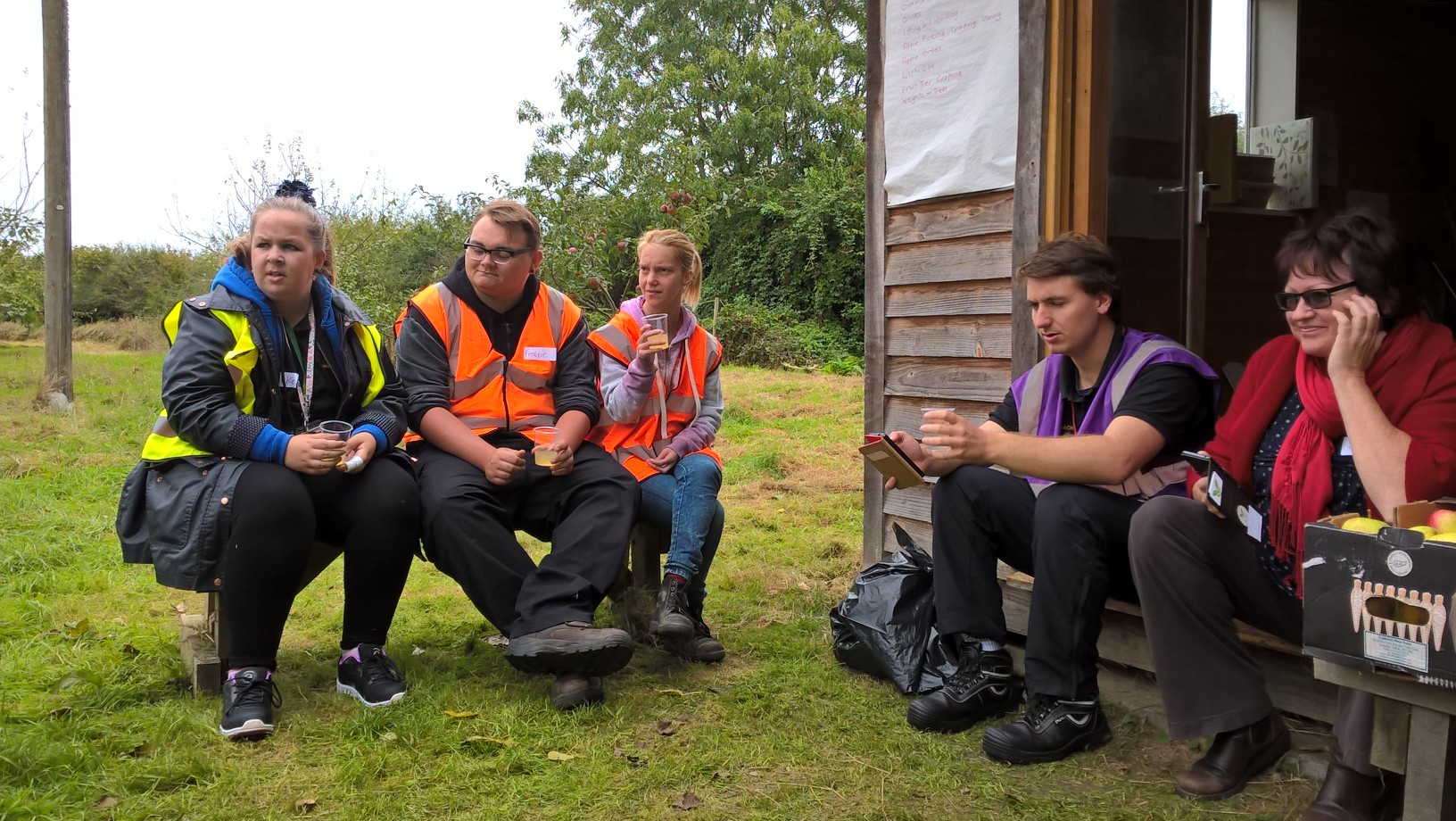
He offered members of the group different vintages of juice, from various varieties of apples picked in previous years. One intern said it was "Like drinking liquid sunshine".

Then the group were shown safe lifting and handling techniques, and they began work - with one group picking apples, one group grading them, with others taking them to the apple store in the wheelbarrow.
After lunch, the groups made up several 'orders' of apples, as if for a shop, using weighing scales.
Peter then showed the group how to hang small cement weights on the ends of the boughs of some young apple trees, a technique which bends the branch down and encourages the tree to produce more fruit.

Peter finished the afternoon off by demonstrating how to graft a new apple tree.
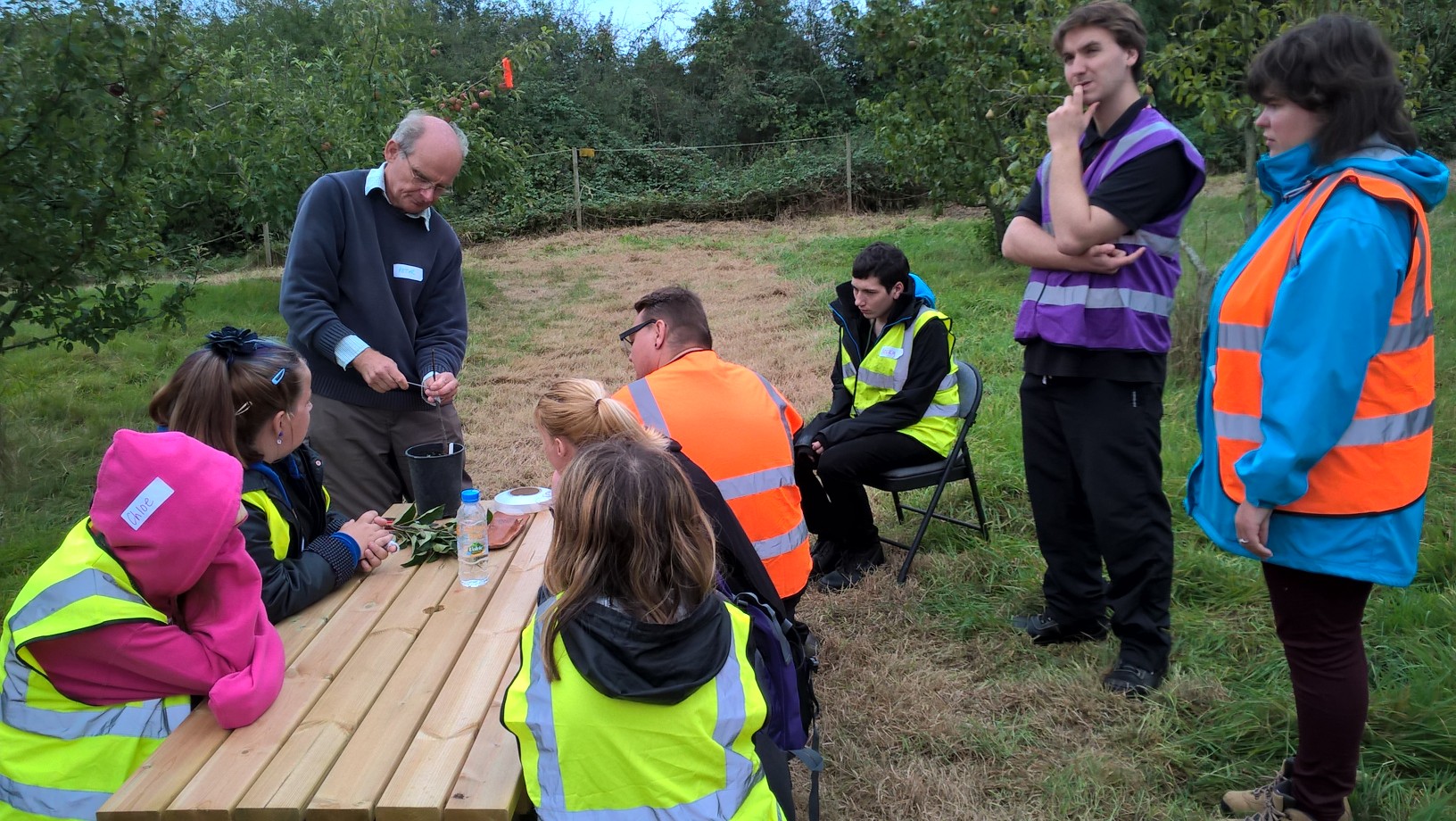
Next stop, Brighton Permaculture Trust to juice, bottle and pasteurise the apples - and taste the juice of course.
Emma Chaplin, Sept 2016

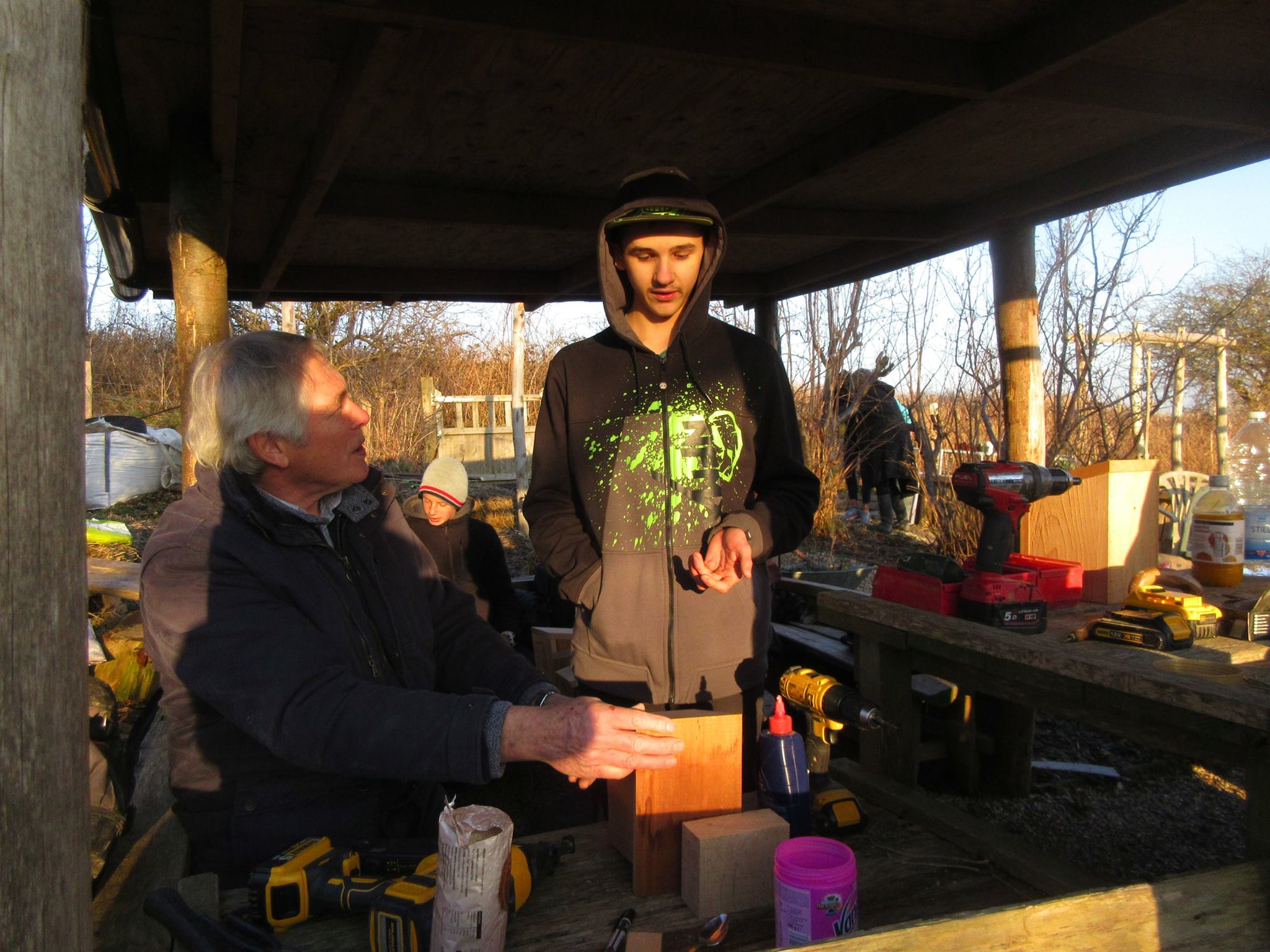


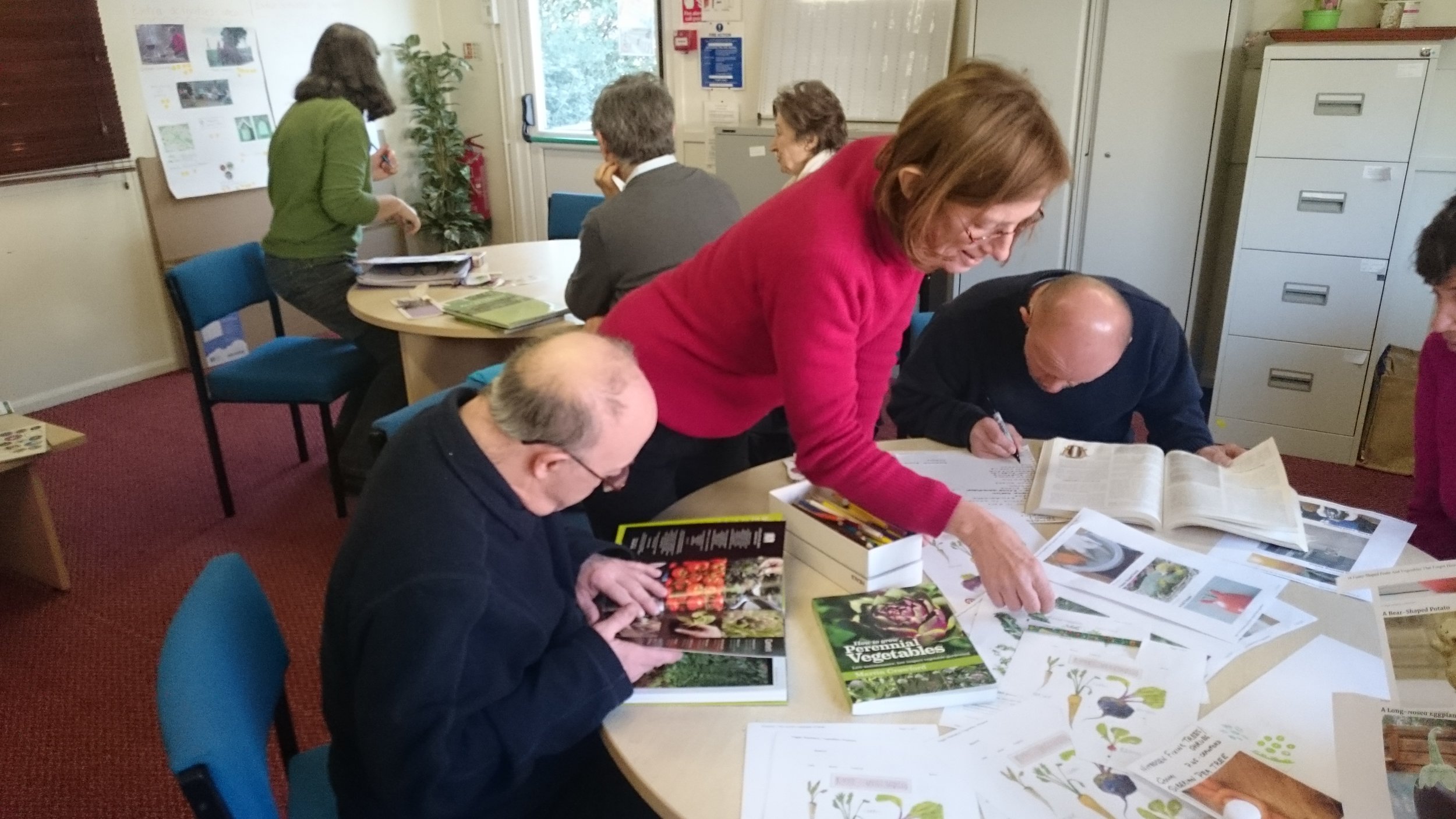
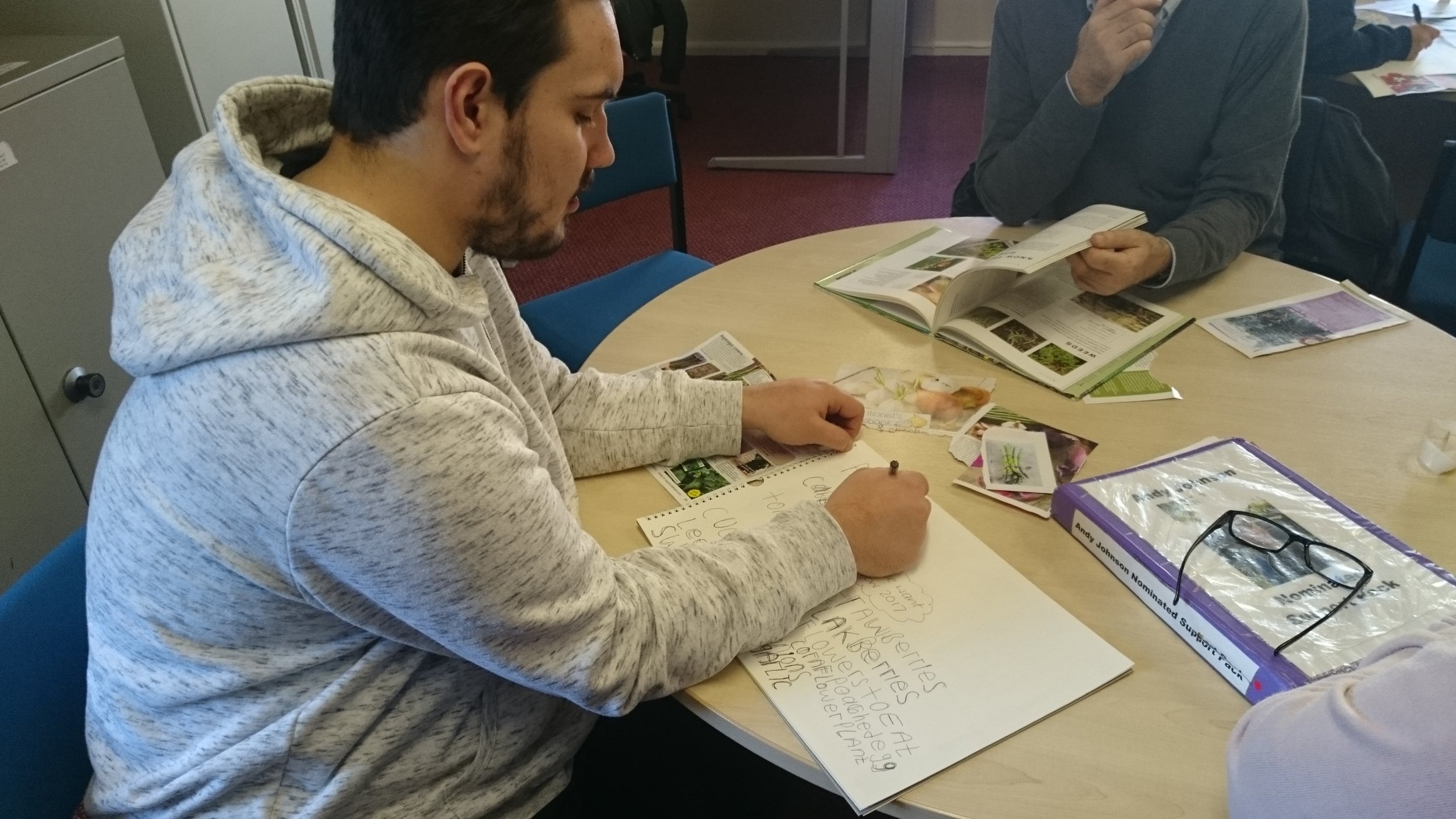


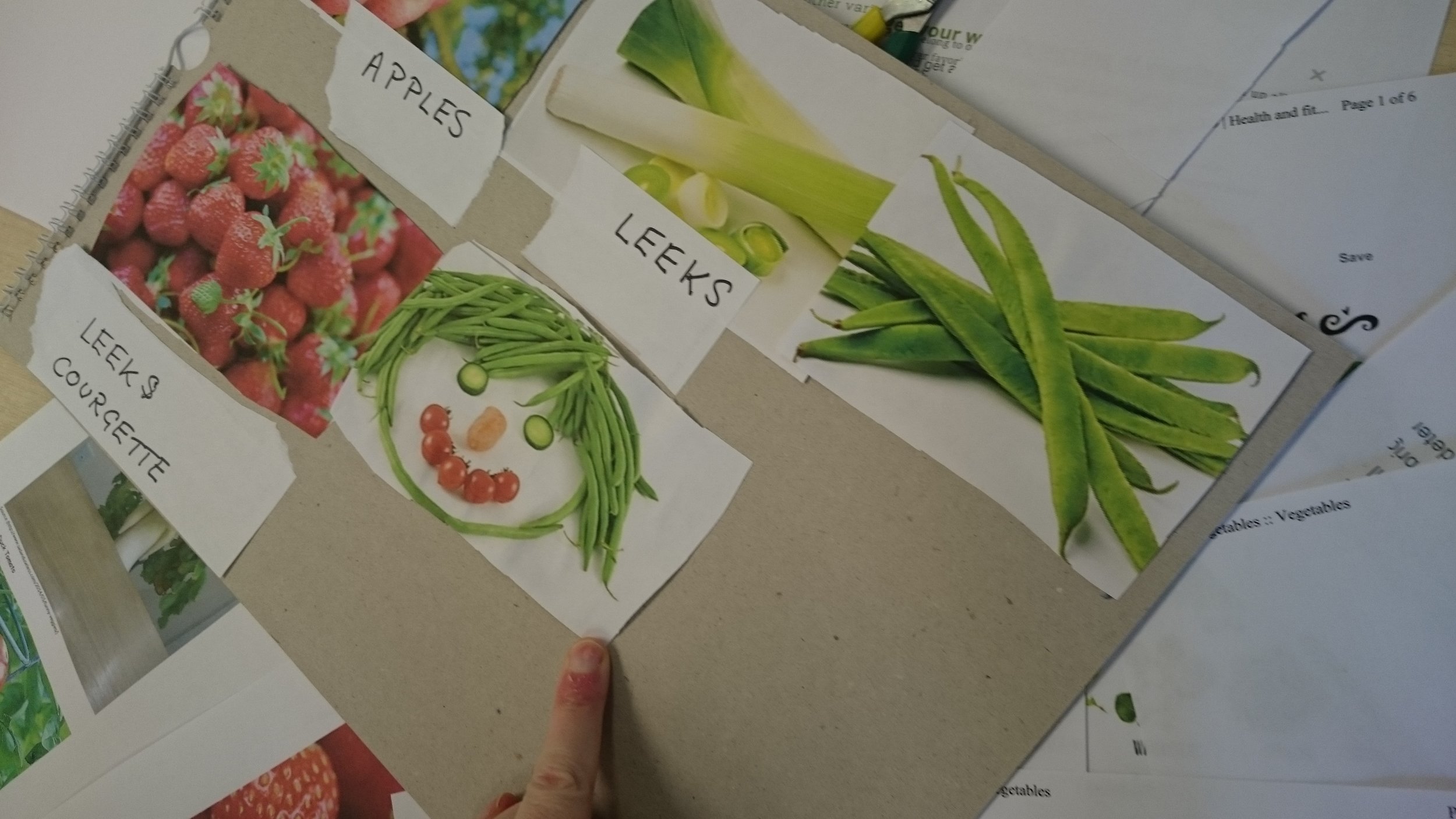
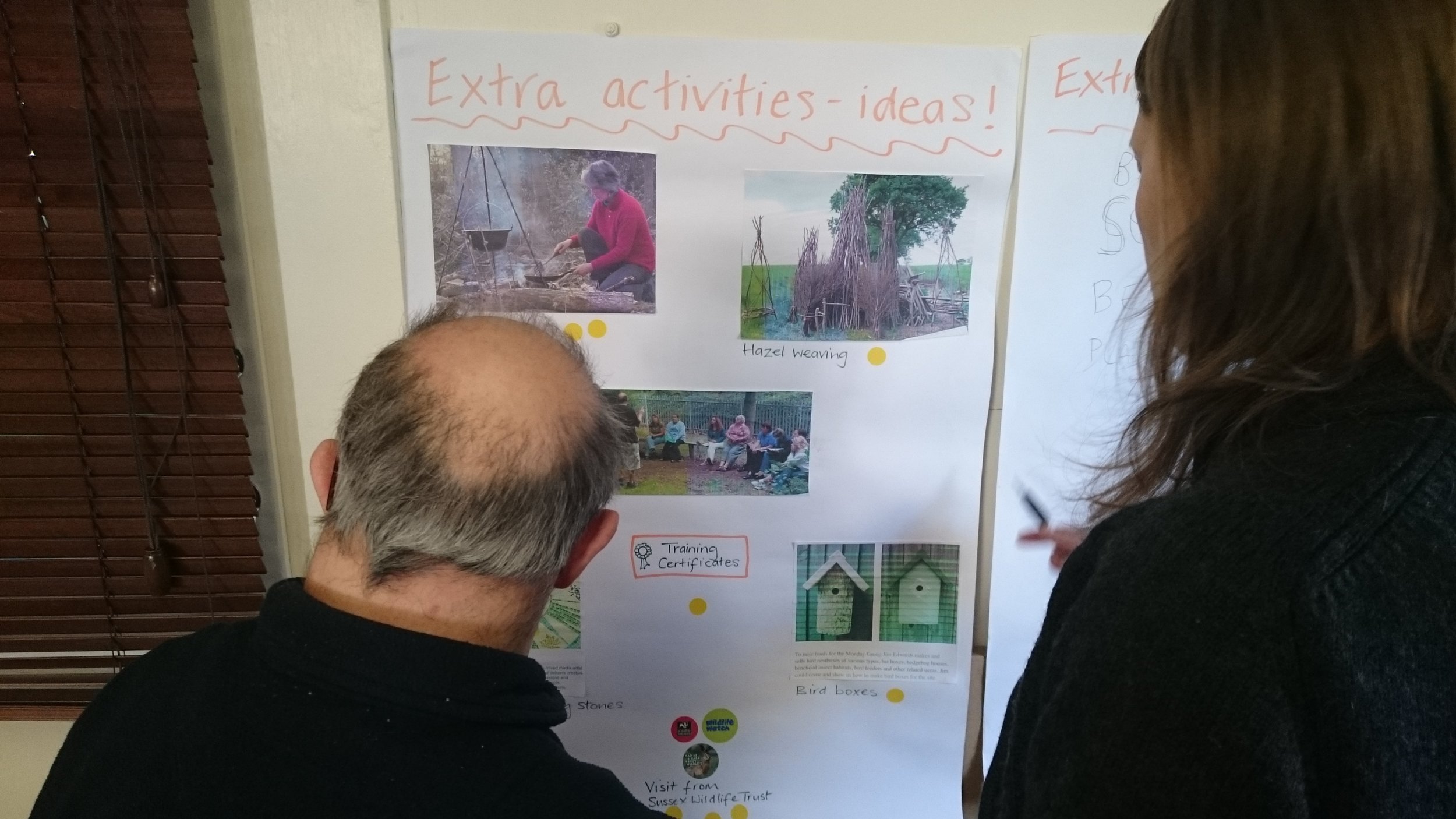
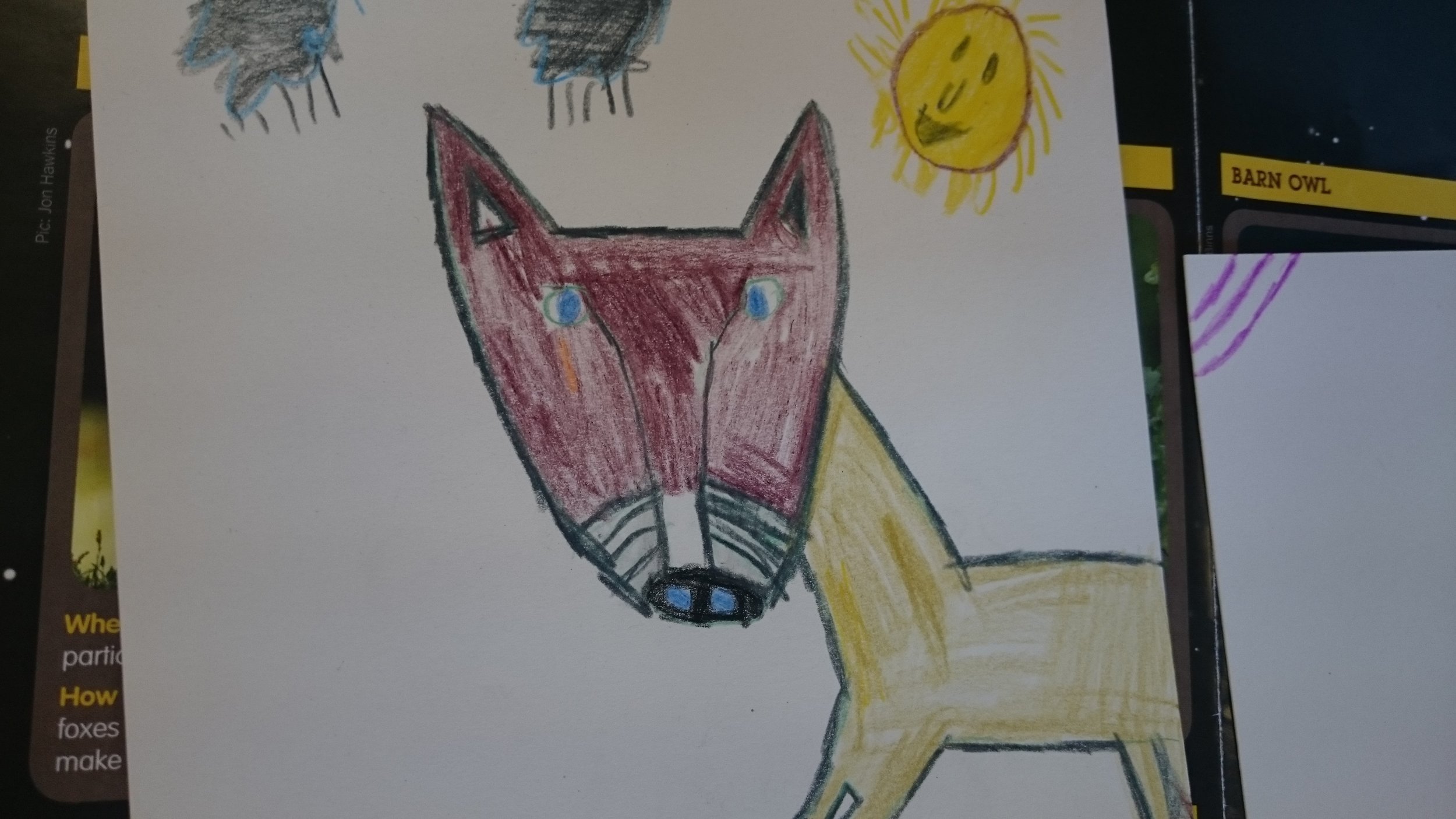
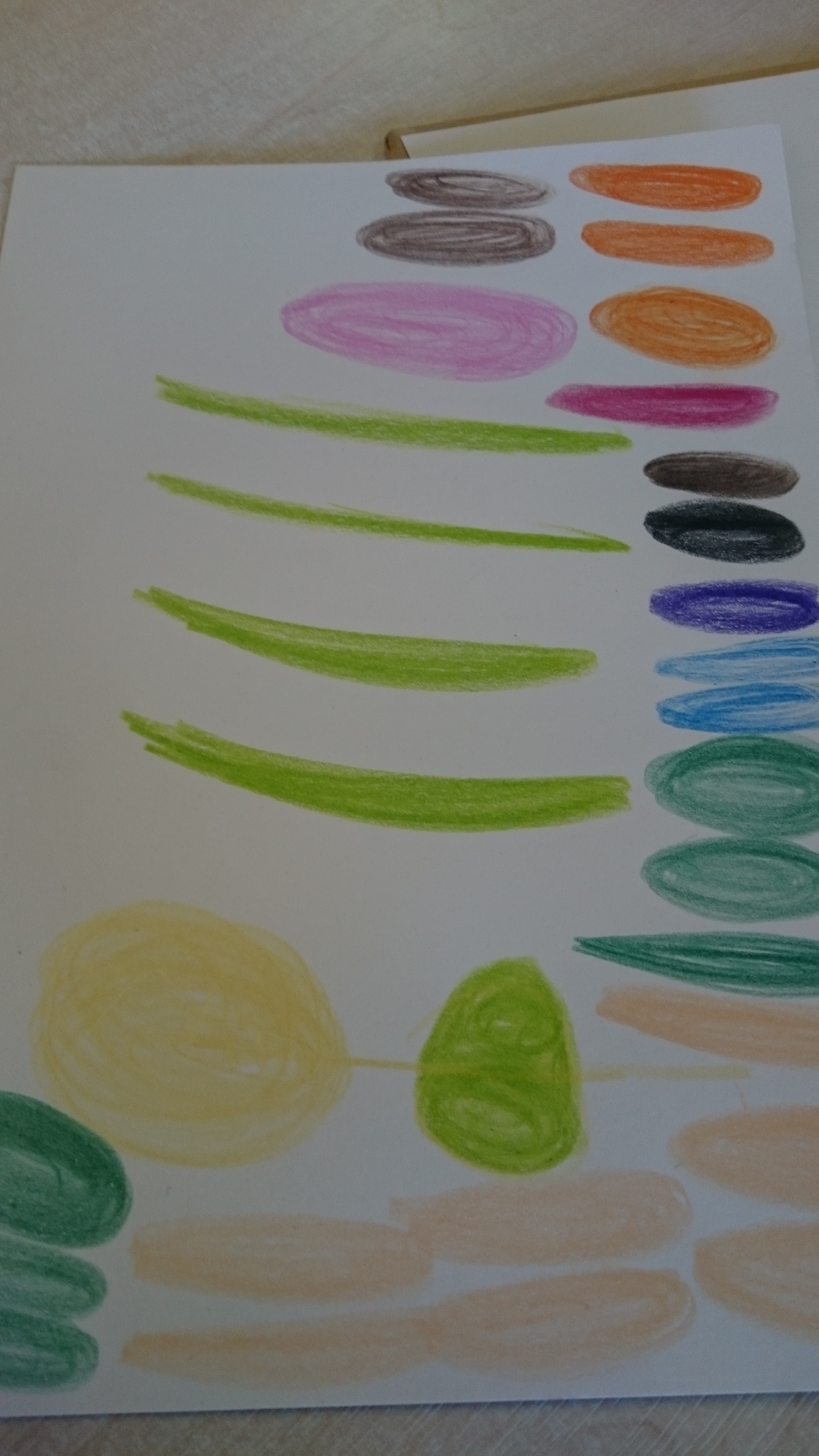

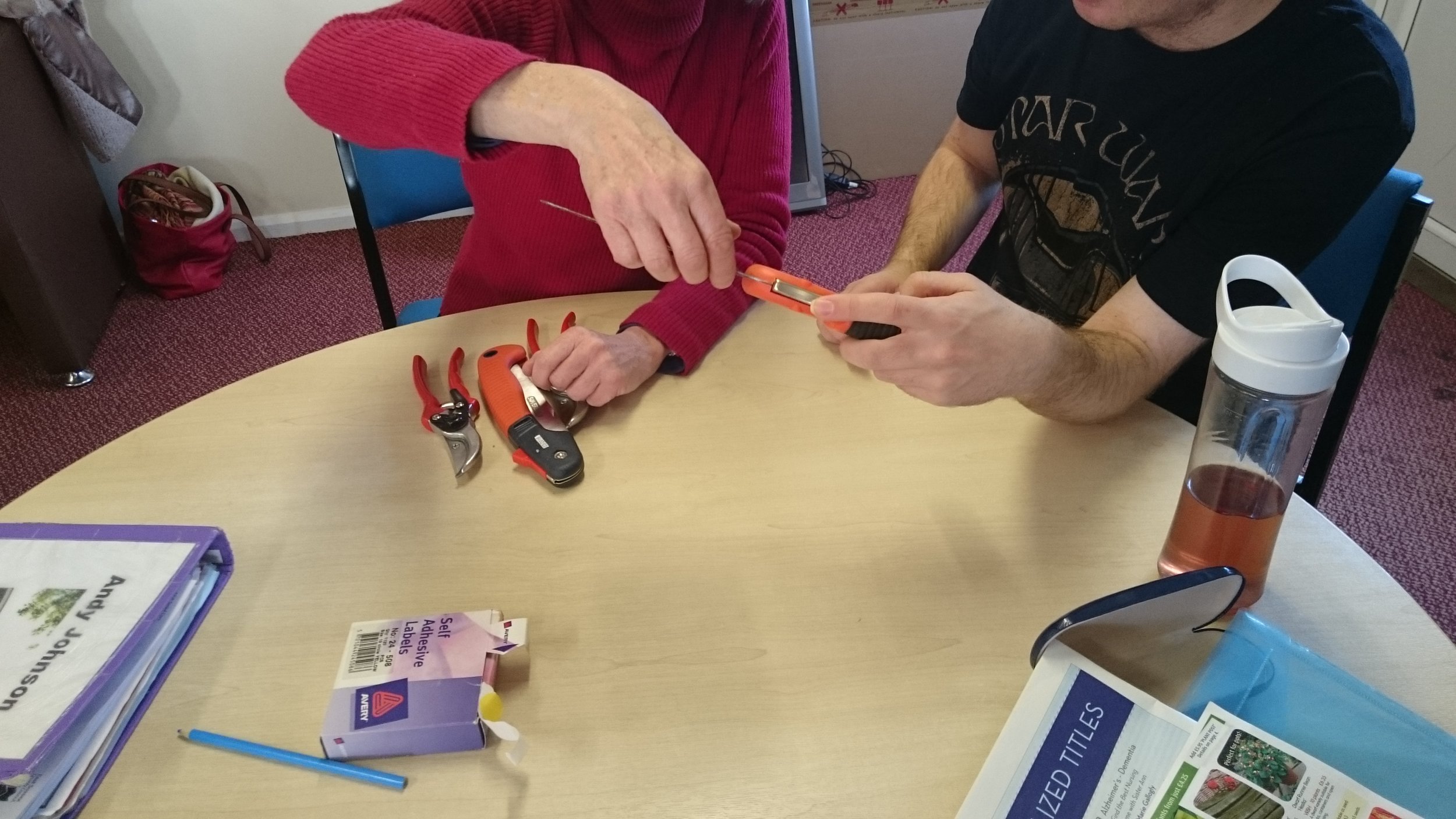
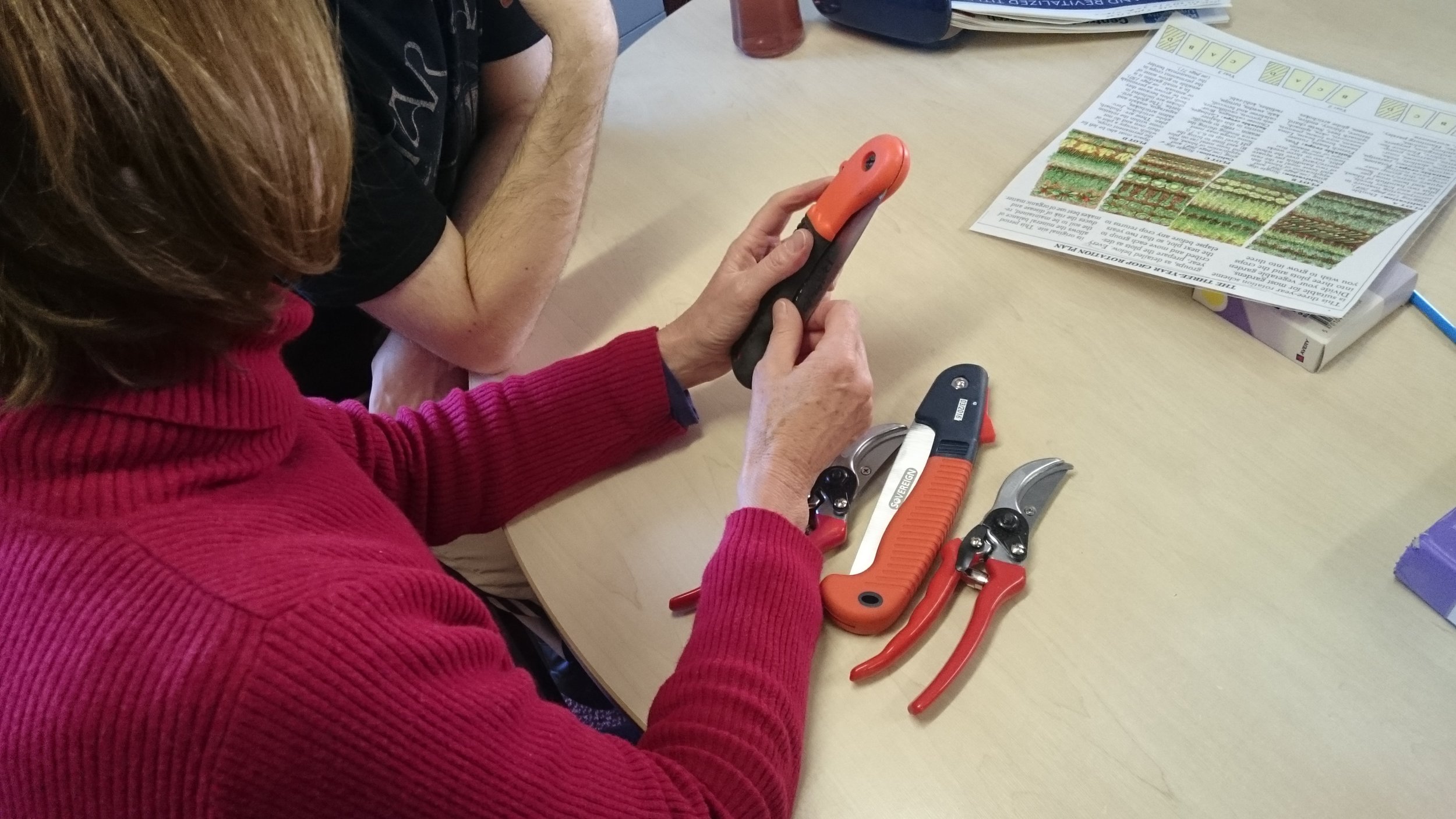
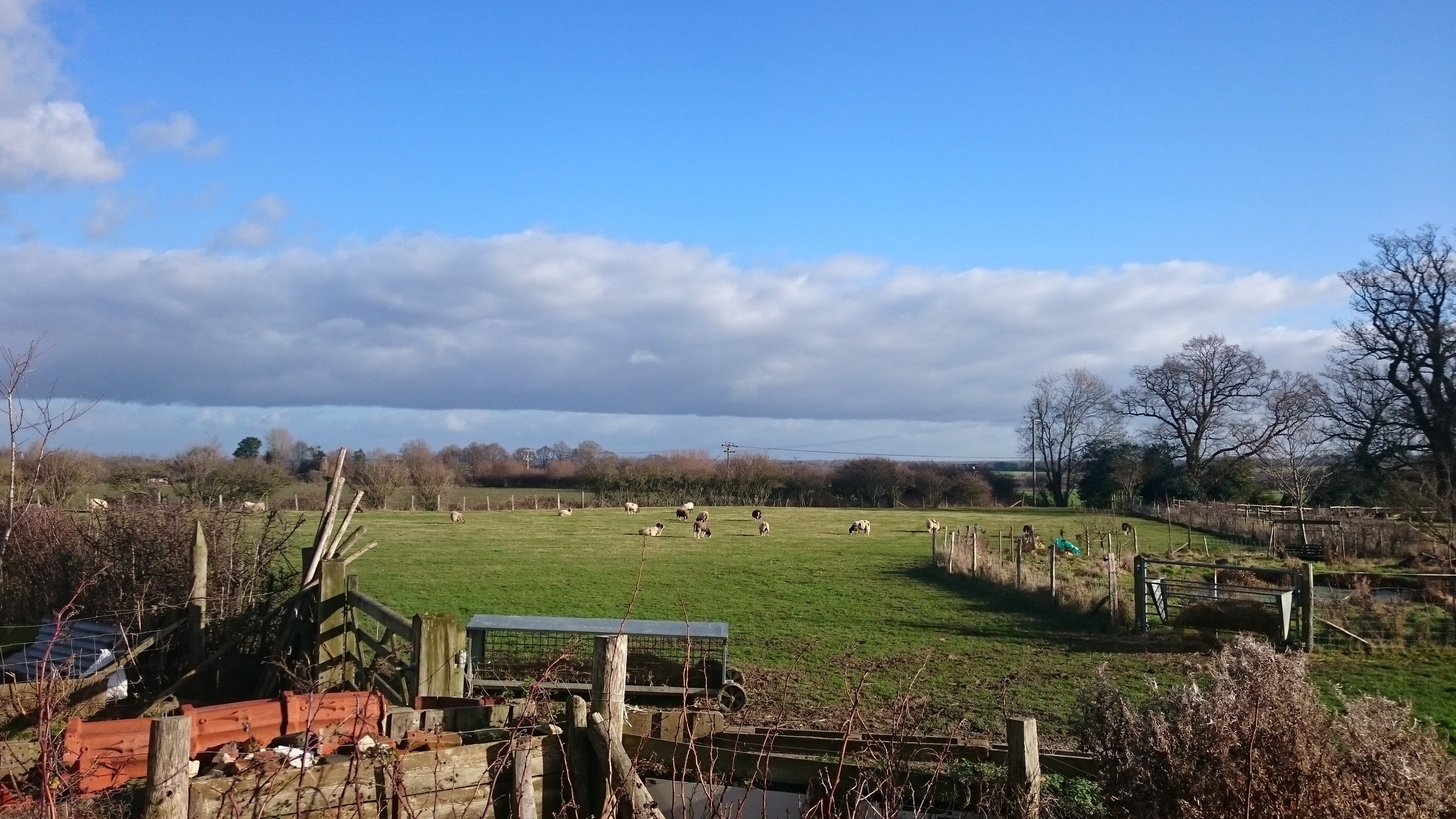 First of all, Owena needed to strim back some brambles to make it easier for us to cut the two types of willow growing in the bed, so most of the group left her to it and carried on walking beyond the willow bed in order to go and see the horses and pigs.
First of all, Owena needed to strim back some brambles to make it easier for us to cut the two types of willow growing in the bed, so most of the group left her to it and carried on walking beyond the willow bed in order to go and see the horses and pigs.
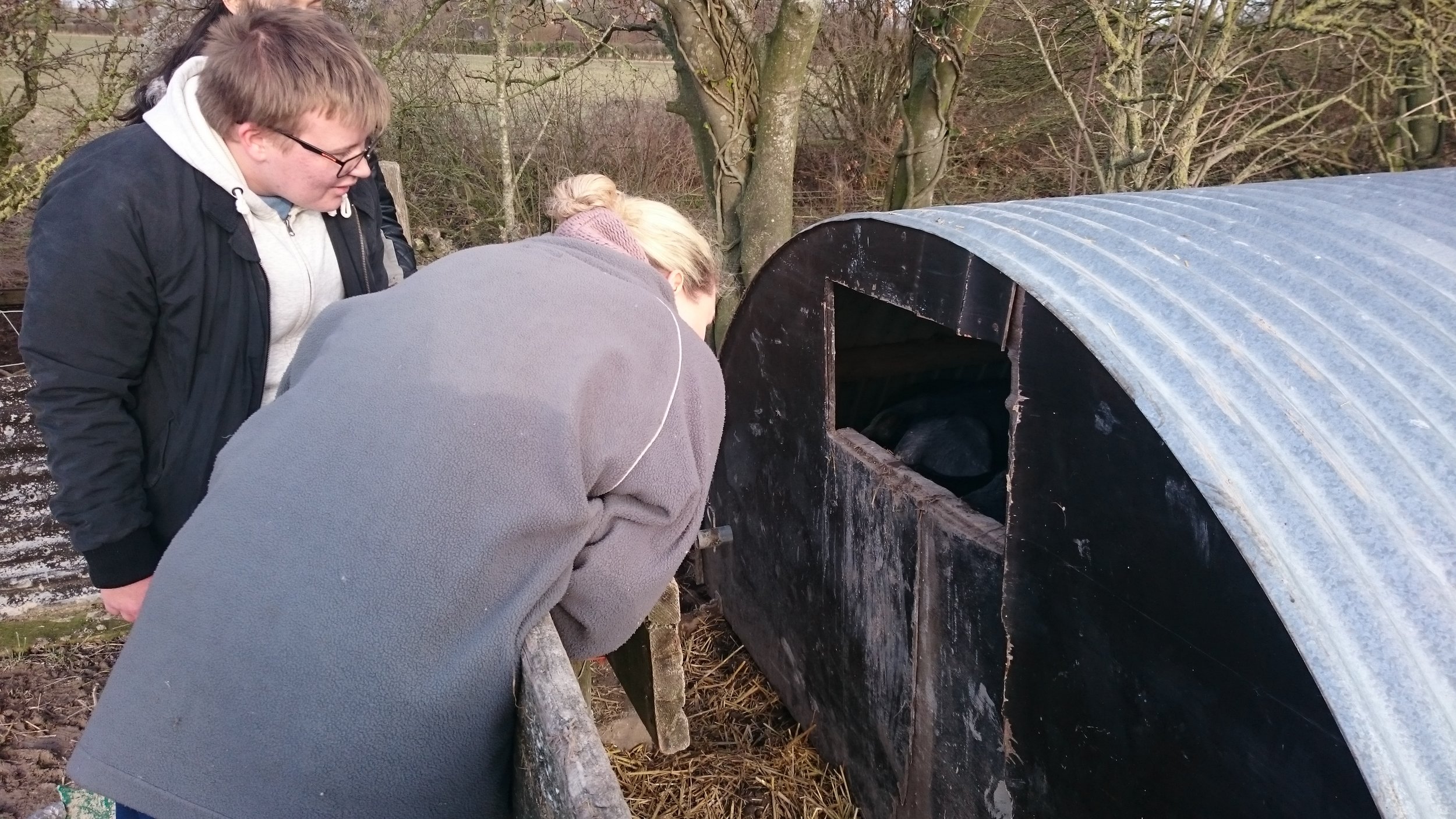
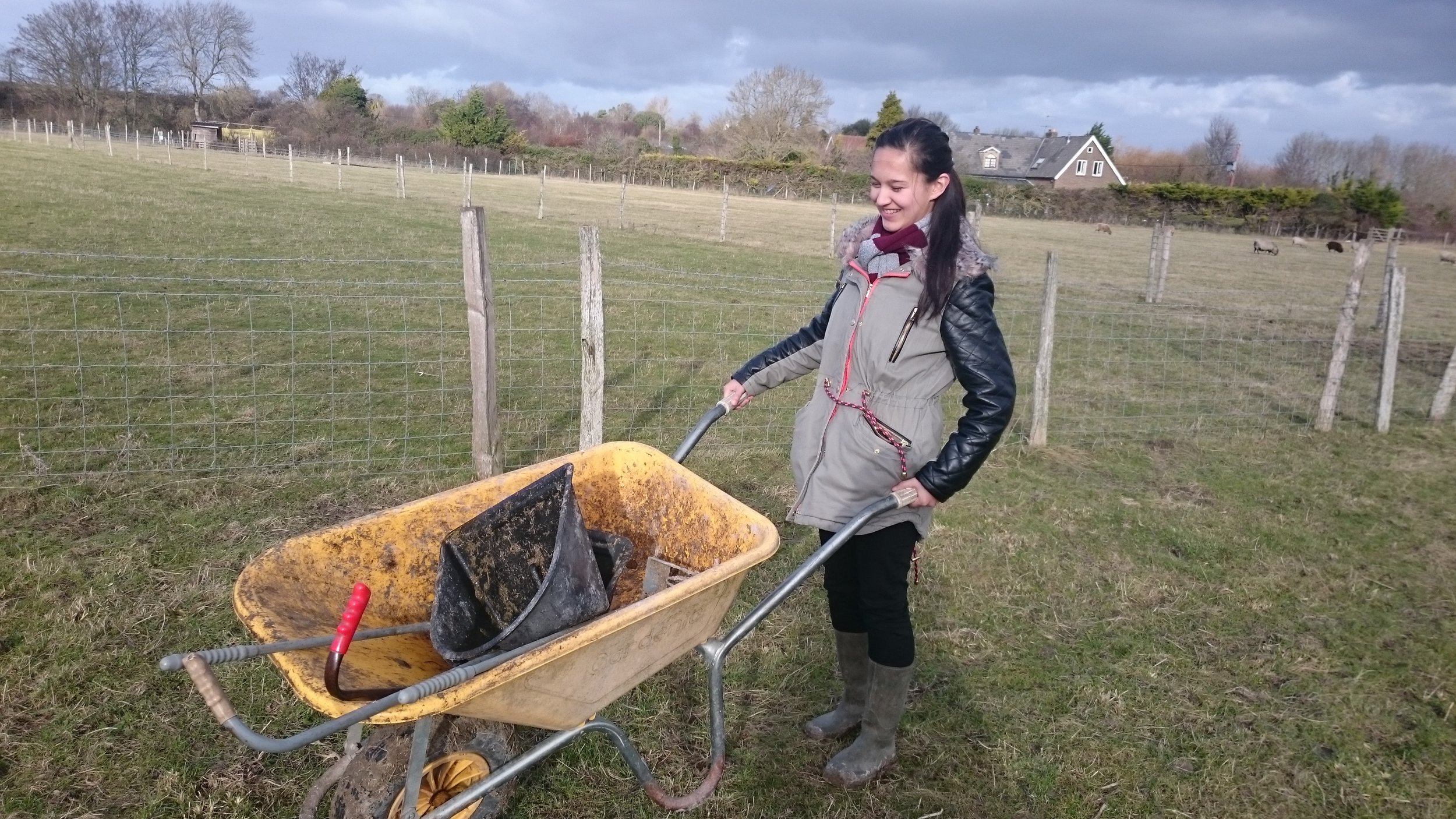

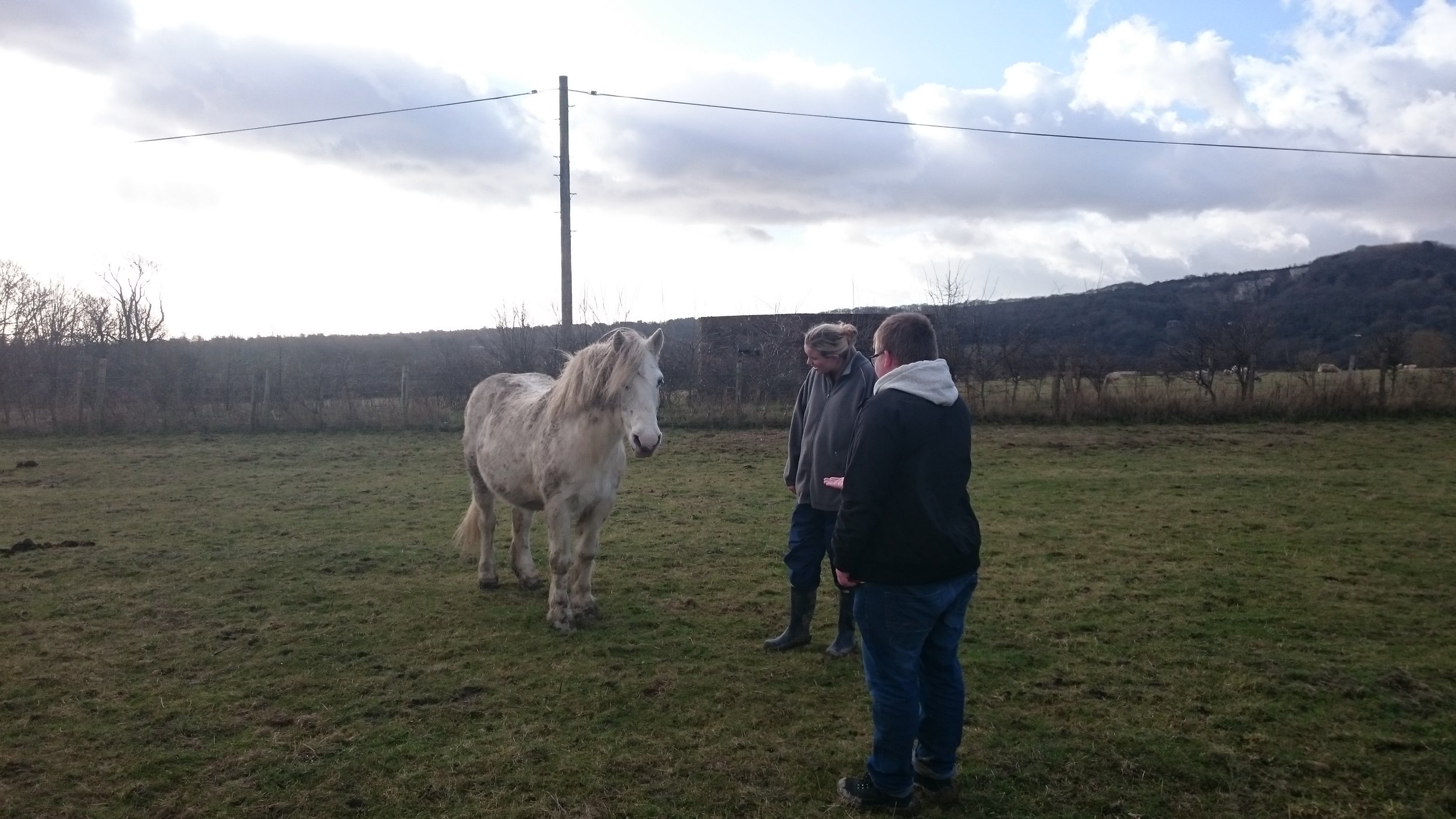
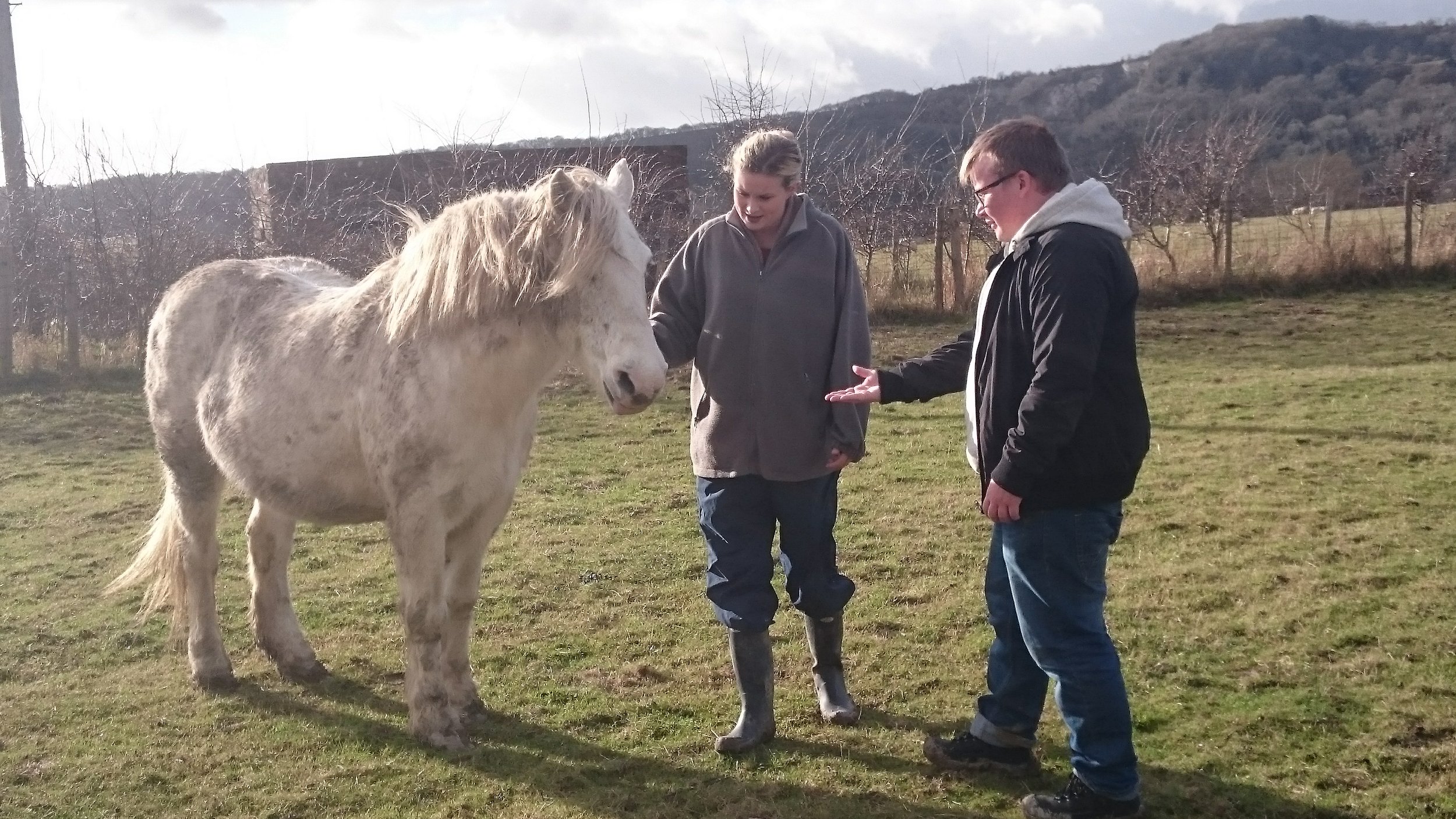

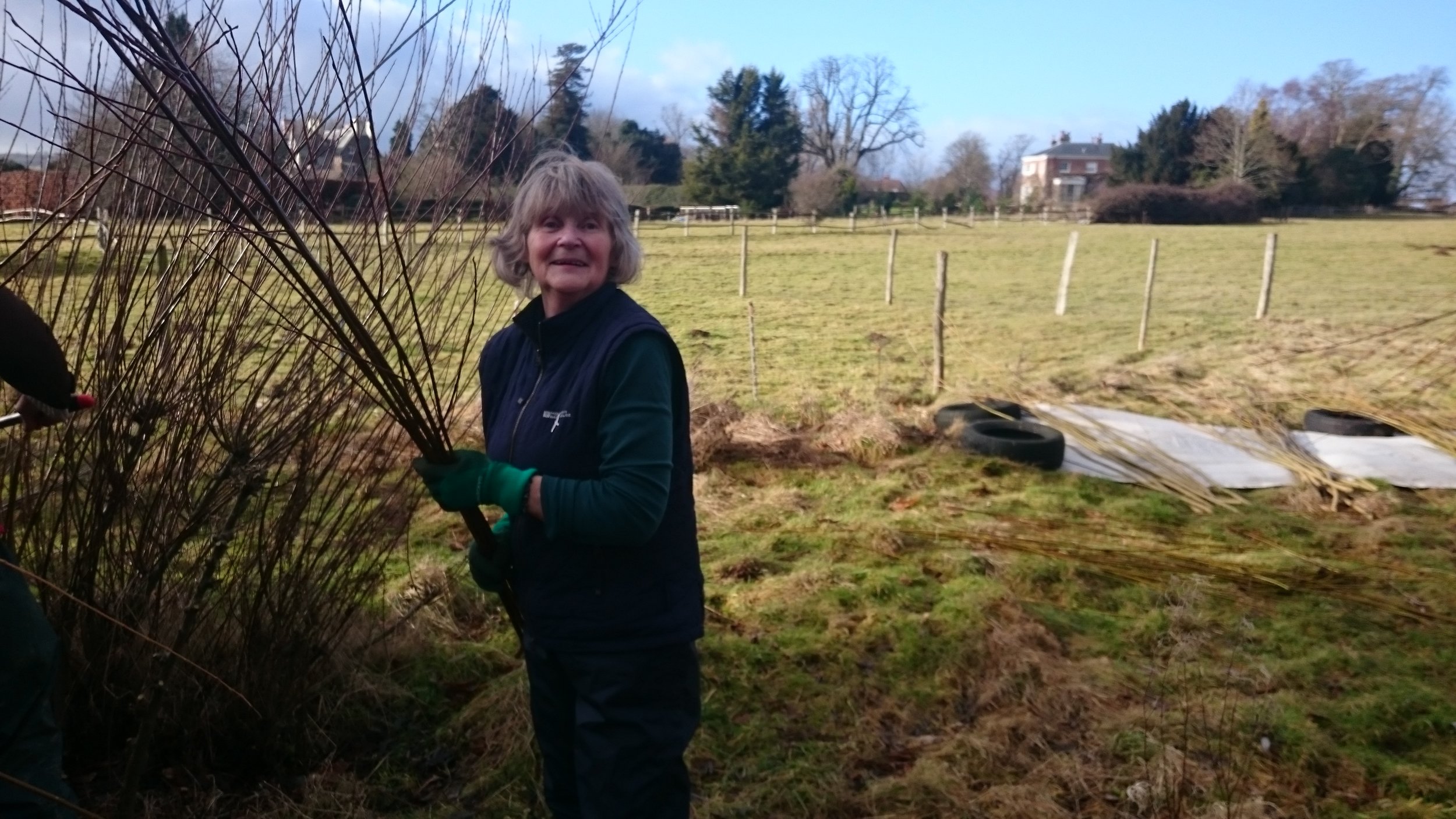
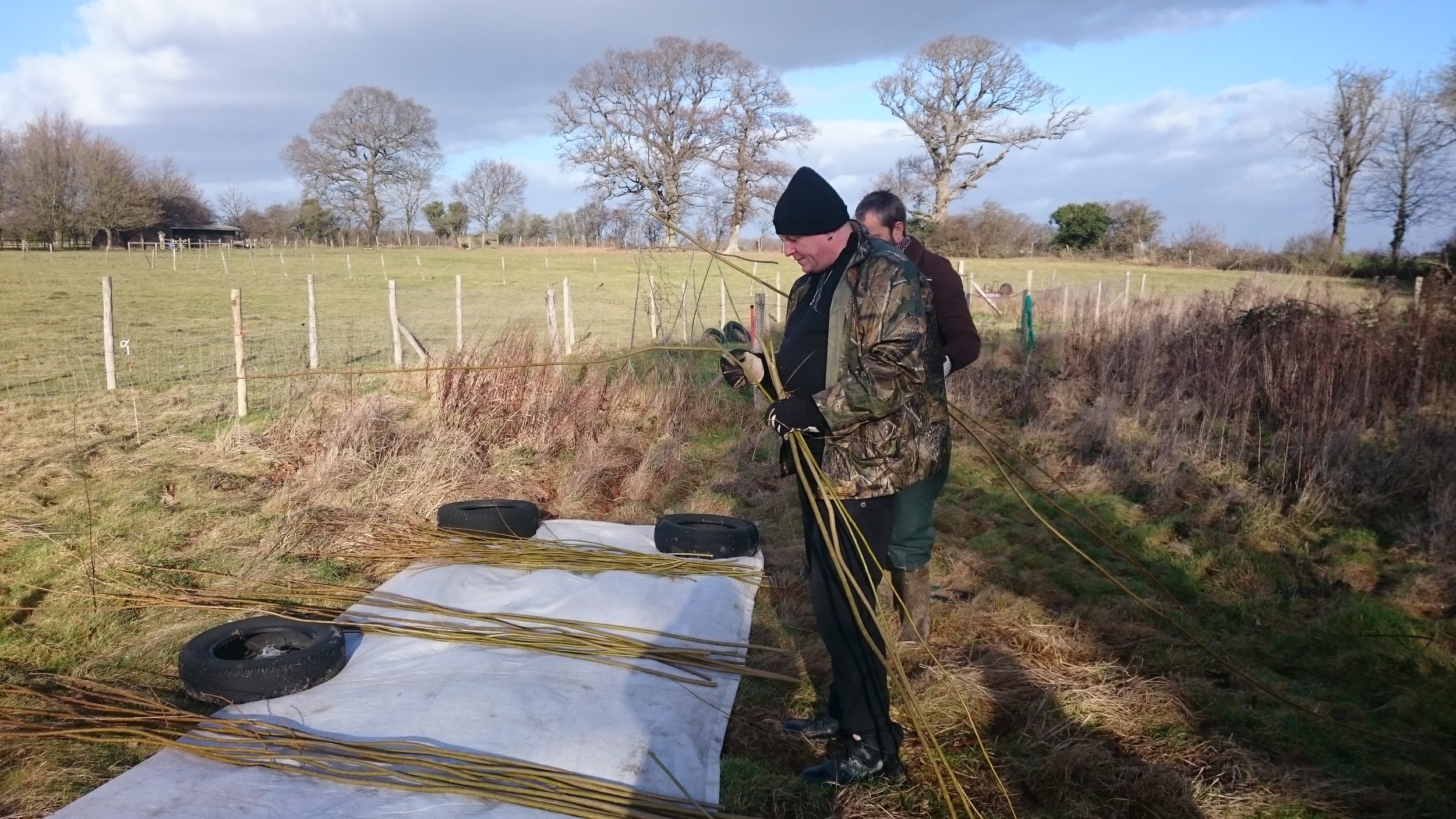
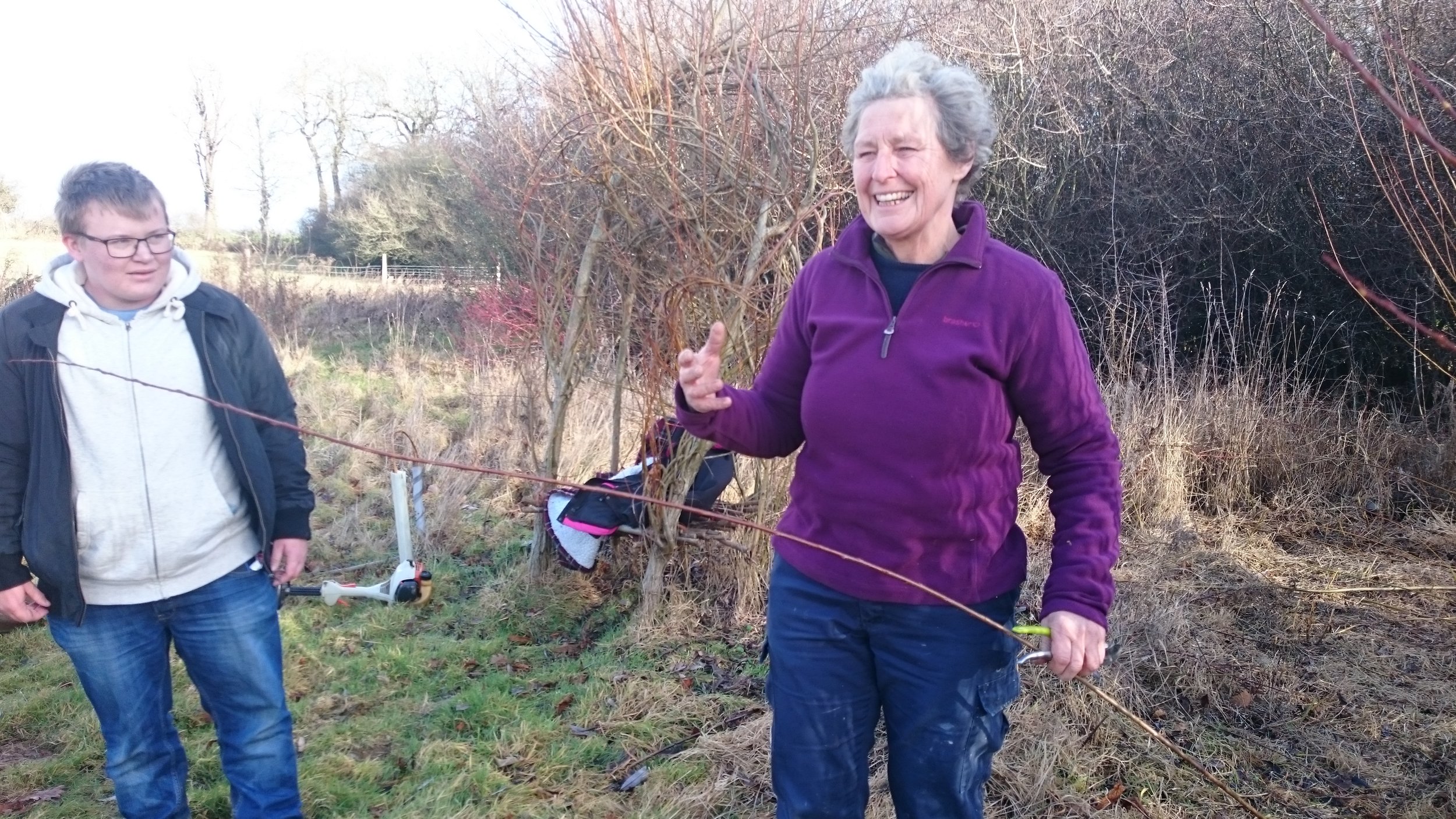
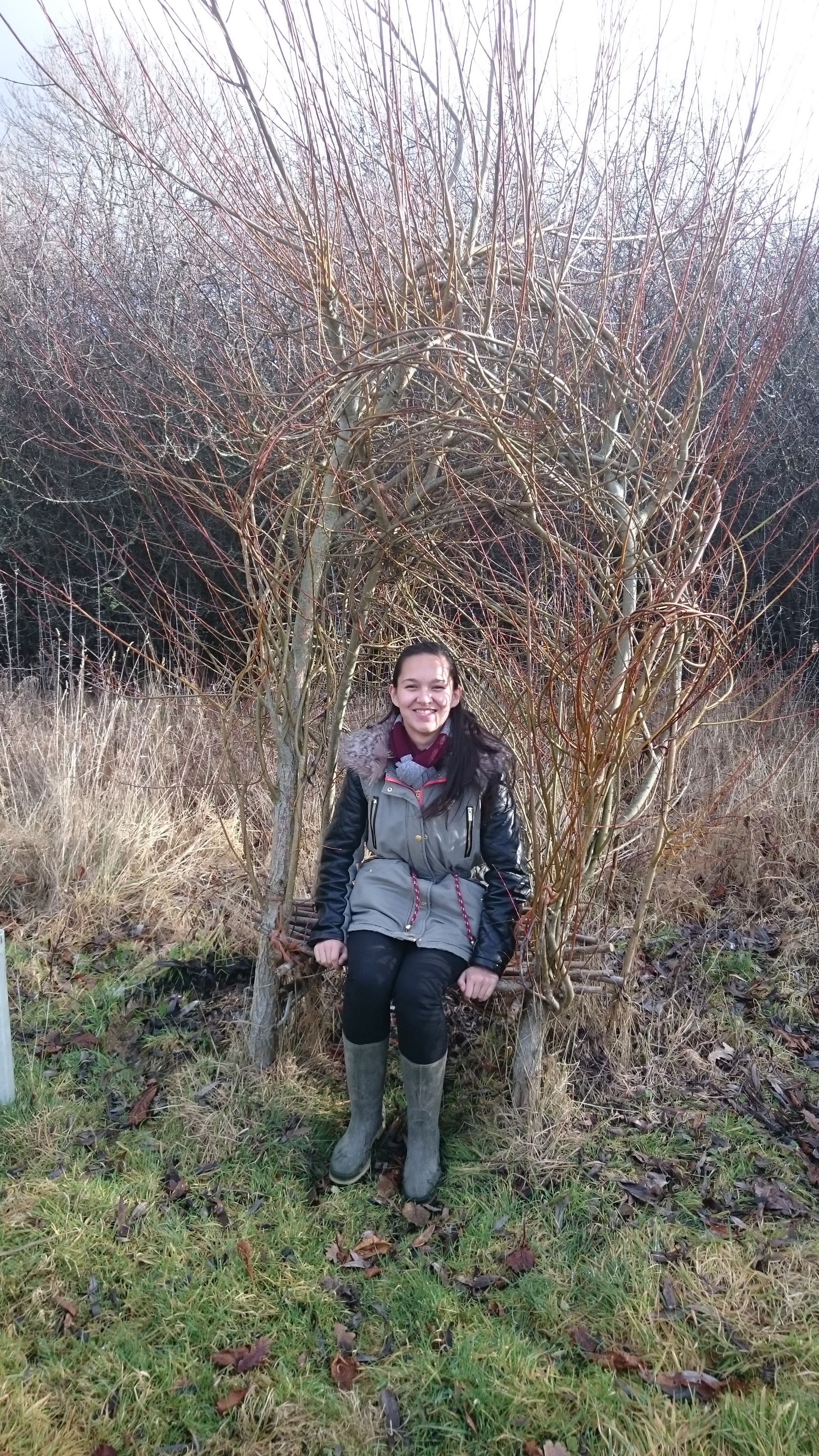
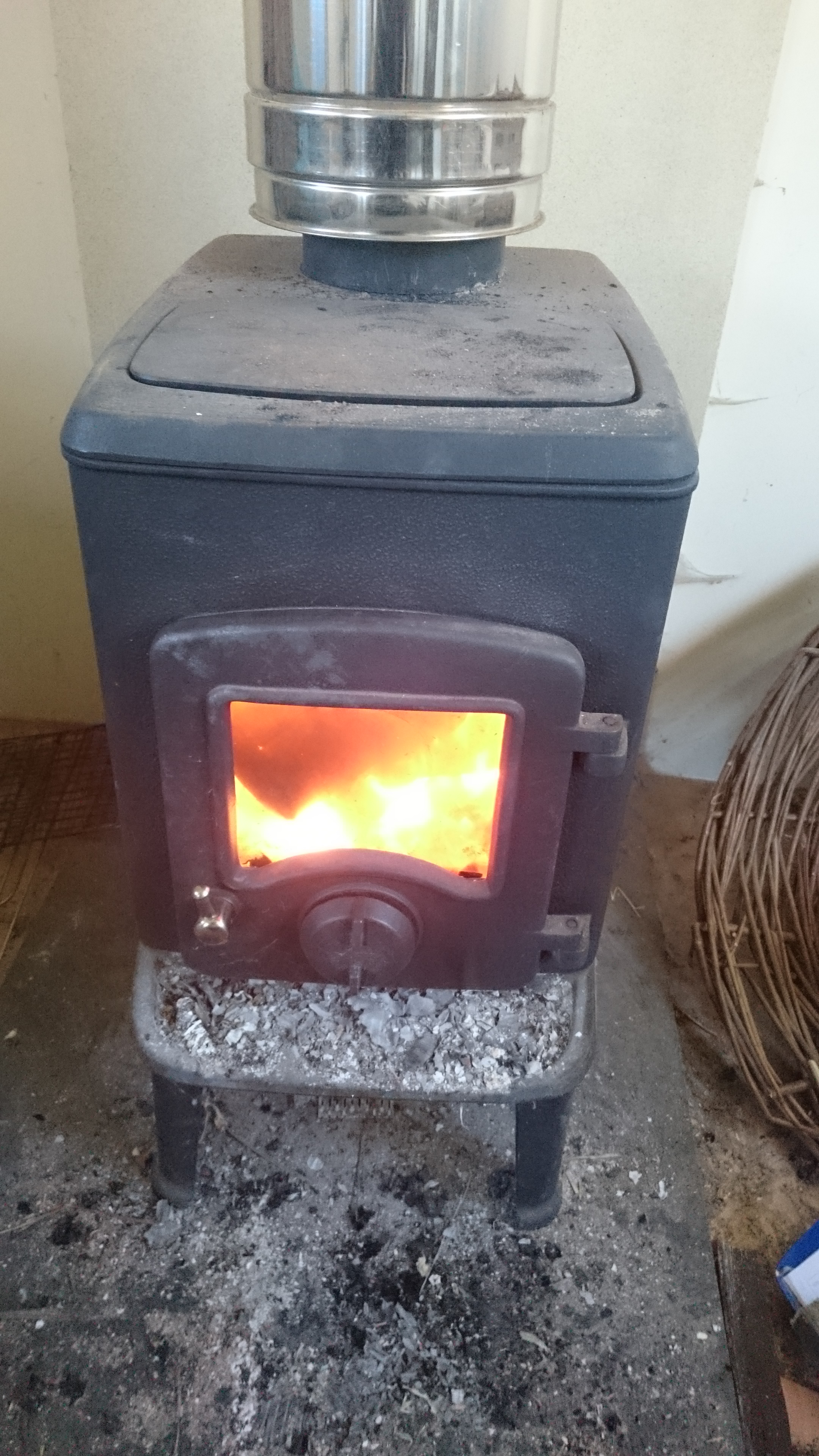 After some hard work, the group headed back to the cabin for lunch around the wood burner to warm up.
After some hard work, the group headed back to the cabin for lunch around the wood burner to warm up.

 When the Orchard was being planned, he explained, each bush apple tree was planted 5m apart, with 7m between rows, to allow the trees room to grow. They allowed 10m for larger varieties.As we walked round, he pointed out several trees that are leaning, and said that is partly because they grew so vigorously and strongly the roots couldn't keep up - plus the added factor of the wind. He also mentioned that the Orchard also has some pear trees as well as a new quince and some plum trees.
When the Orchard was being planned, he explained, each bush apple tree was planted 5m apart, with 7m between rows, to allow the trees room to grow. They allowed 10m for larger varieties.As we walked round, he pointed out several trees that are leaning, and said that is partly because they grew so vigorously and strongly the roots couldn't keep up - plus the added factor of the wind. He also mentioned that the Orchard also has some pear trees as well as a new quince and some plum trees.



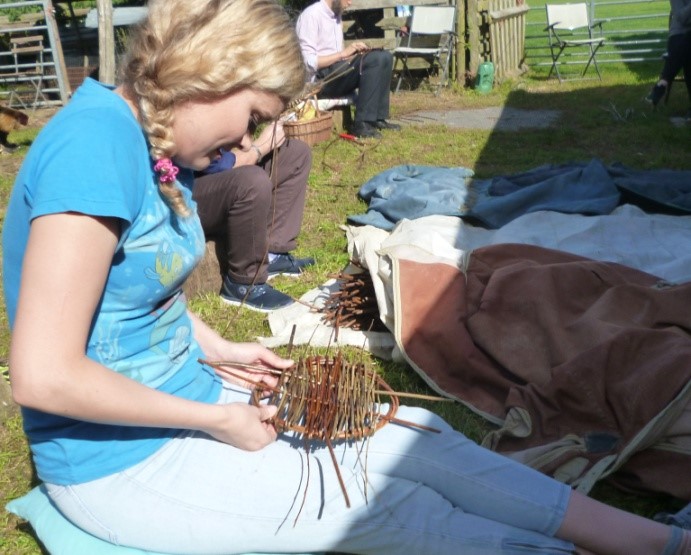
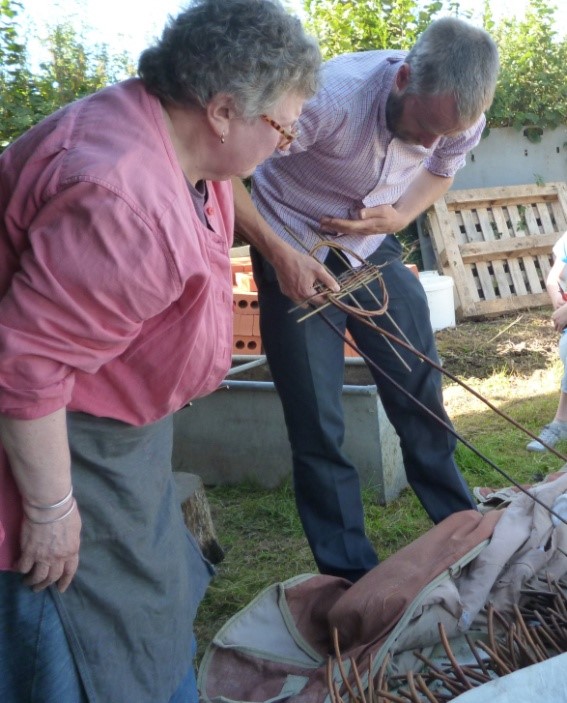
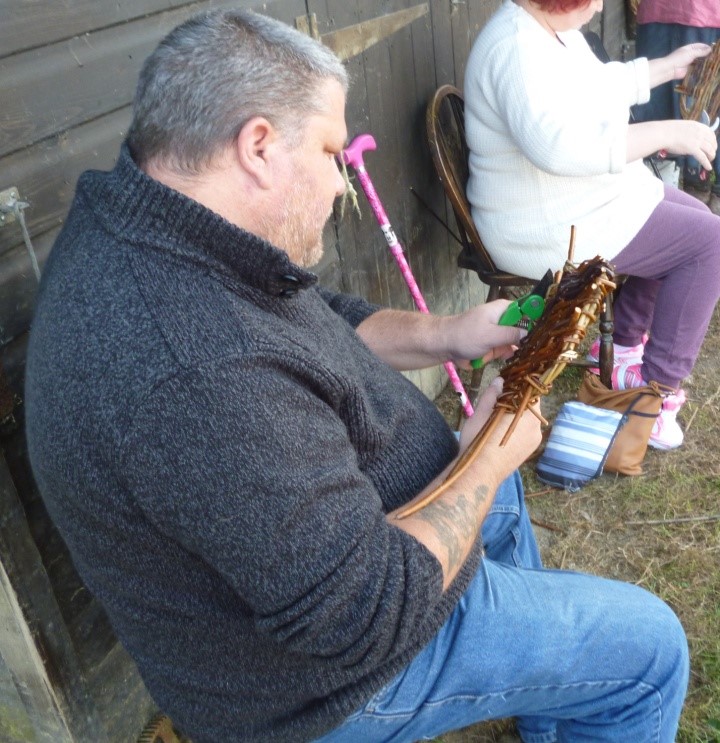
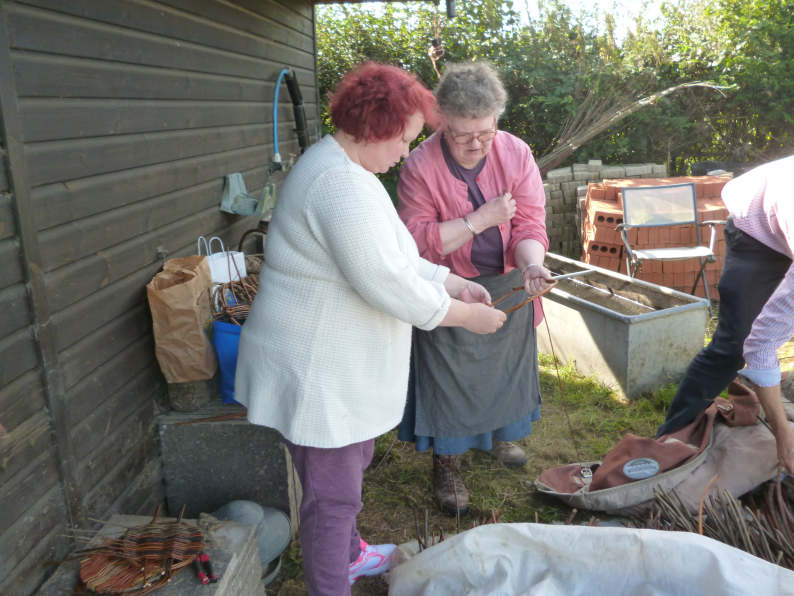
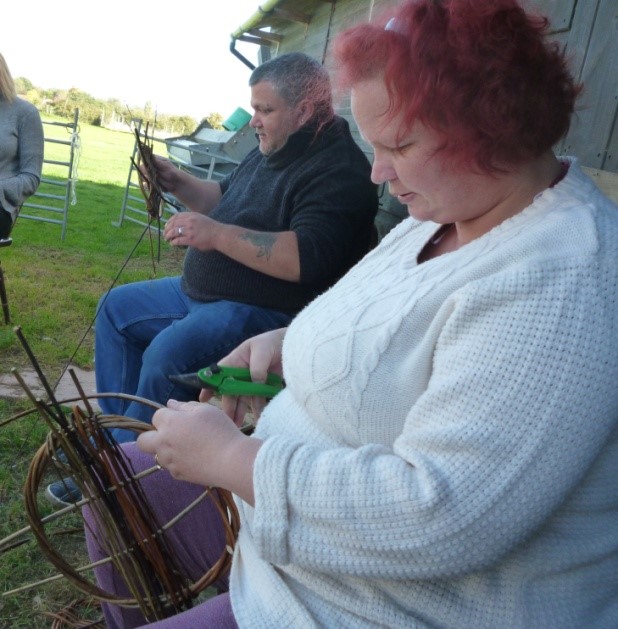
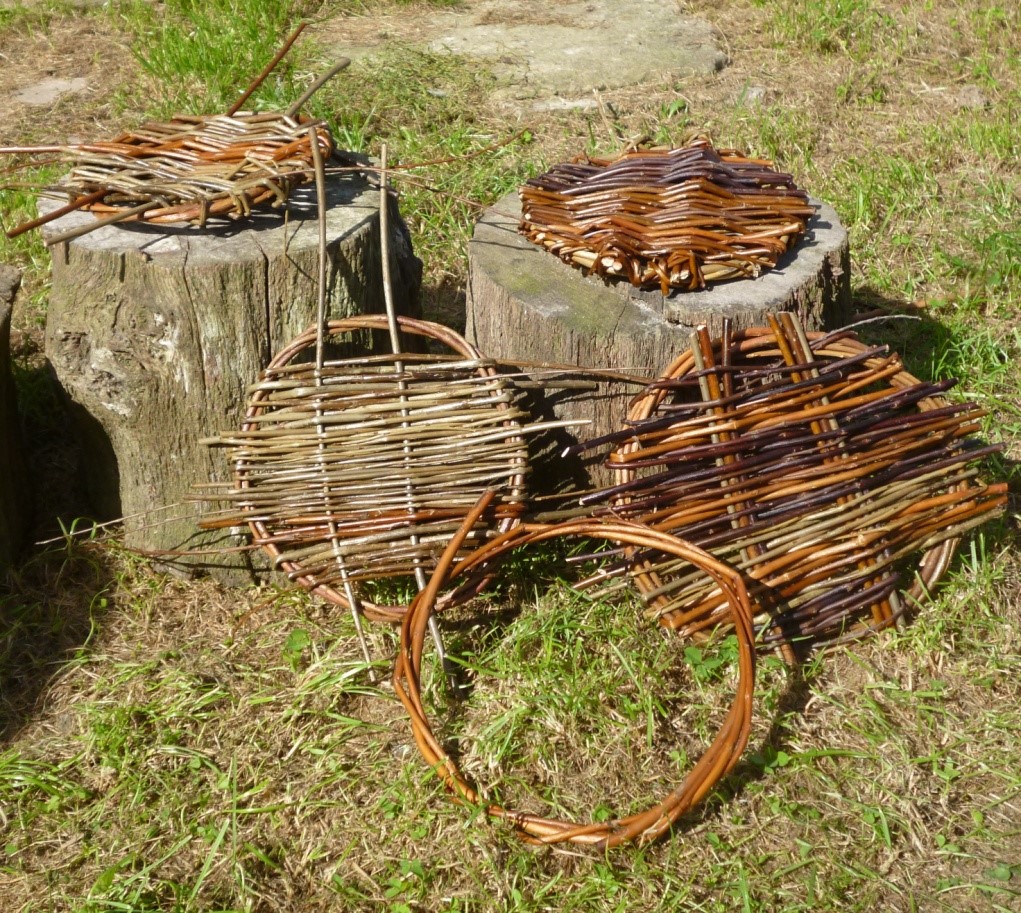
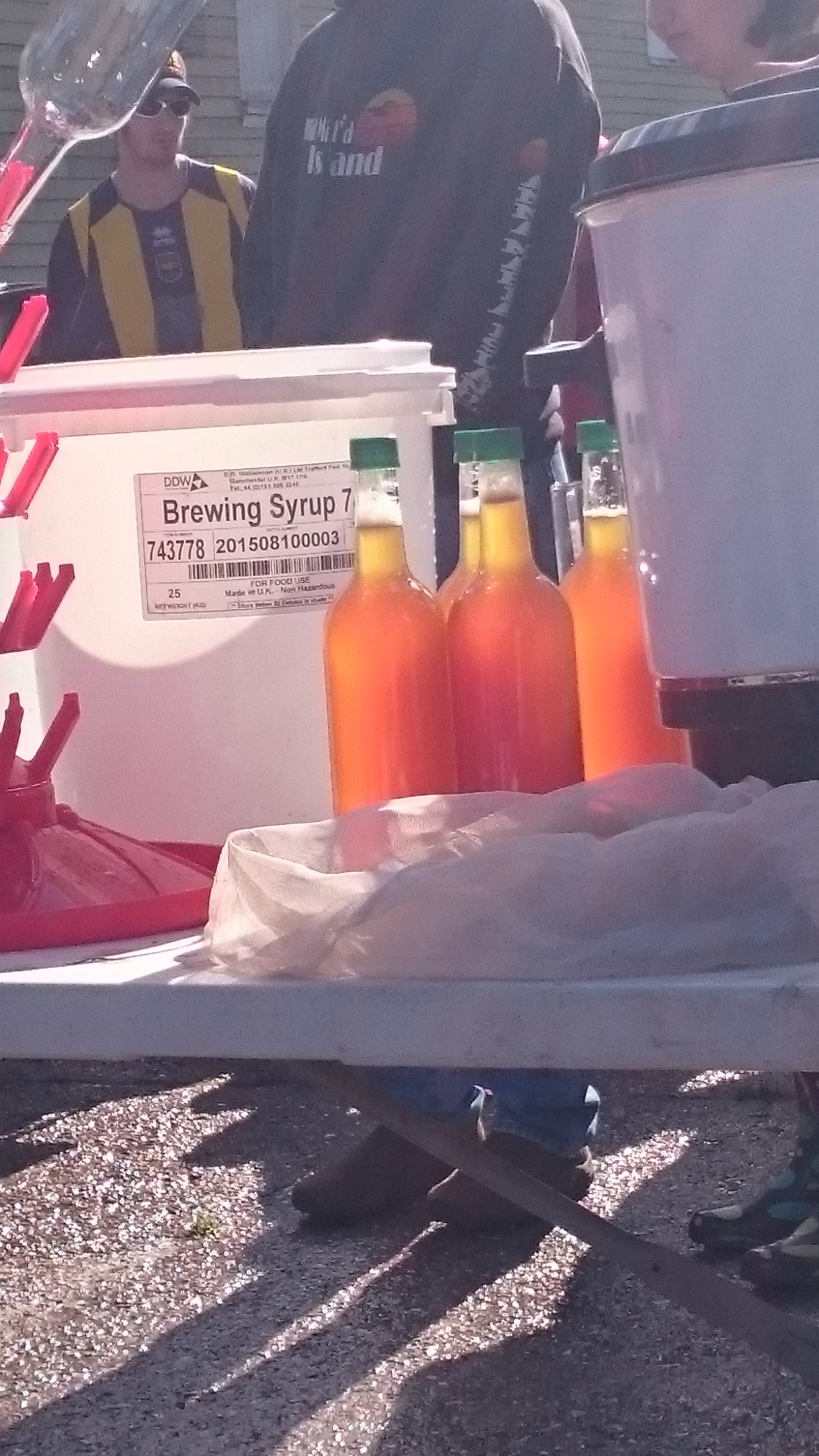
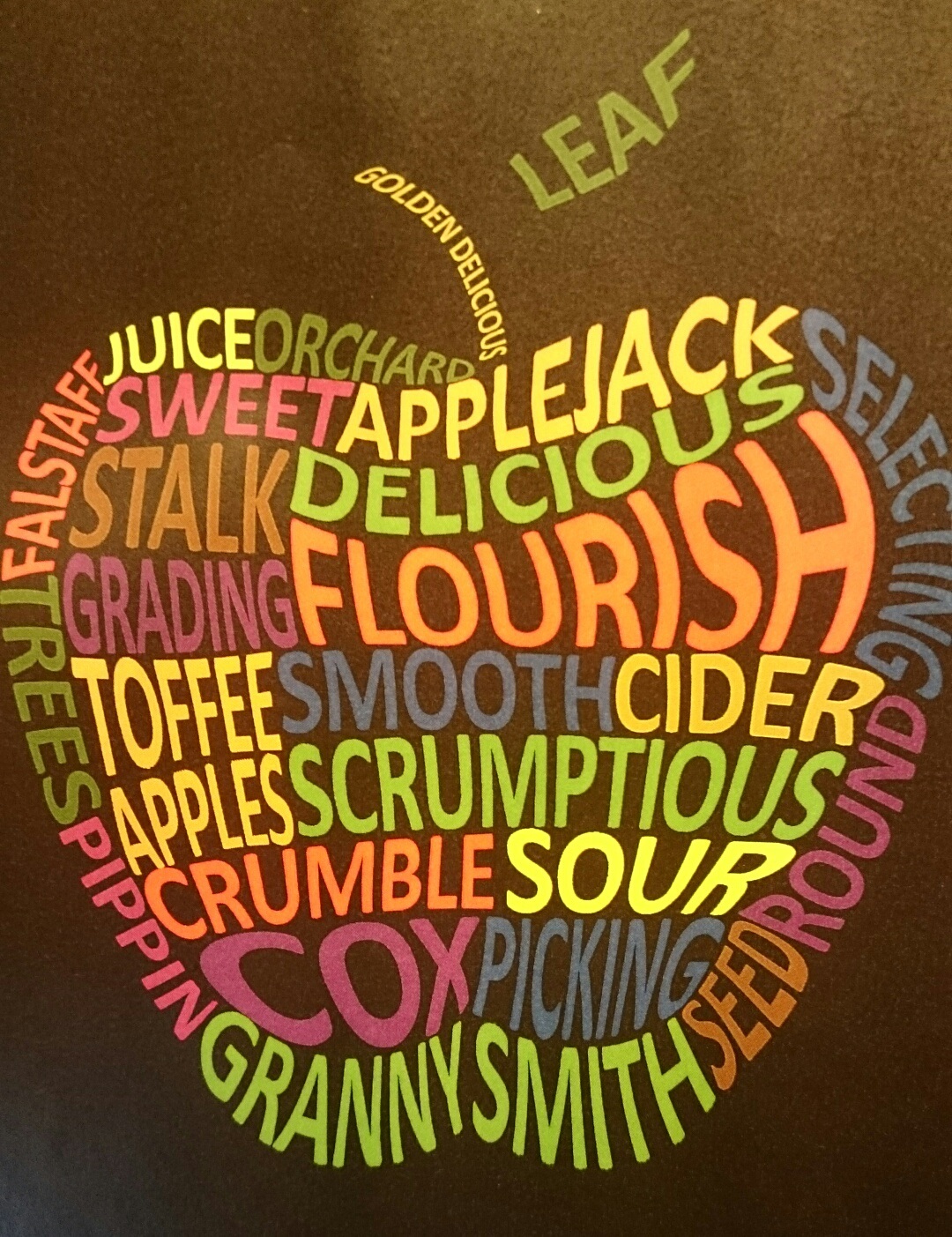
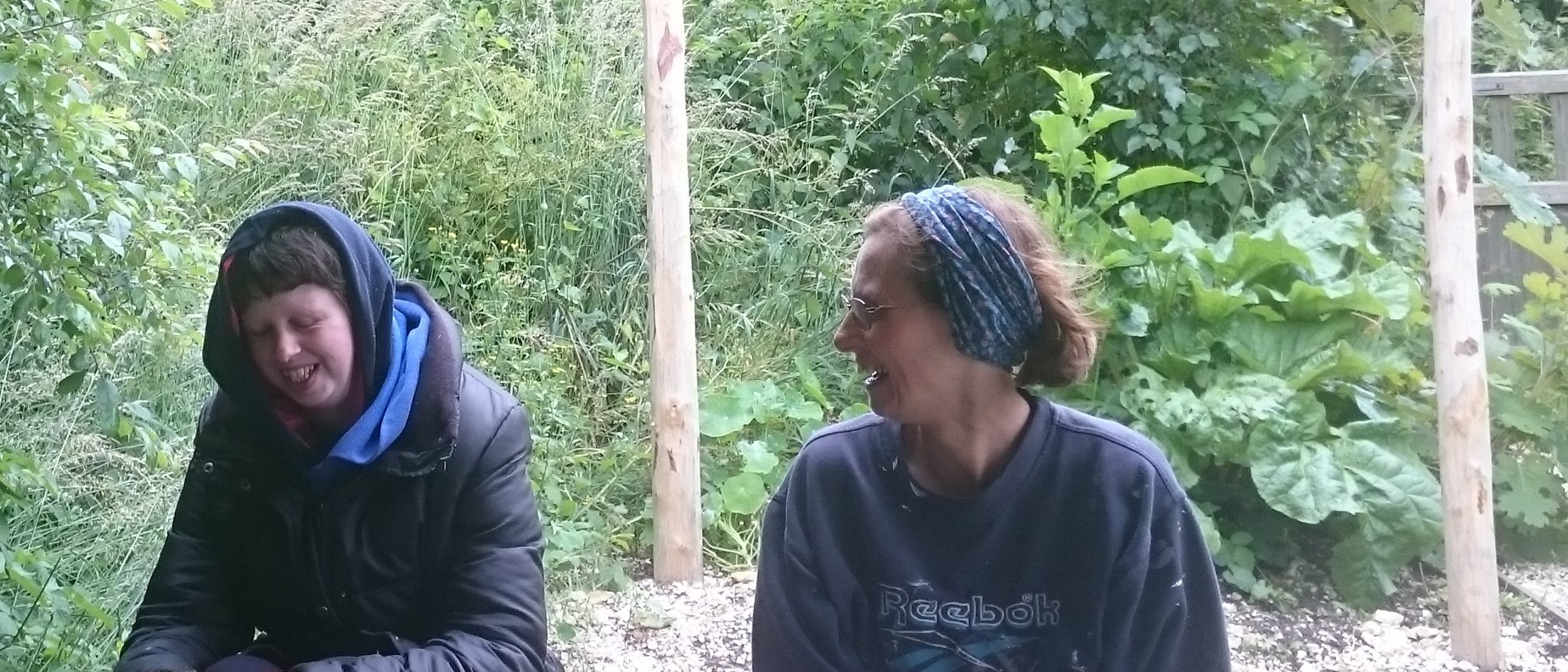
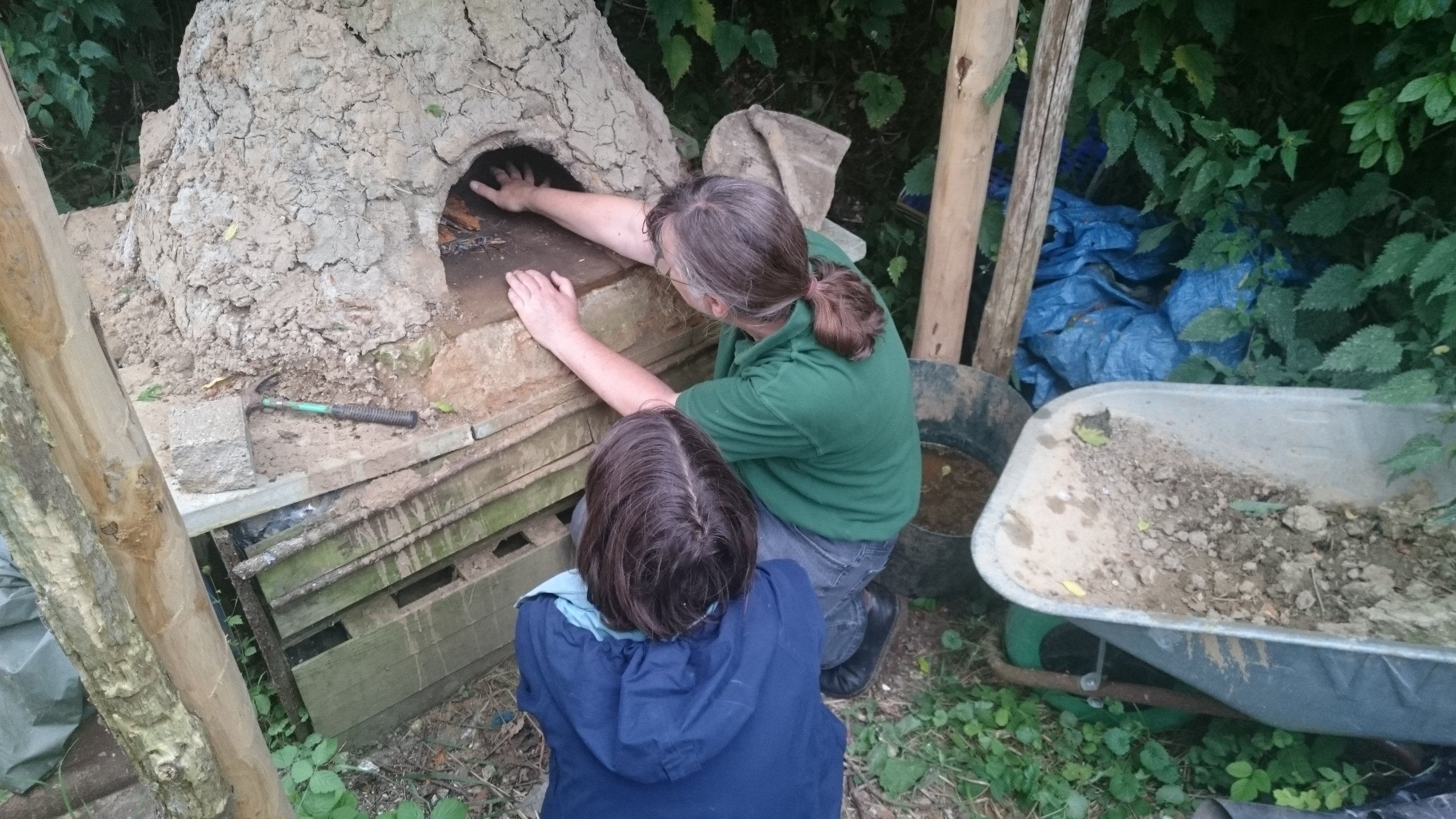
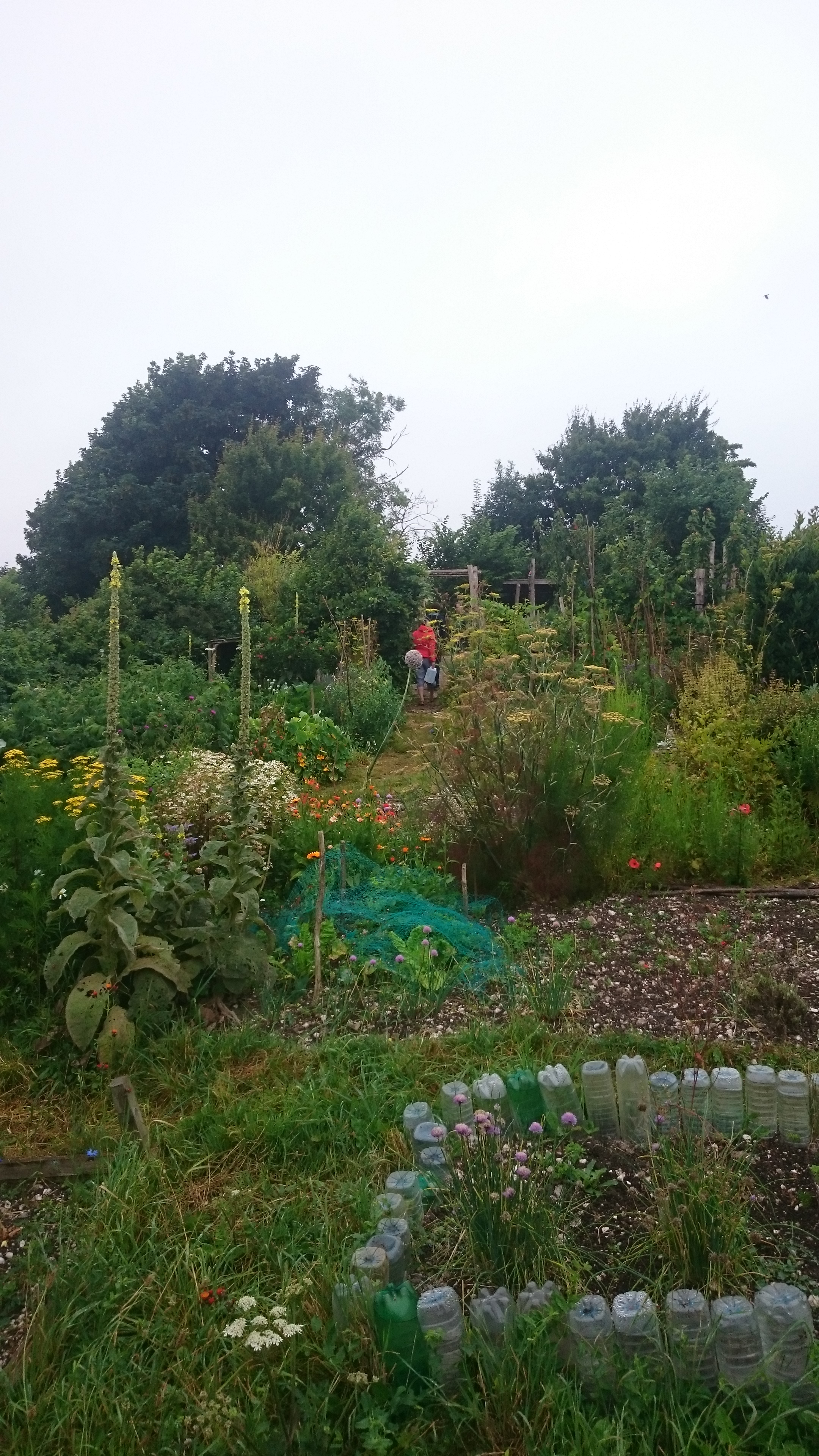
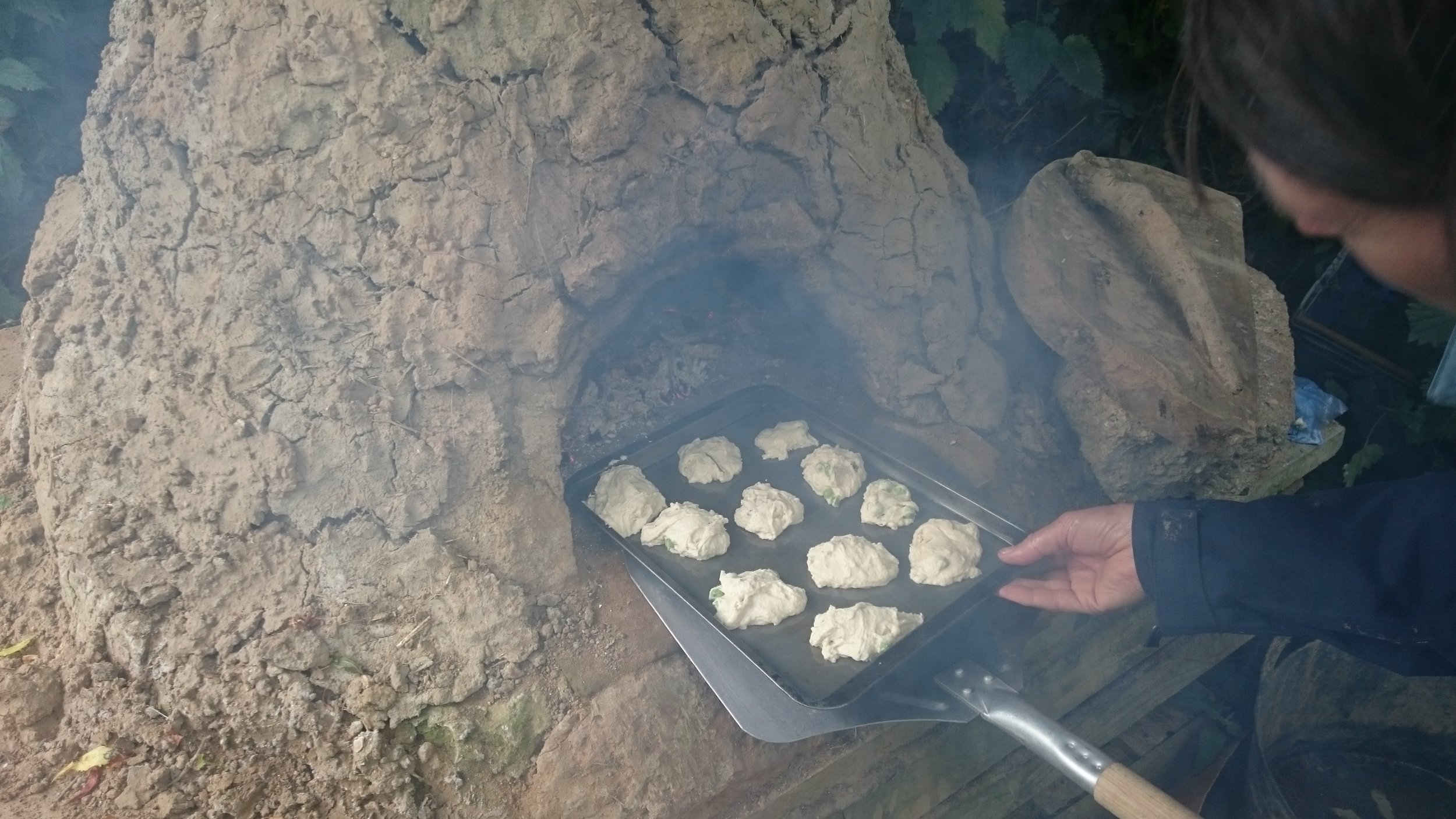
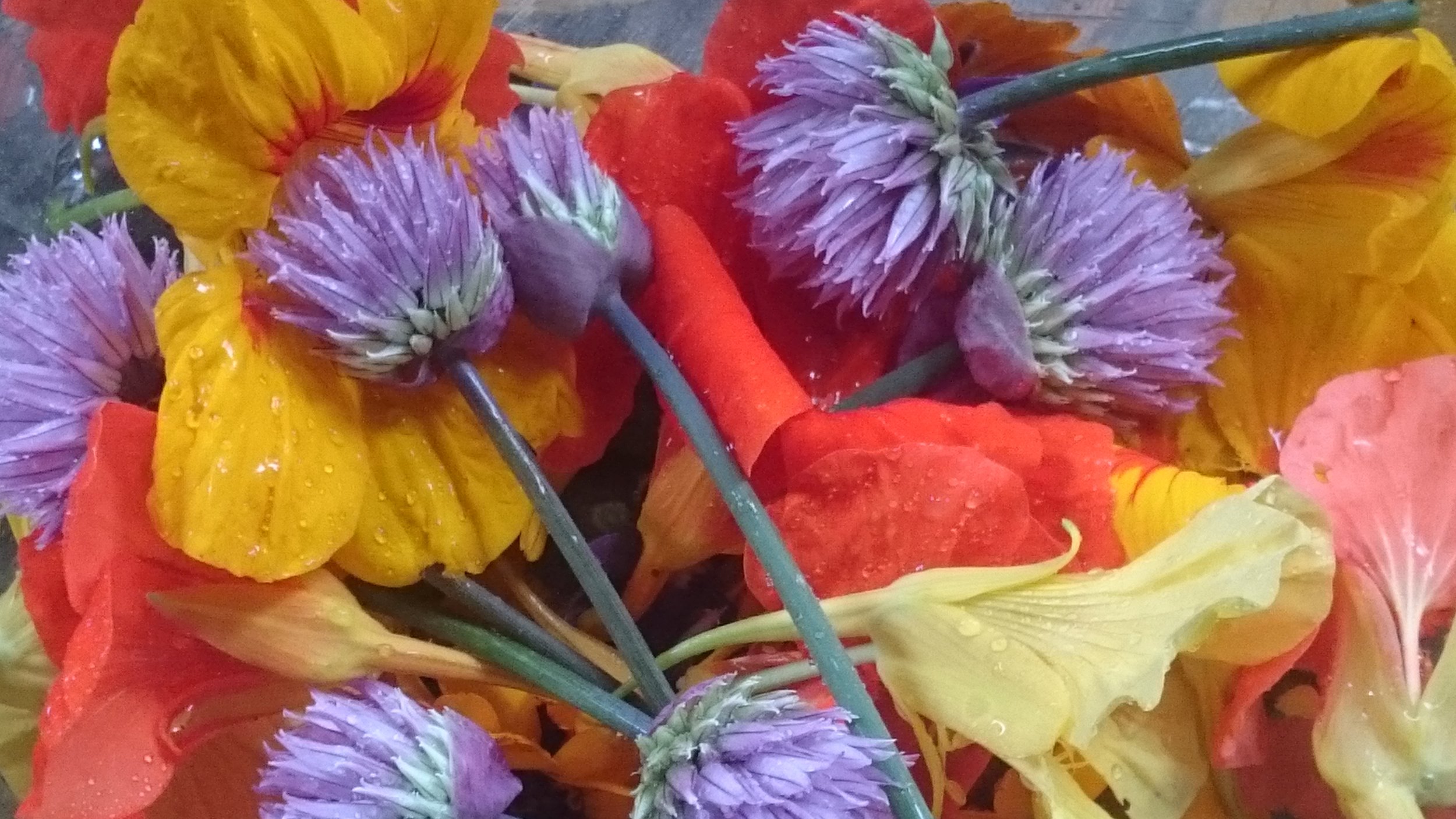 Topsy put the bread rolls into the oven and Sophie started frying the fritters in oil over the open fire. She also made a chard omelette. Emma worked with some of the group to mix fresh herbs and dressing into the potato salad, carrot and parsnip salad and green salad. We added the flowers to that and they looked beautiful.
Topsy put the bread rolls into the oven and Sophie started frying the fritters in oil over the open fire. She also made a chard omelette. Emma worked with some of the group to mix fresh herbs and dressing into the potato salad, carrot and parsnip salad and green salad. We added the flowers to that and they looked beautiful.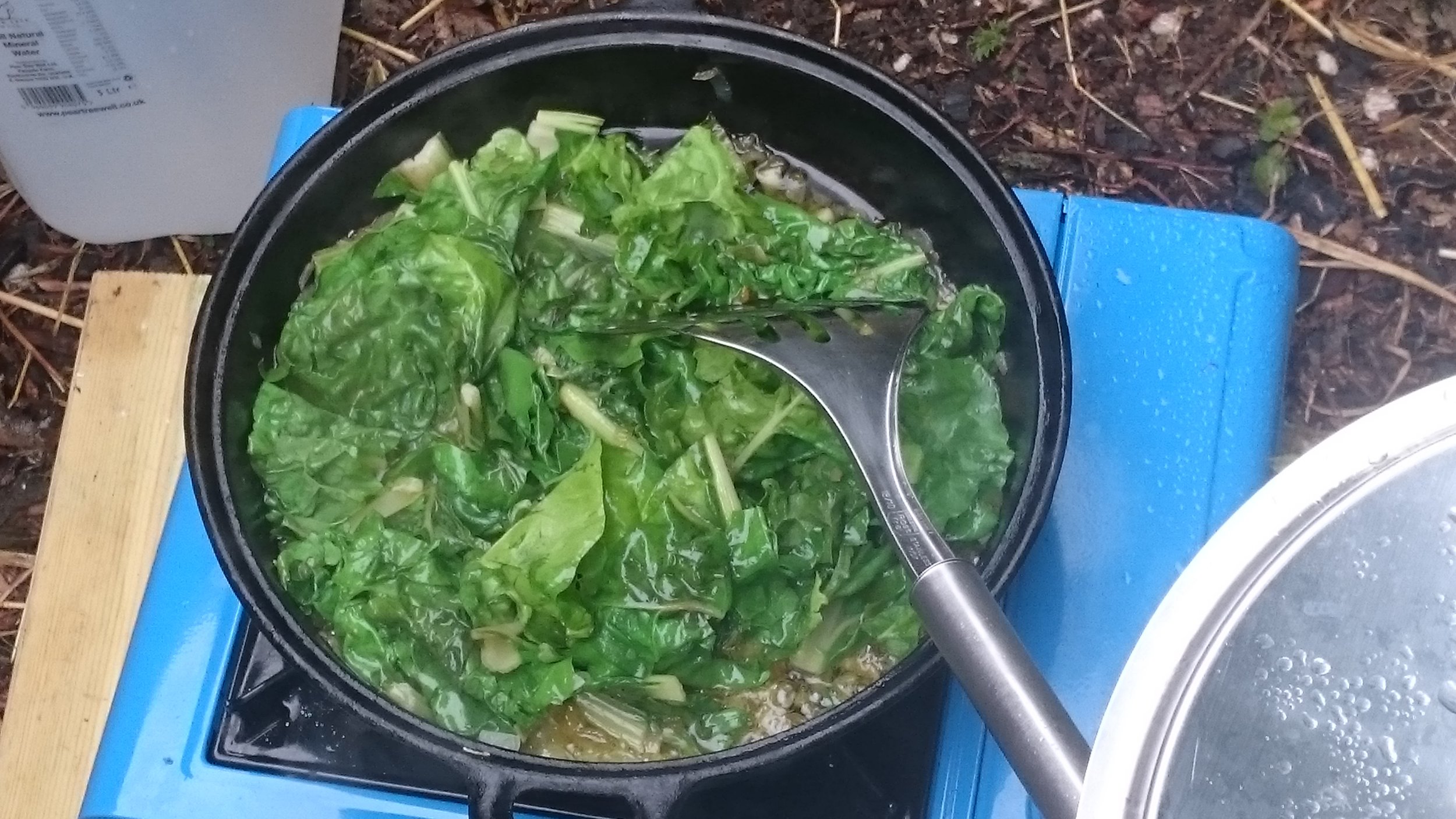
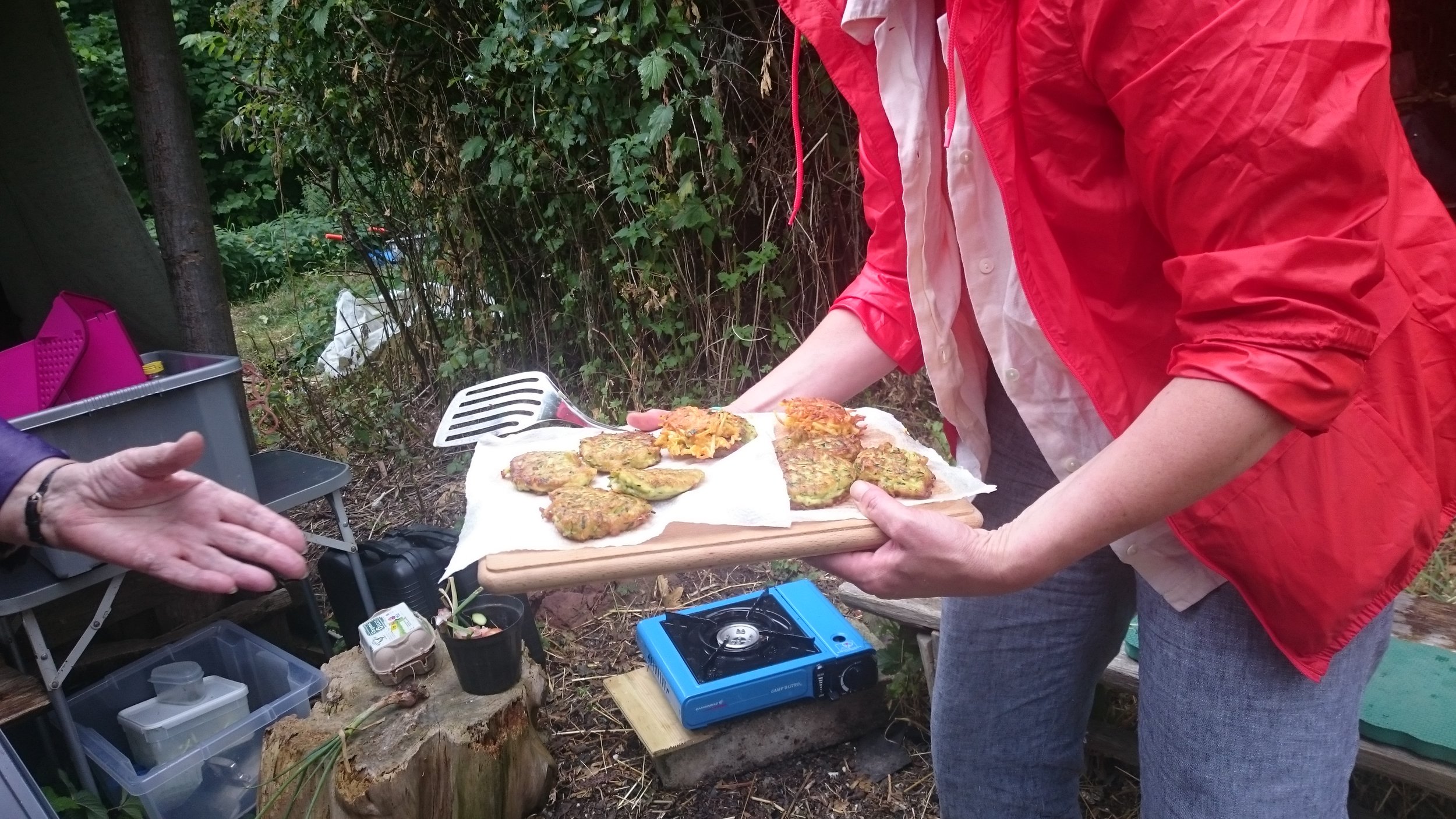
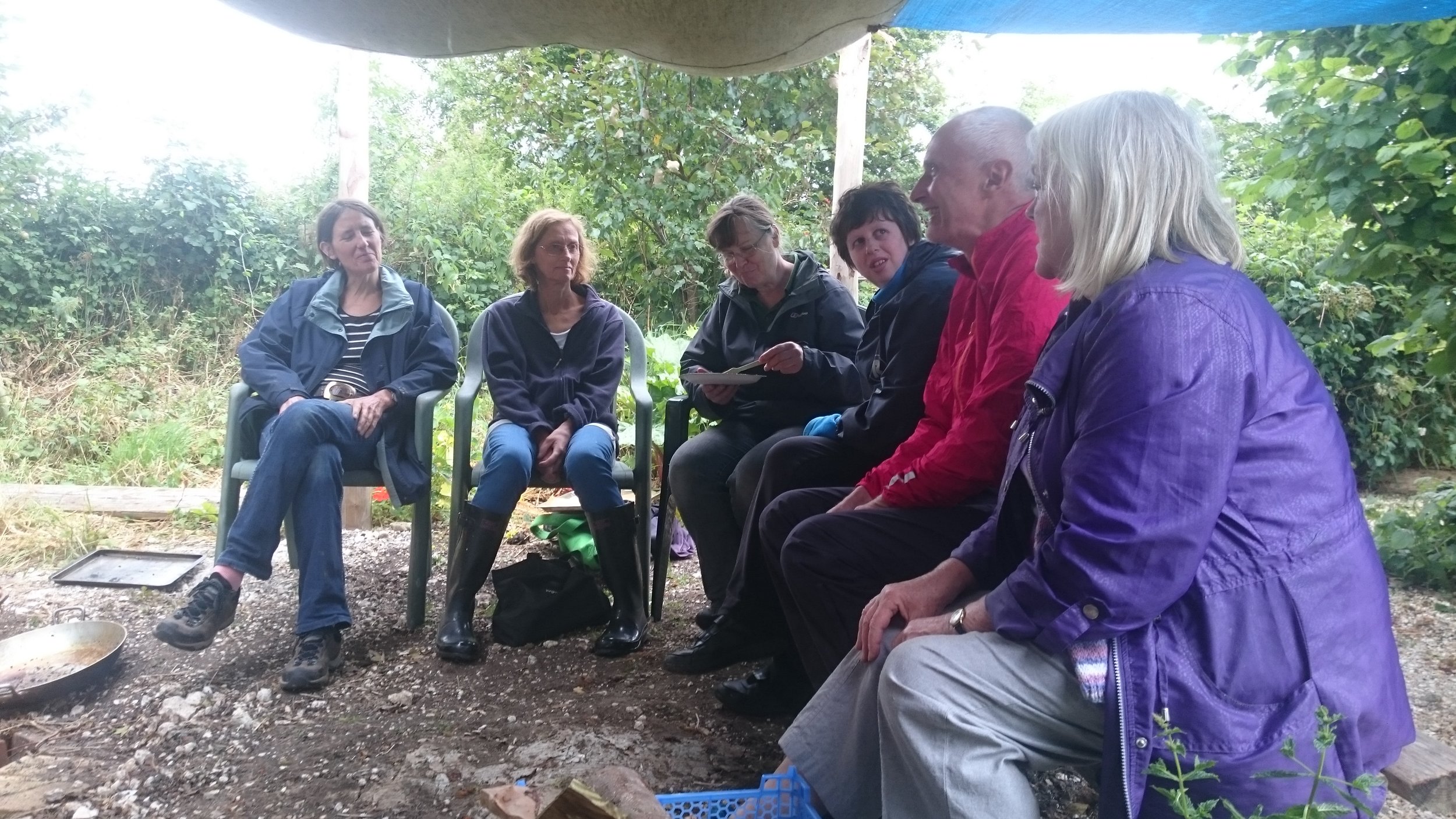
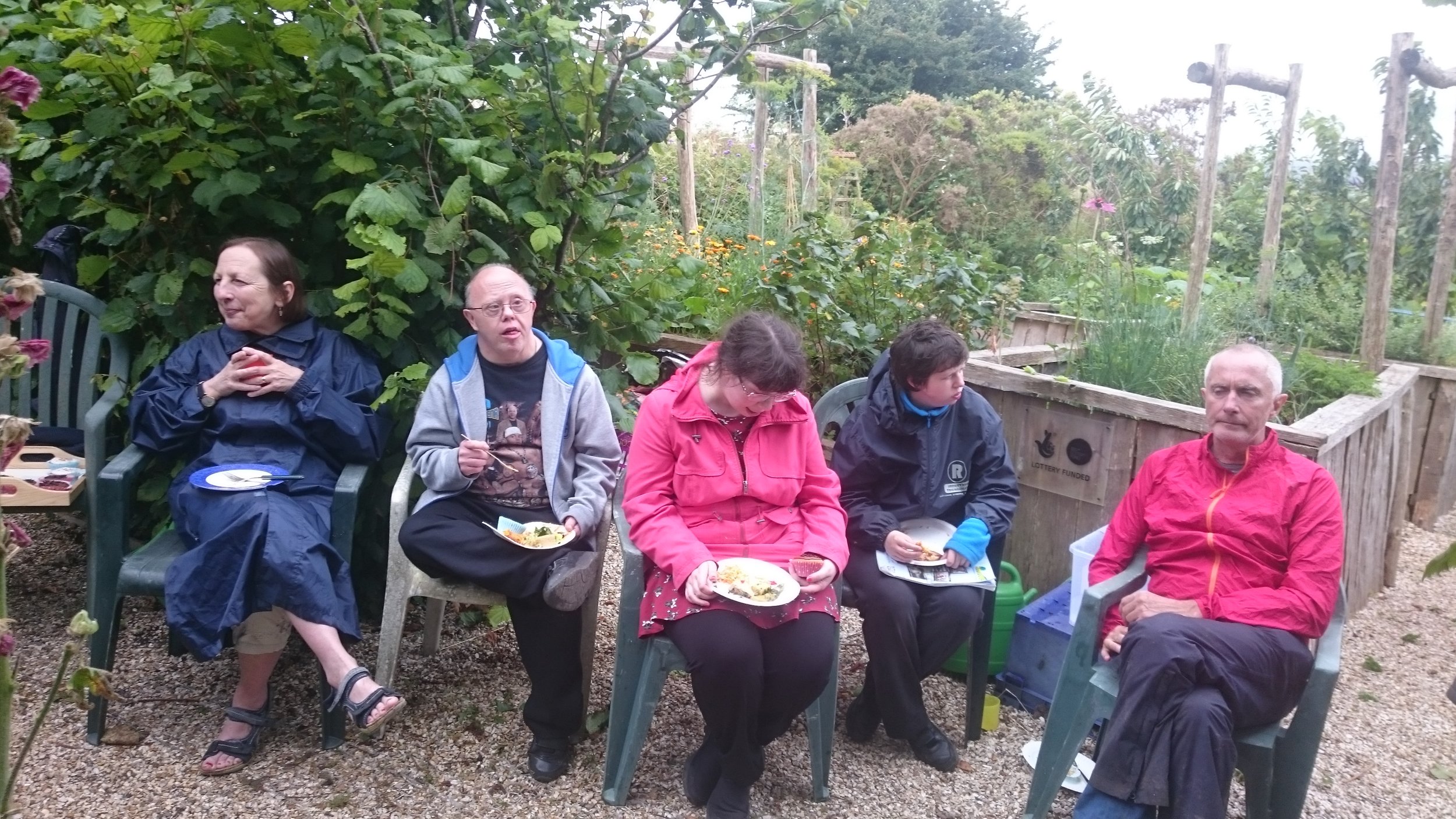
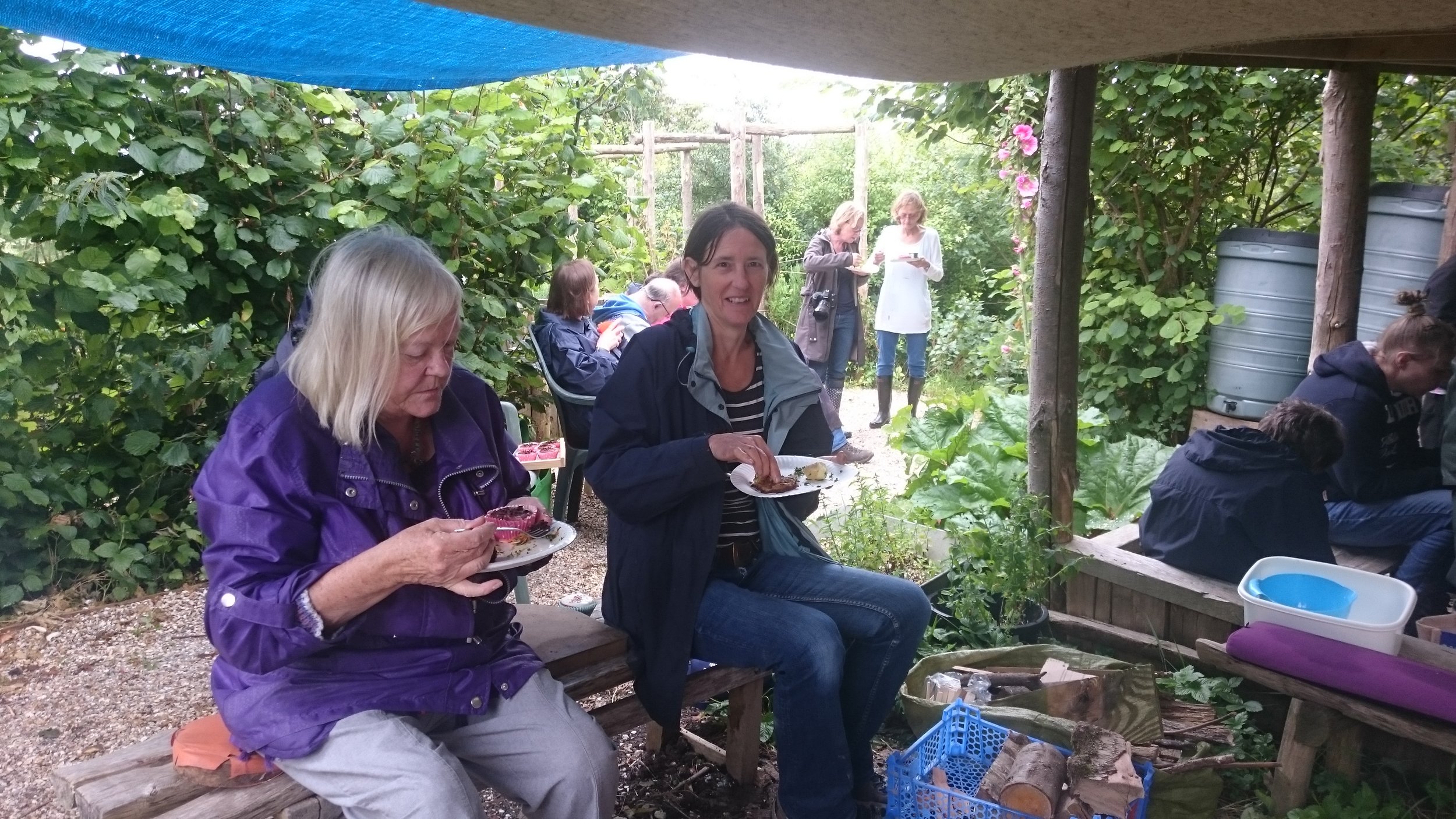
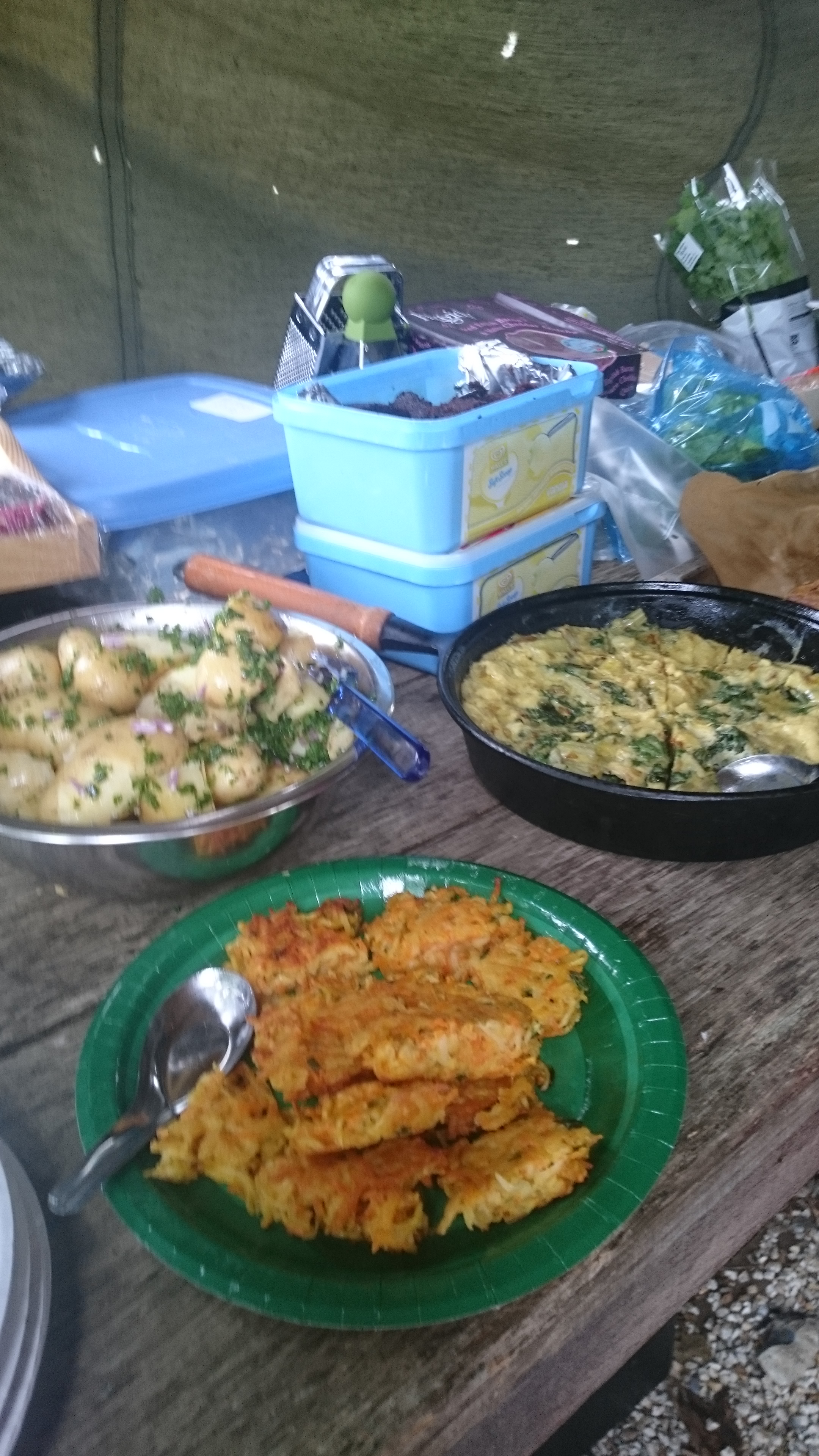
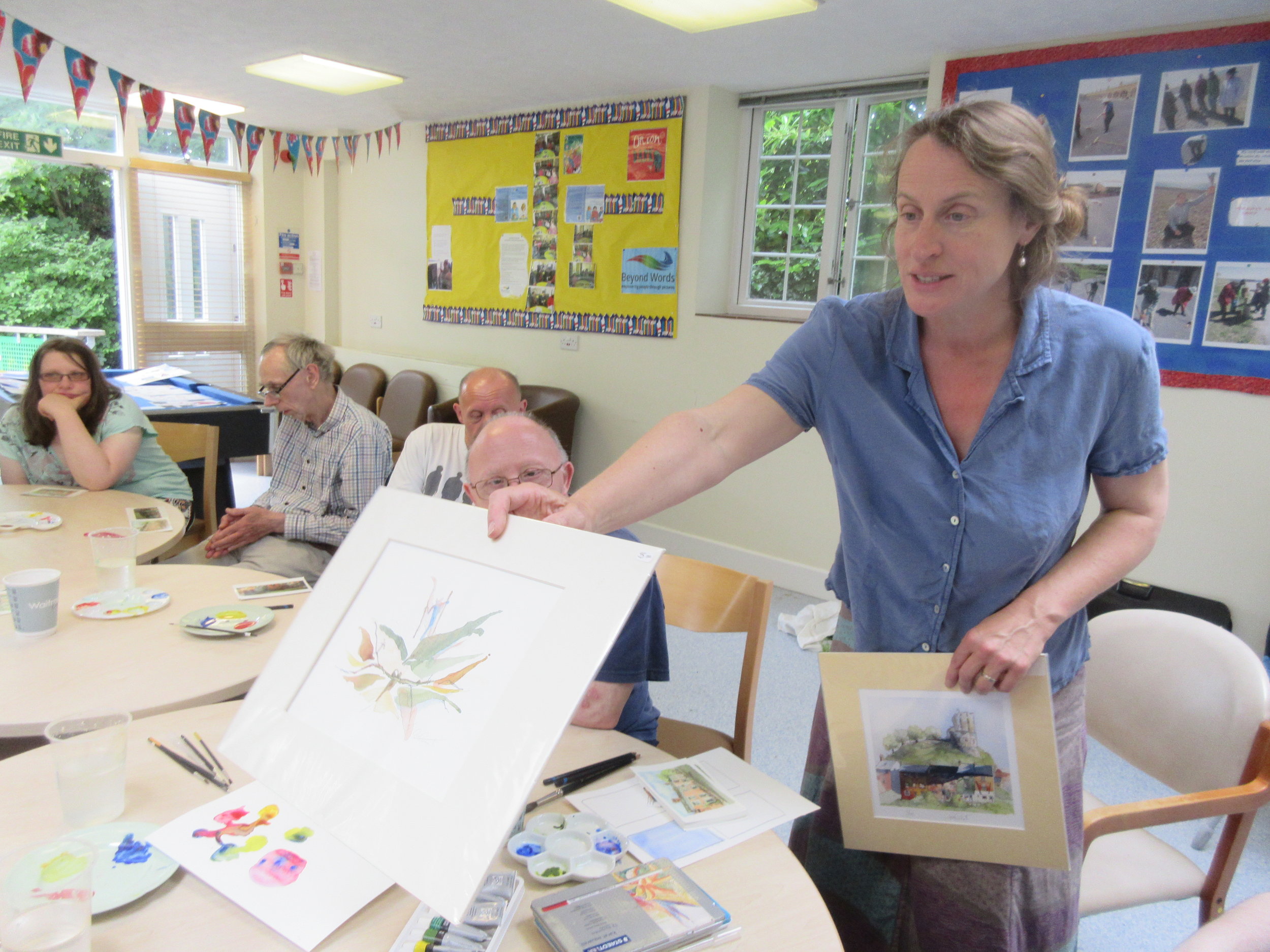 Nine regular Lewes Community Allotment clients attended a special plant and wildlife-themed art session that Flourish organised to take place on Wednesday 20 July. This was run by Ruth Baker, a local watercolour artist.
The art class was held at the St Nicholas Day Centre instead of our allotment, because of the extremely hot weather. This was useful in terms of spreading out and being able to change water frequently.
Nine regular Lewes Community Allotment clients attended a special plant and wildlife-themed art session that Flourish organised to take place on Wednesday 20 July. This was run by Ruth Baker, a local watercolour artist.
The art class was held at the St Nicholas Day Centre instead of our allotment, because of the extremely hot weather. This was useful in terms of spreading out and being able to change water frequently.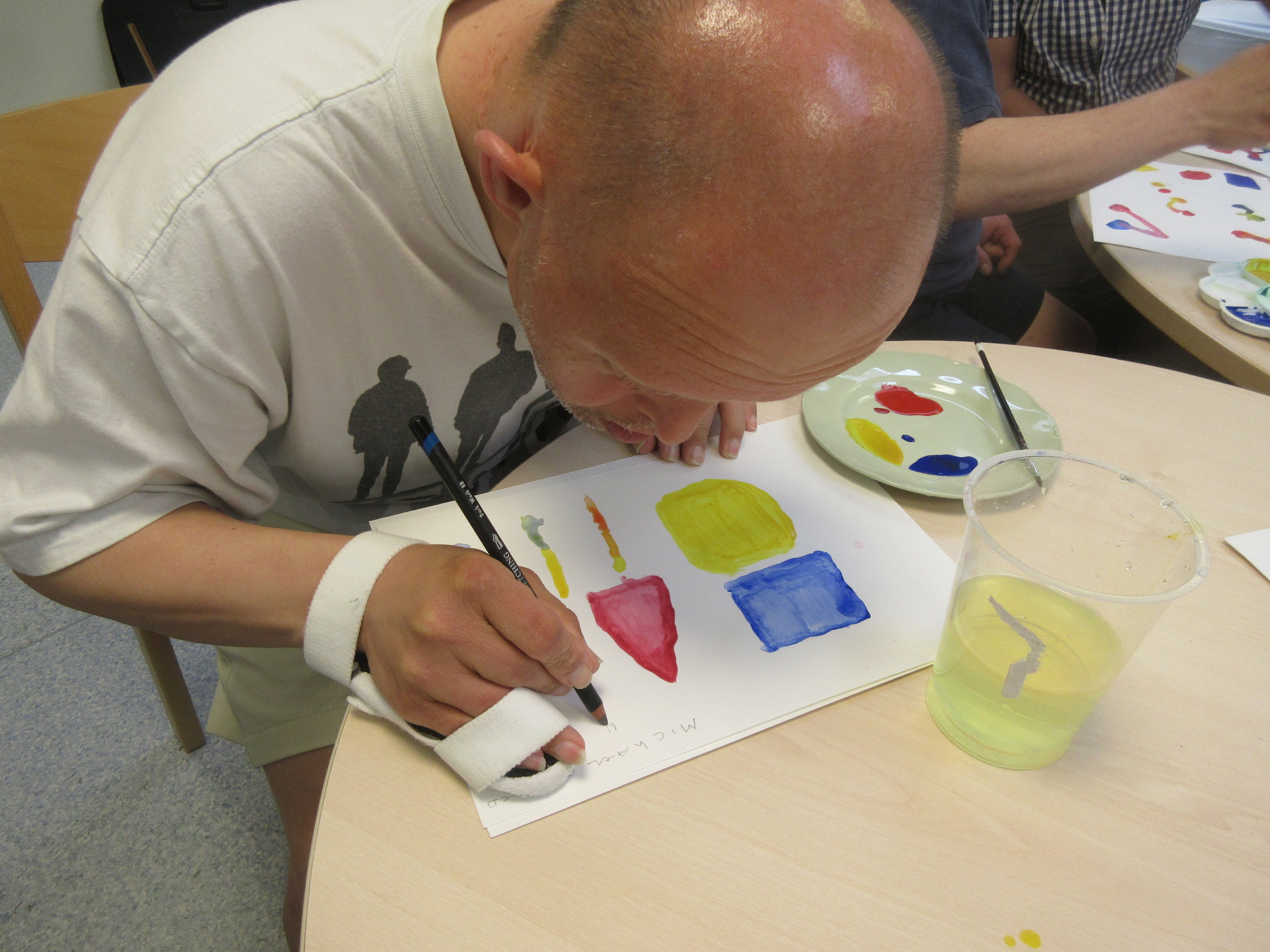
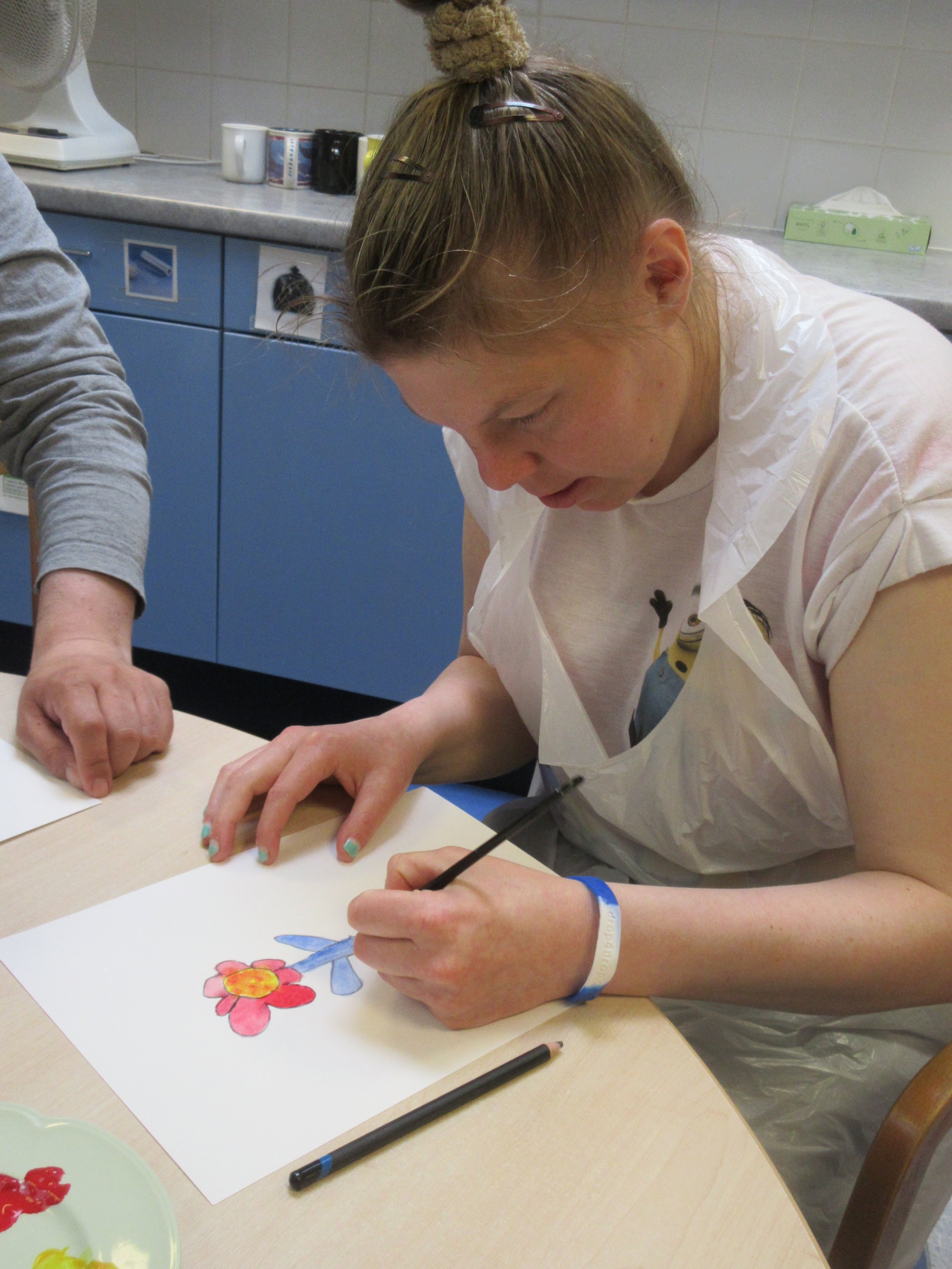
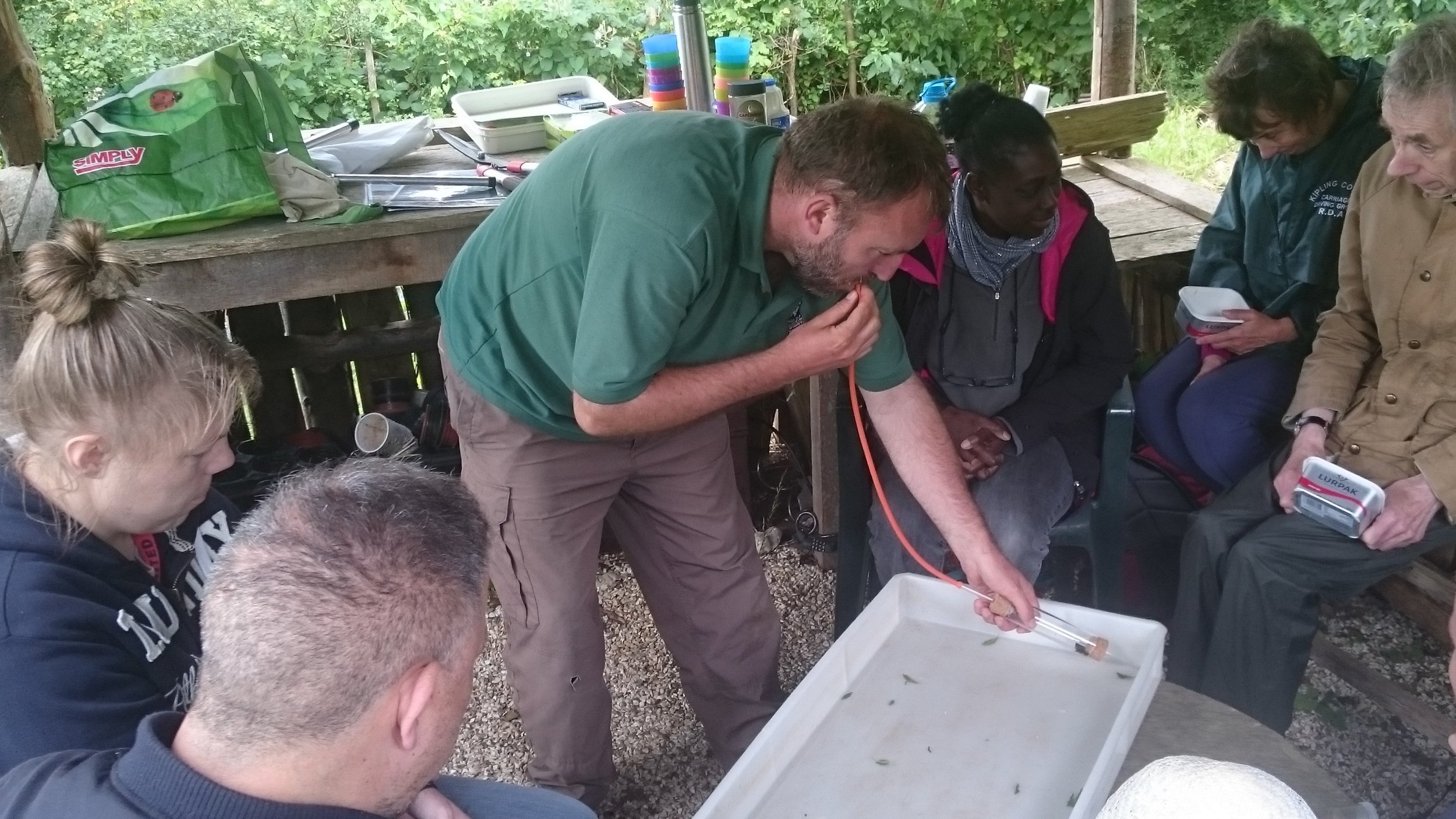 Wed 29 June 2016
Wed 29 June 2016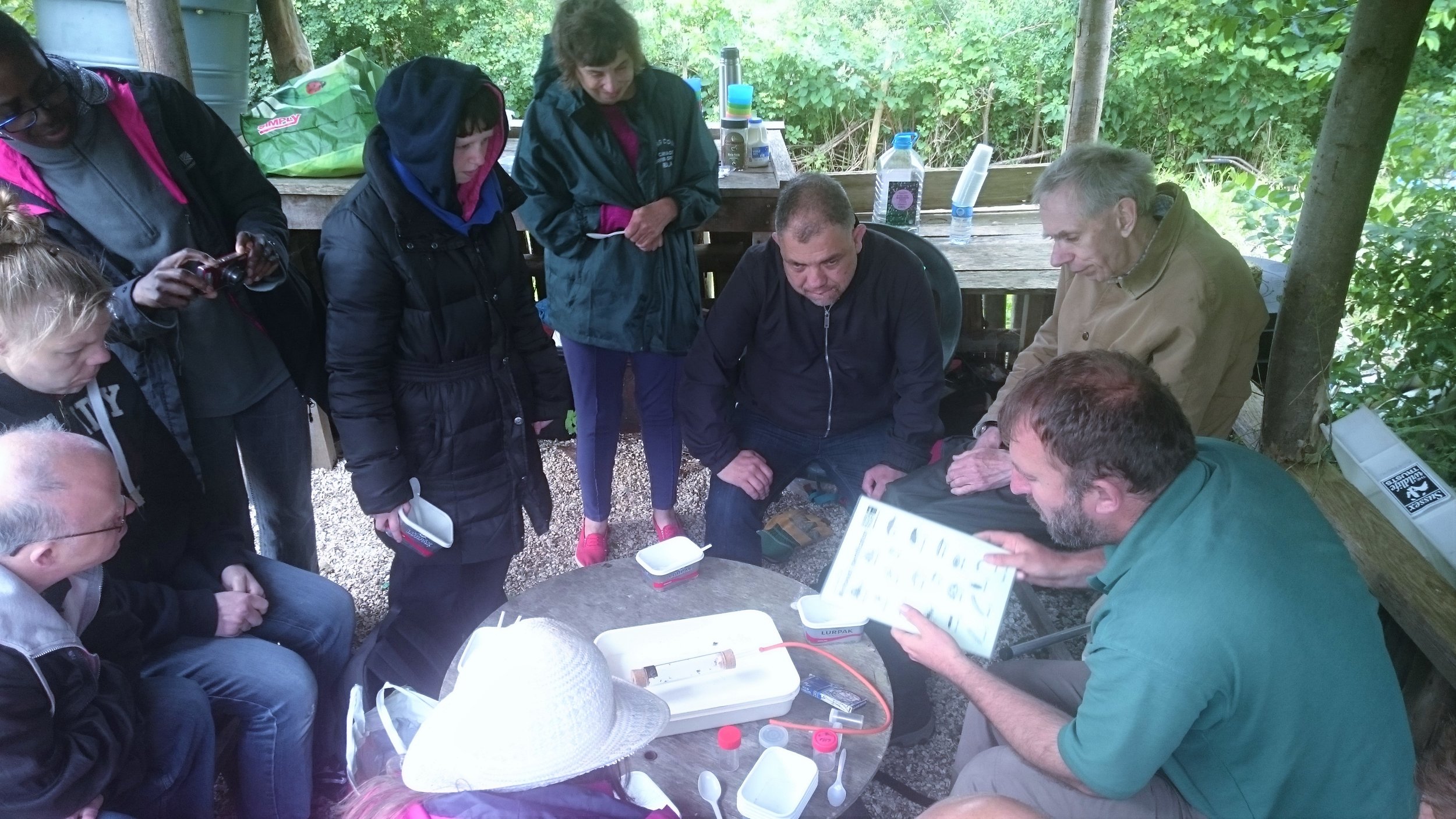 Michael's Talk
Michael's Talk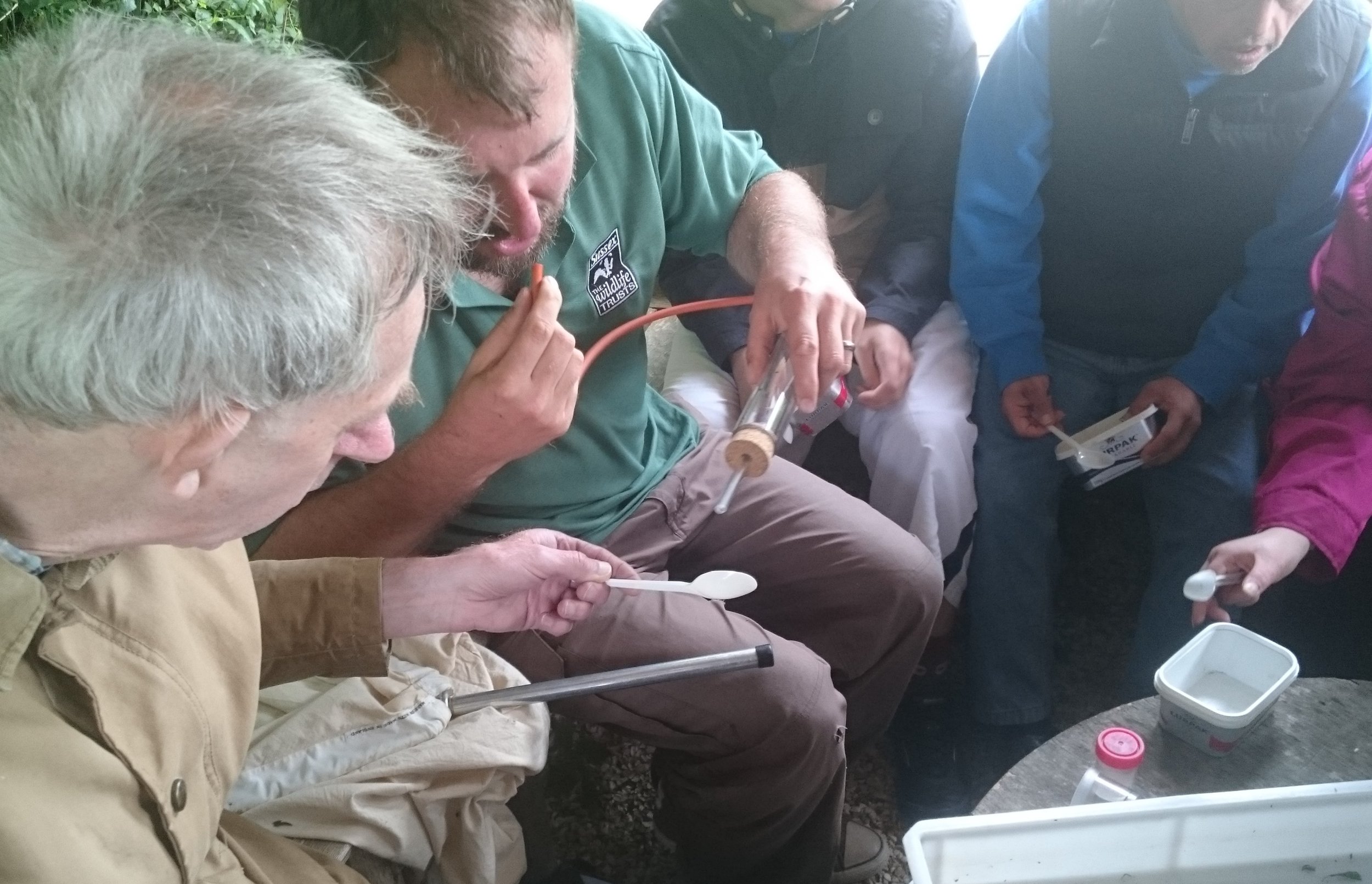
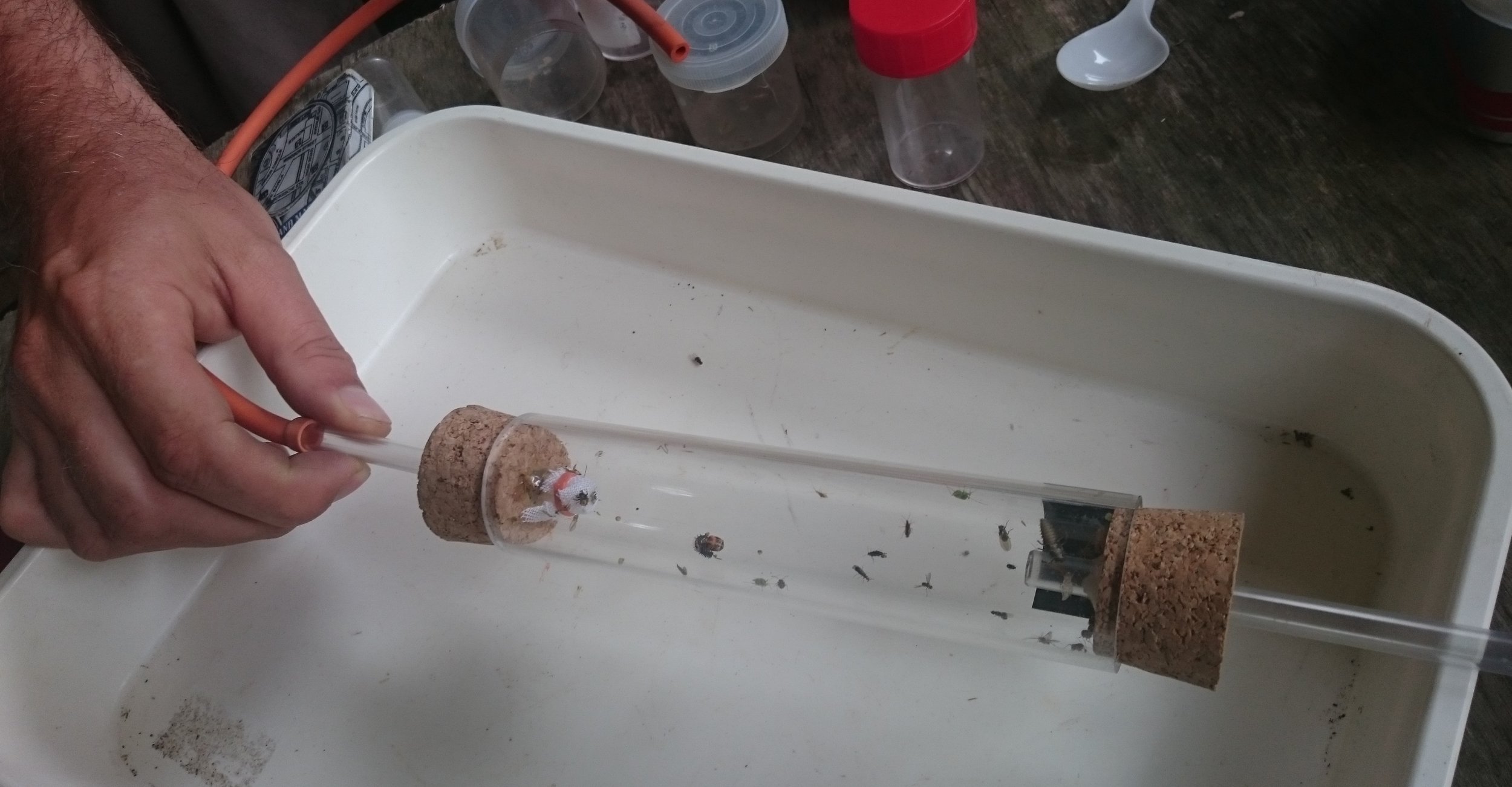
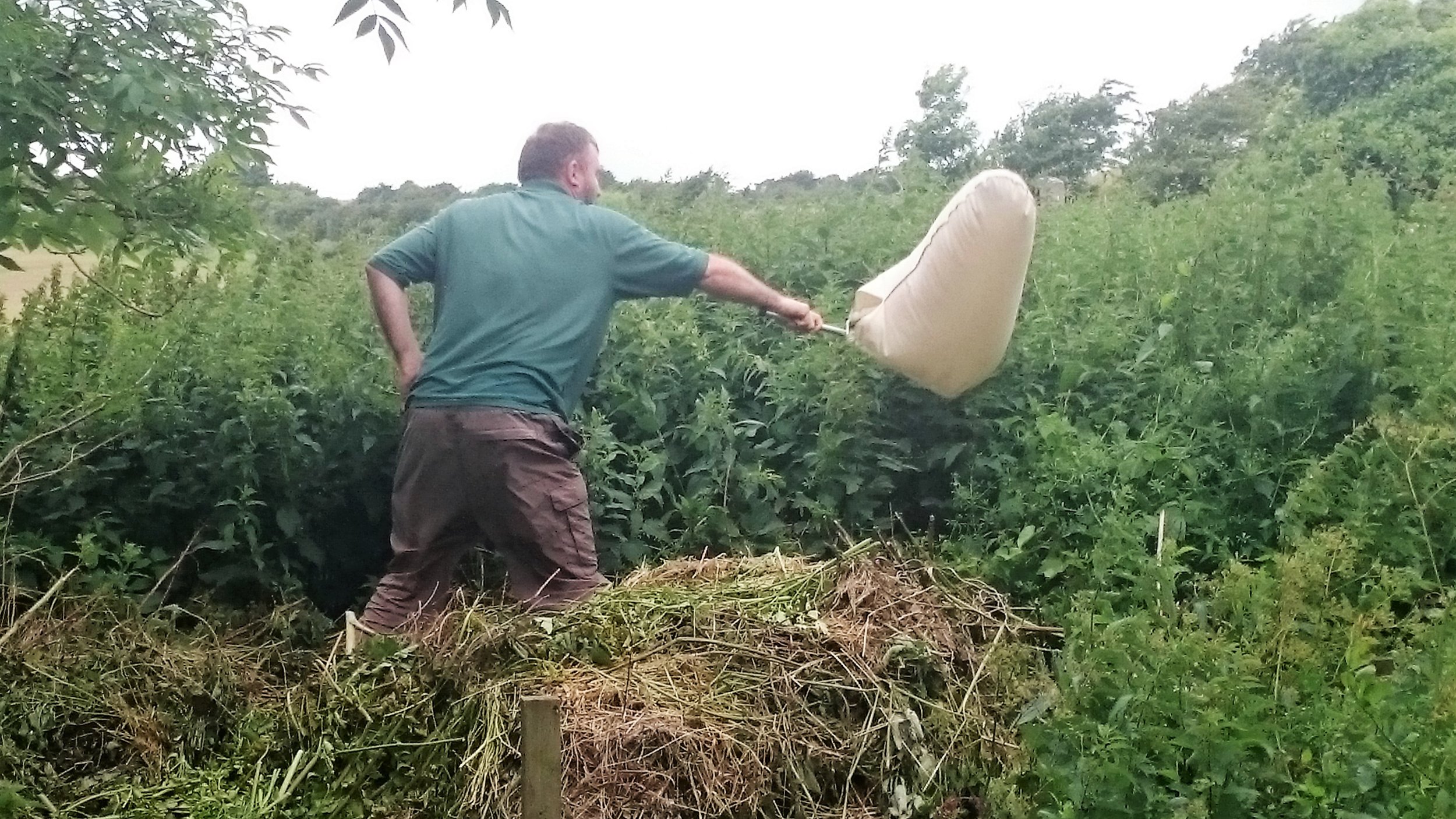
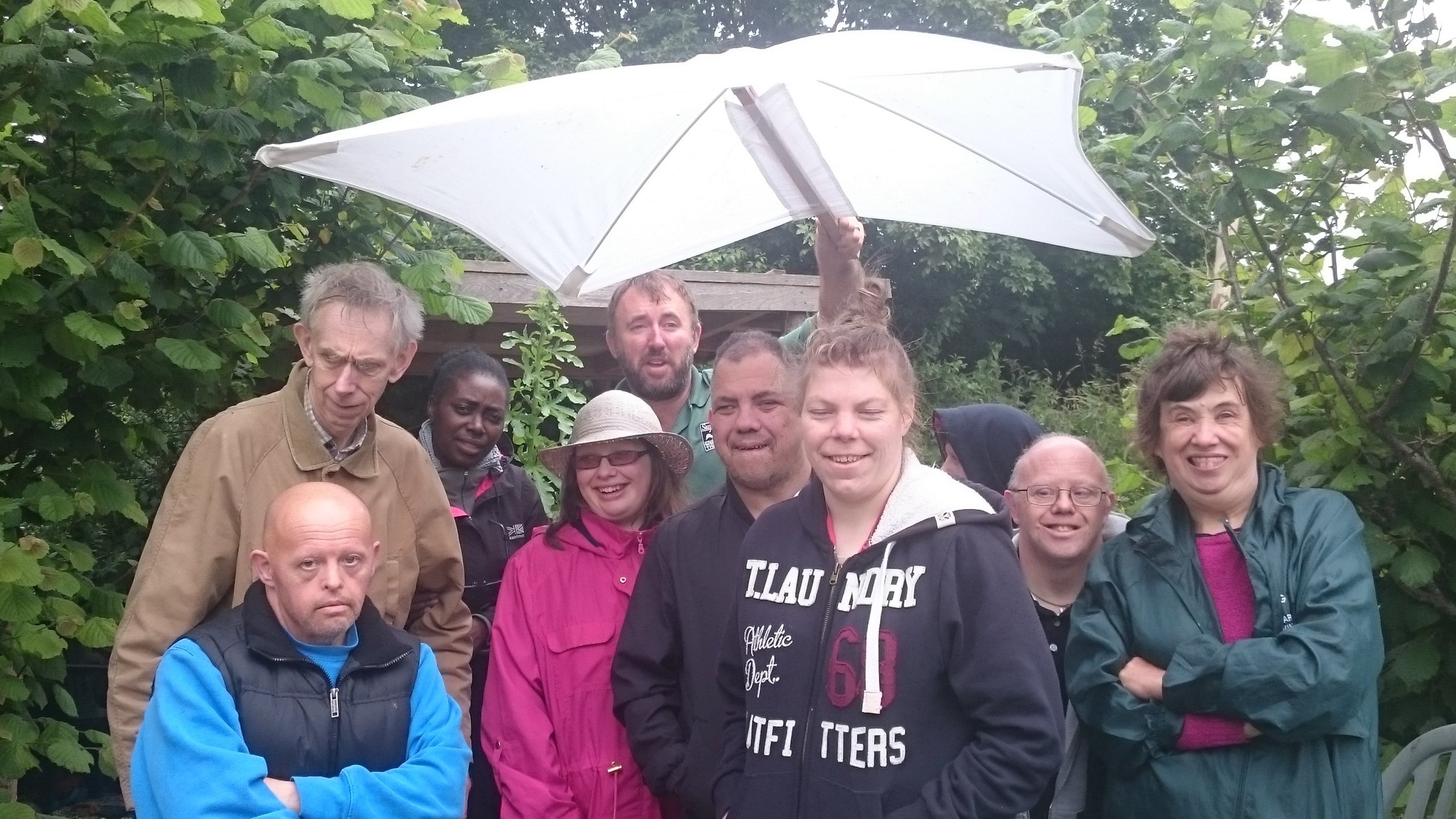
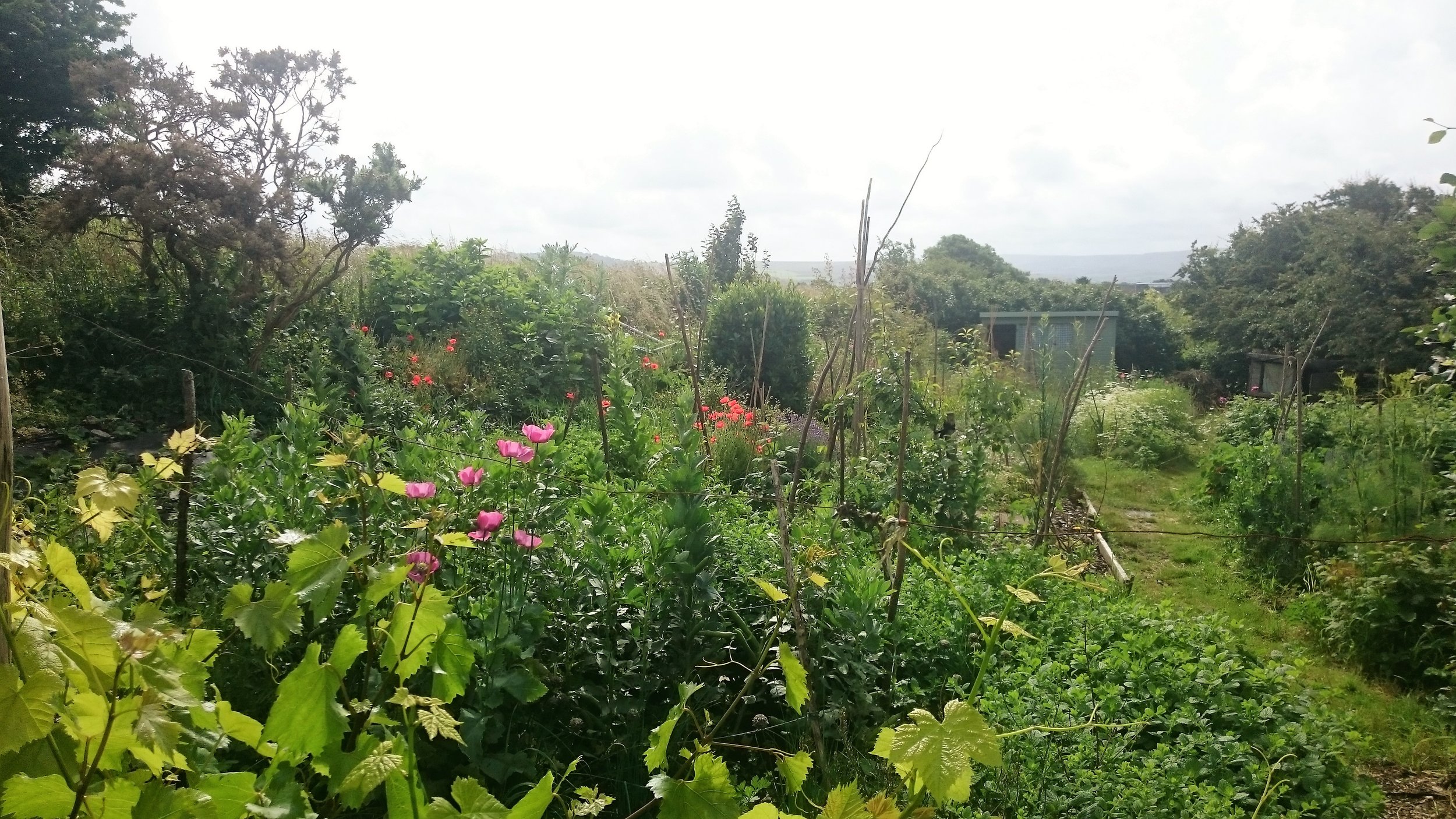
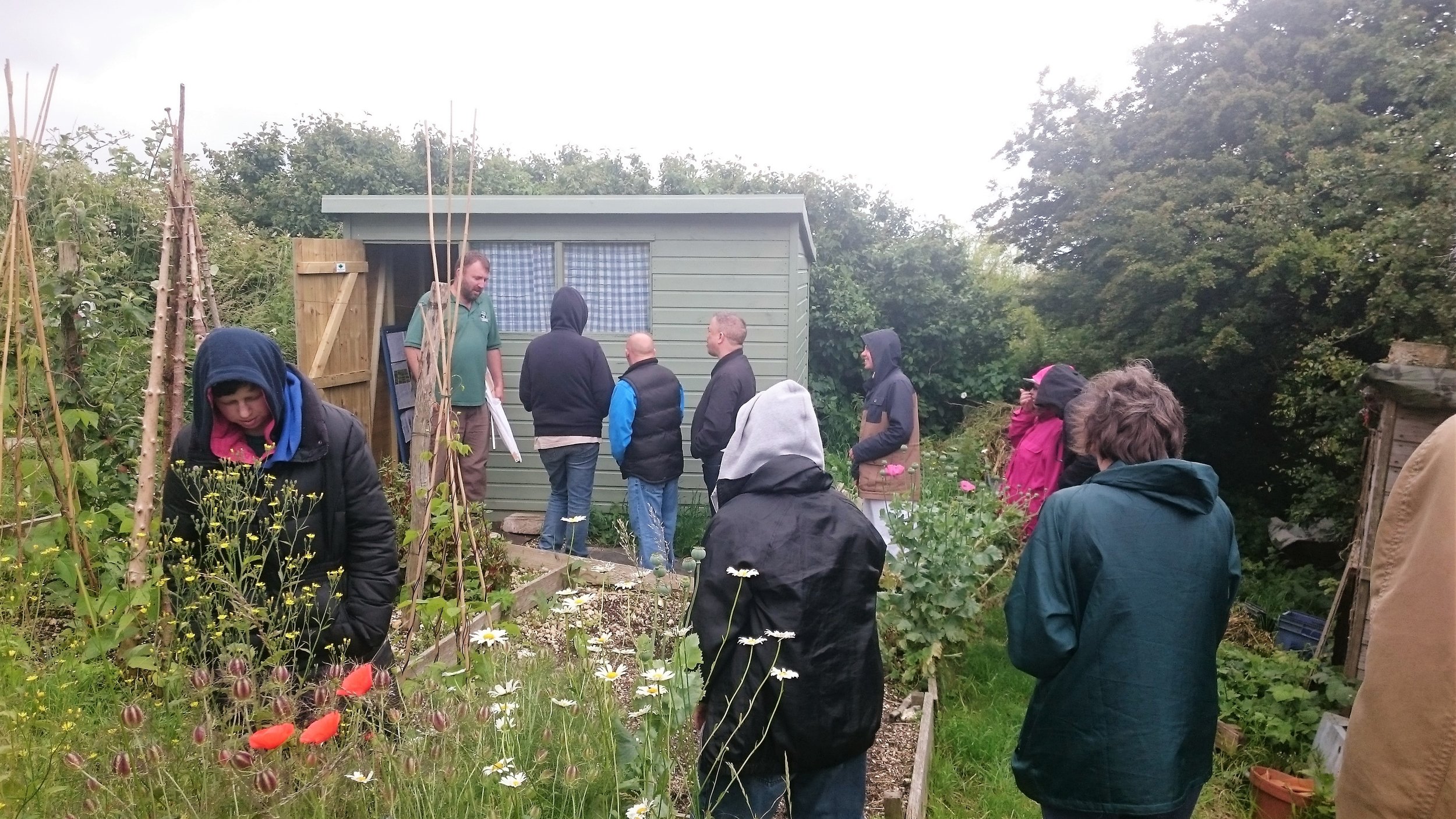
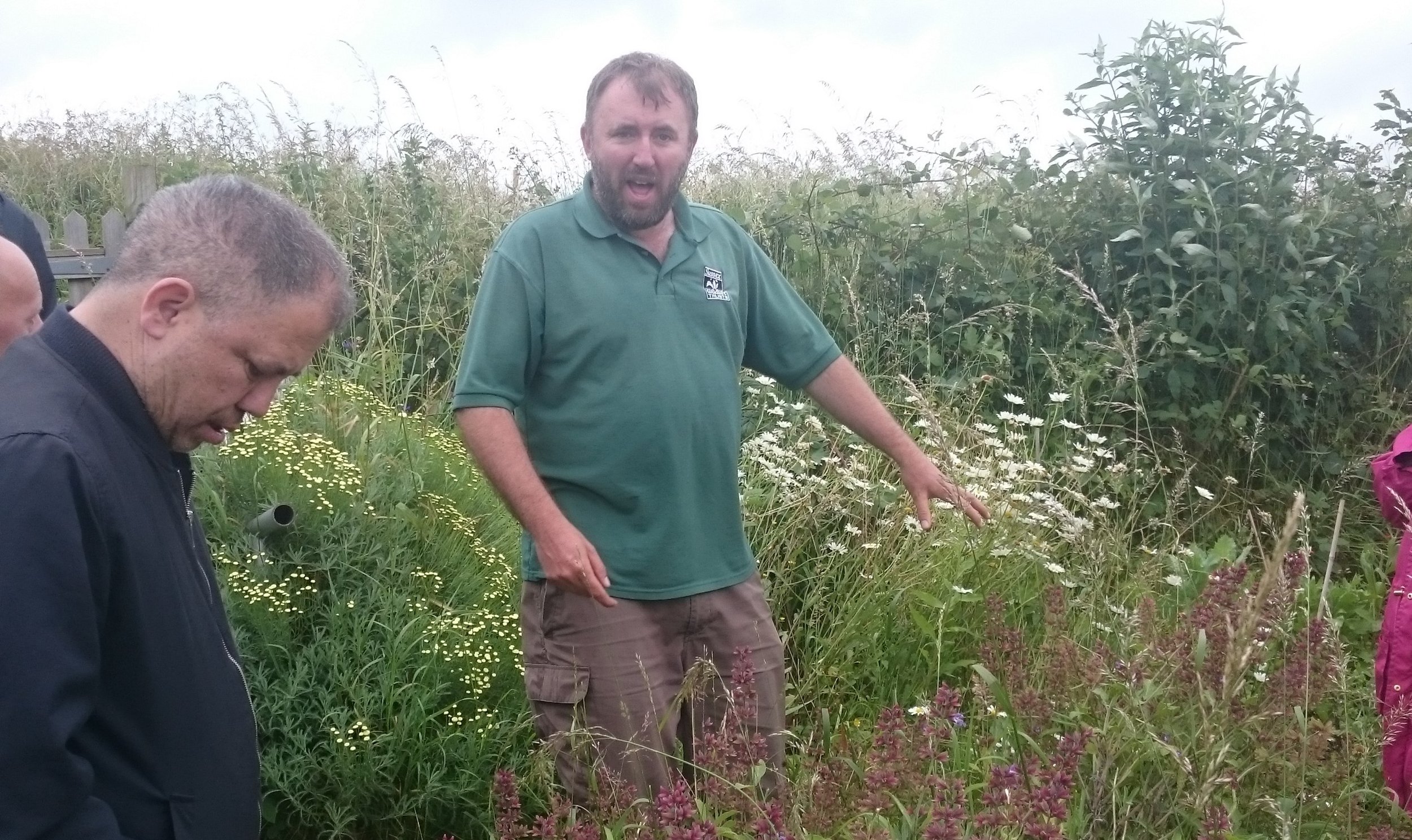
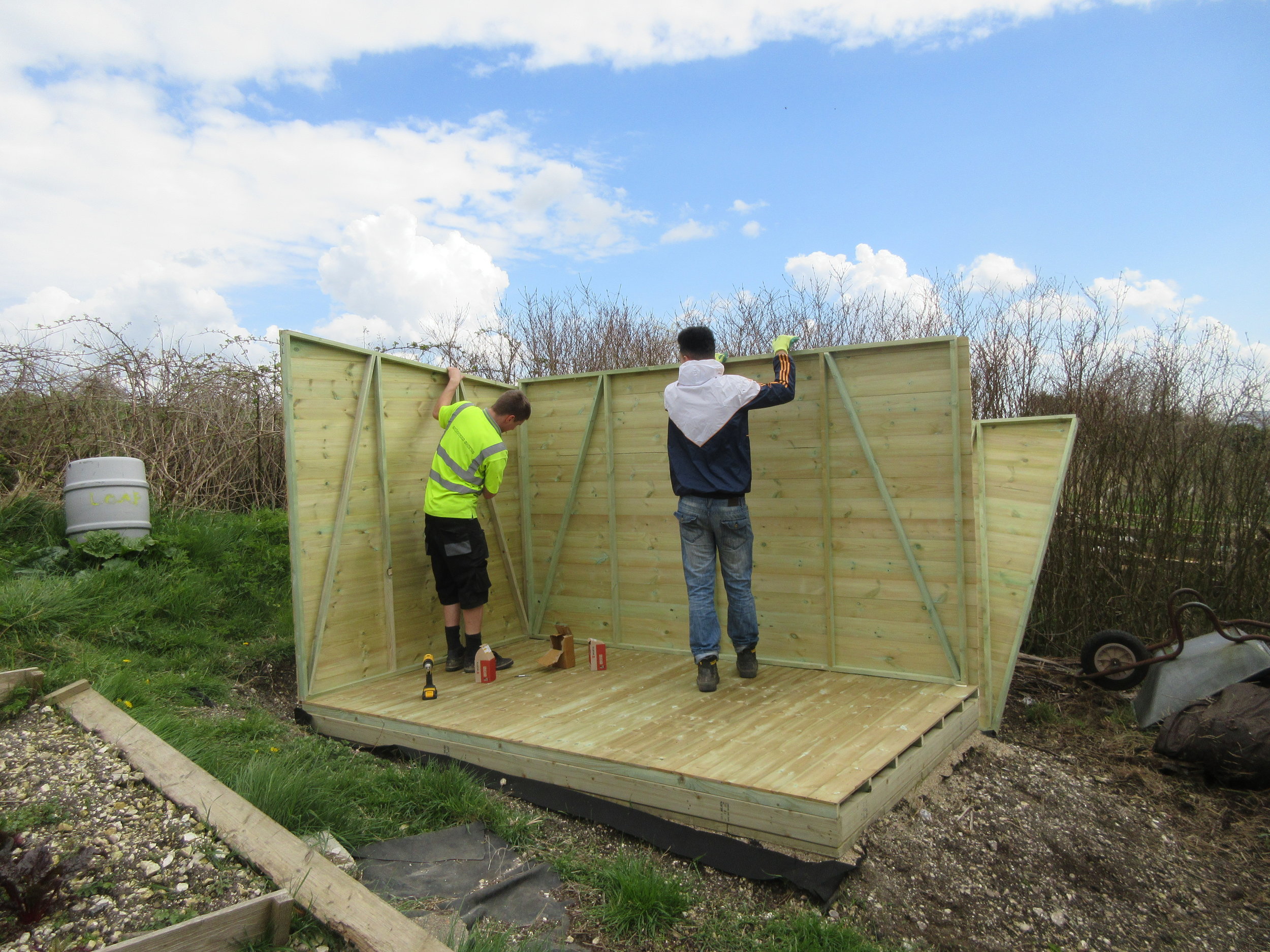
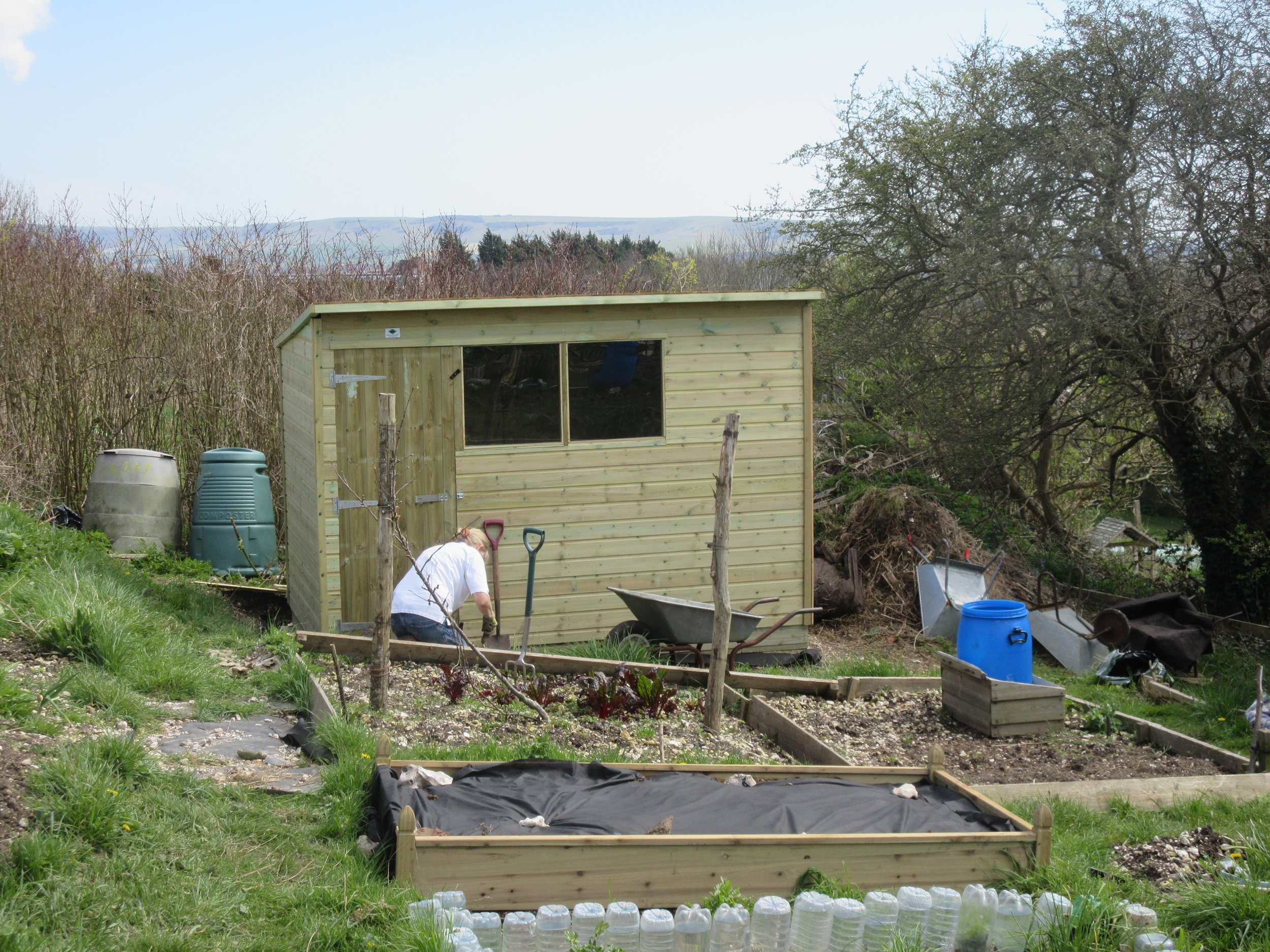
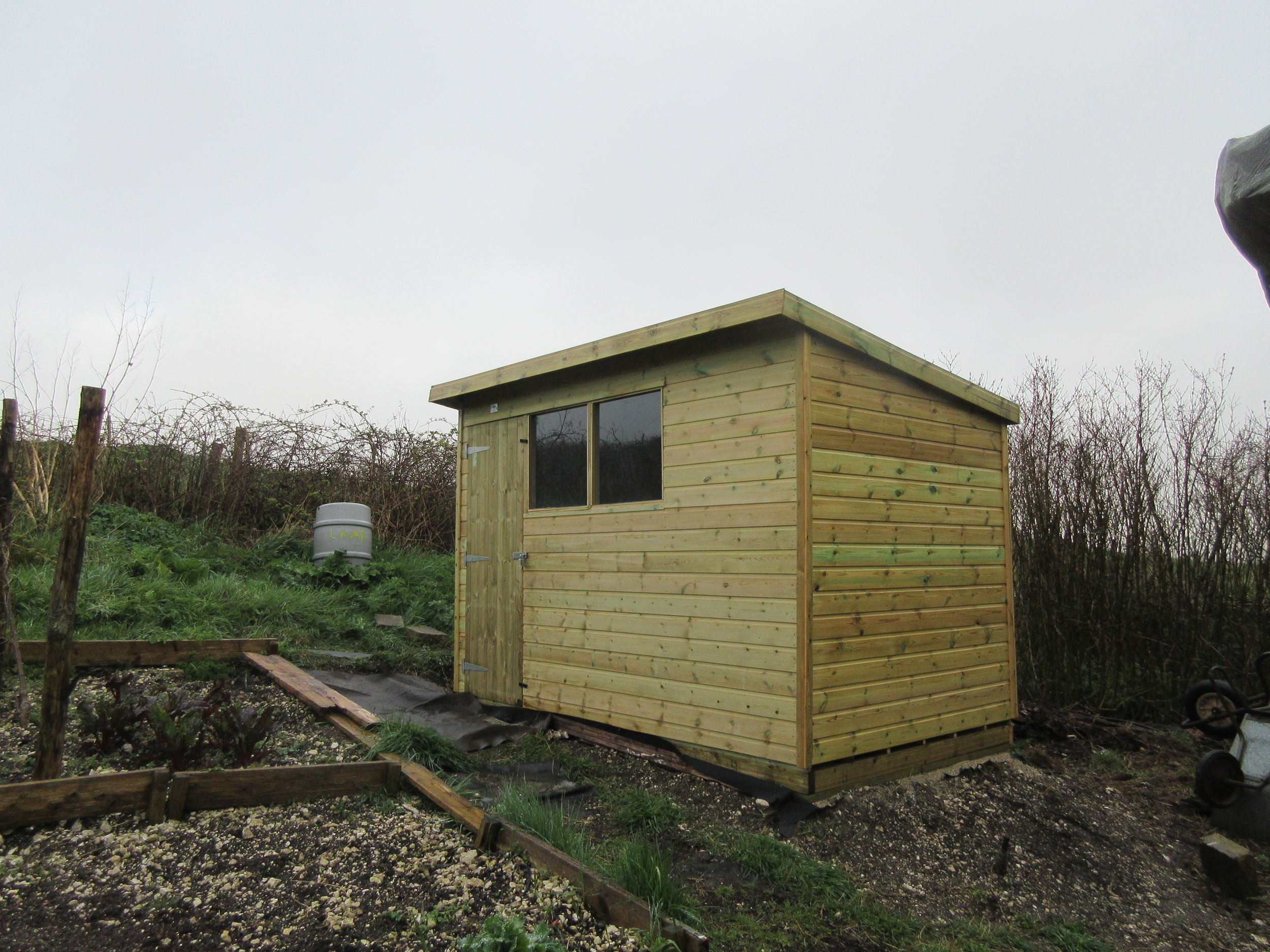
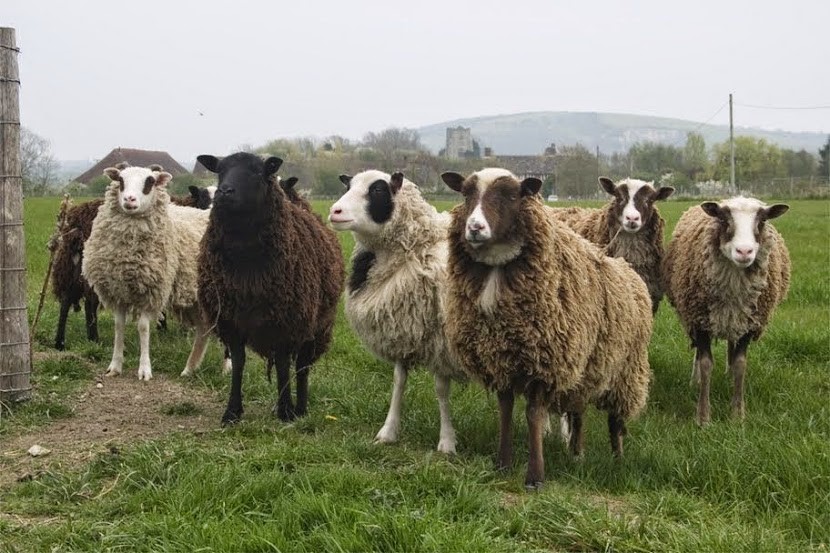


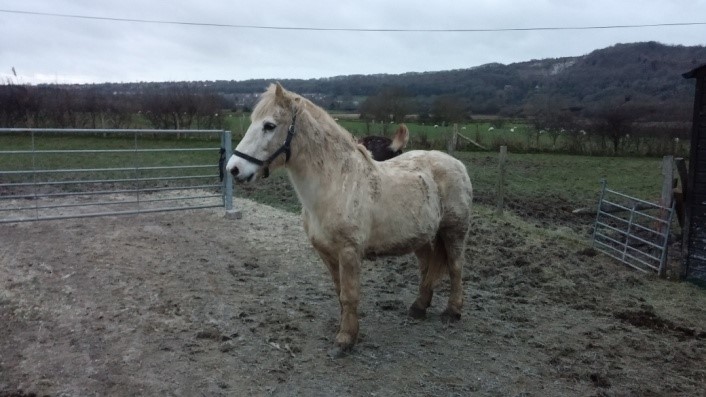
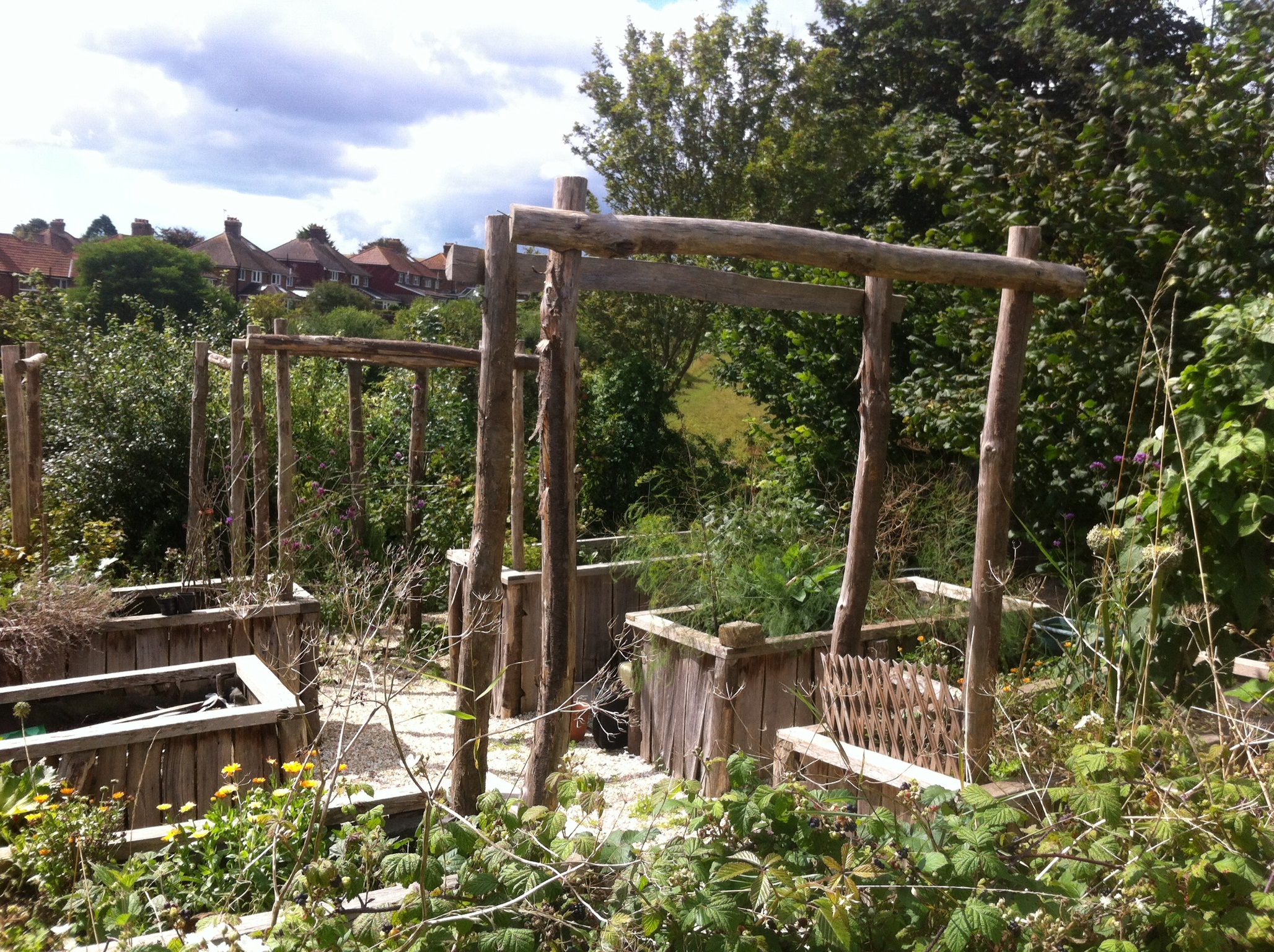
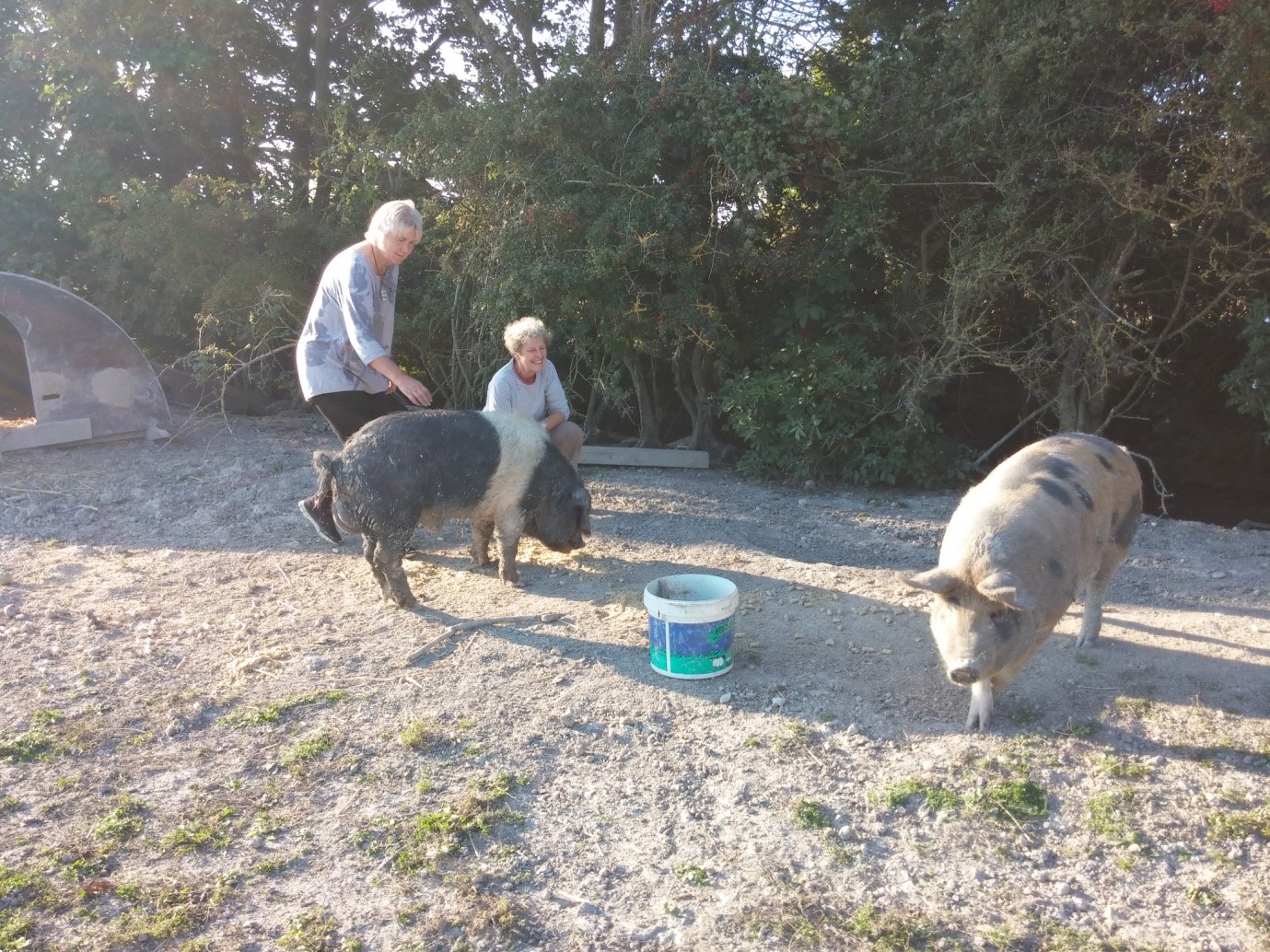
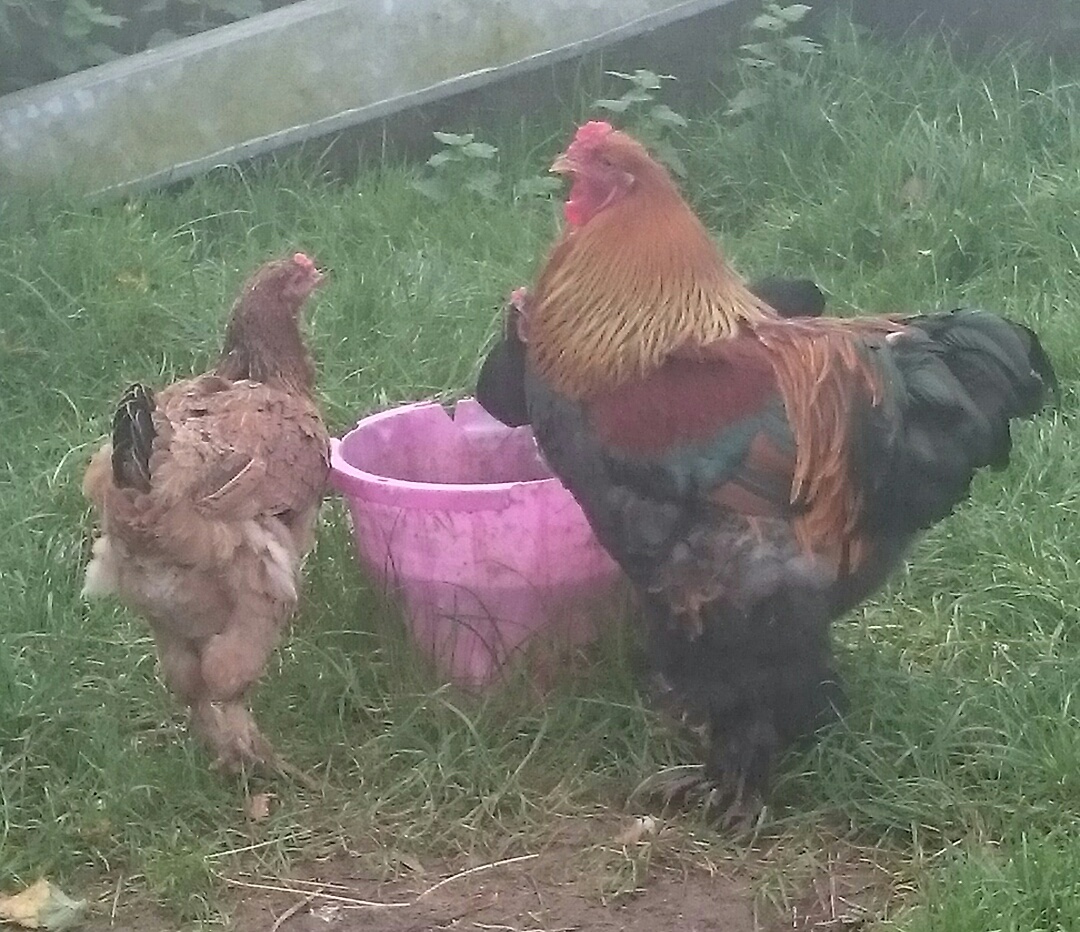
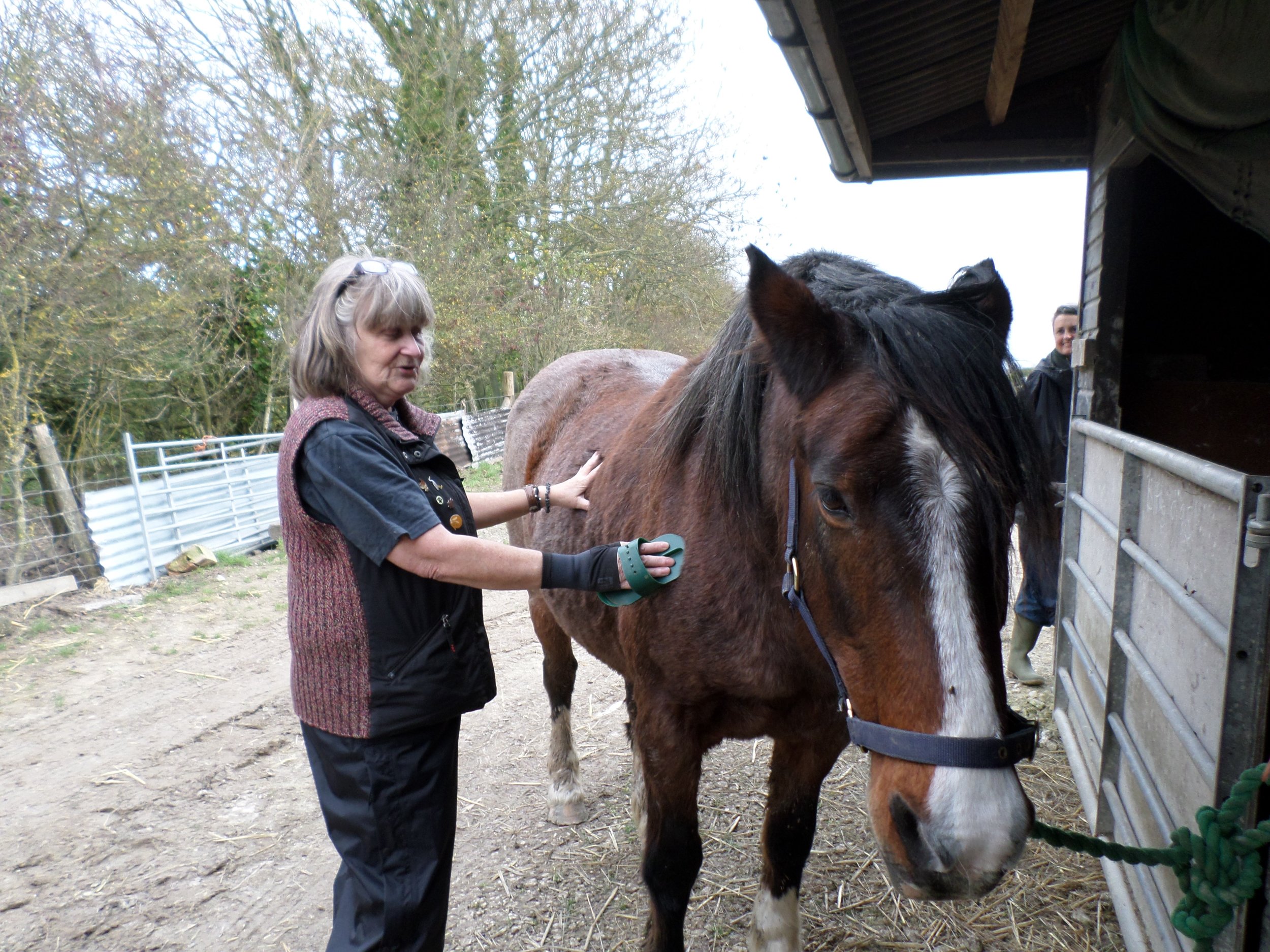
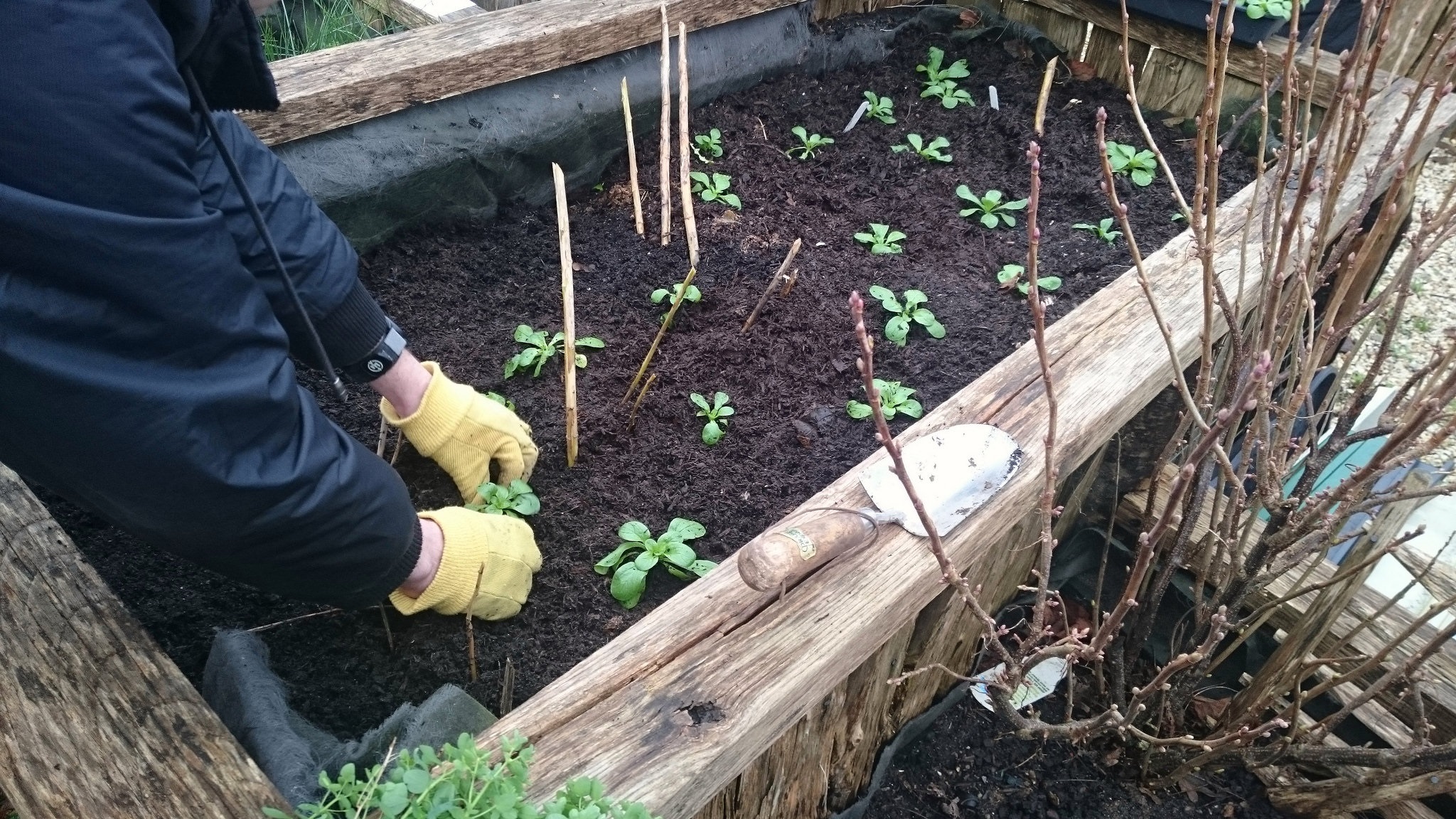




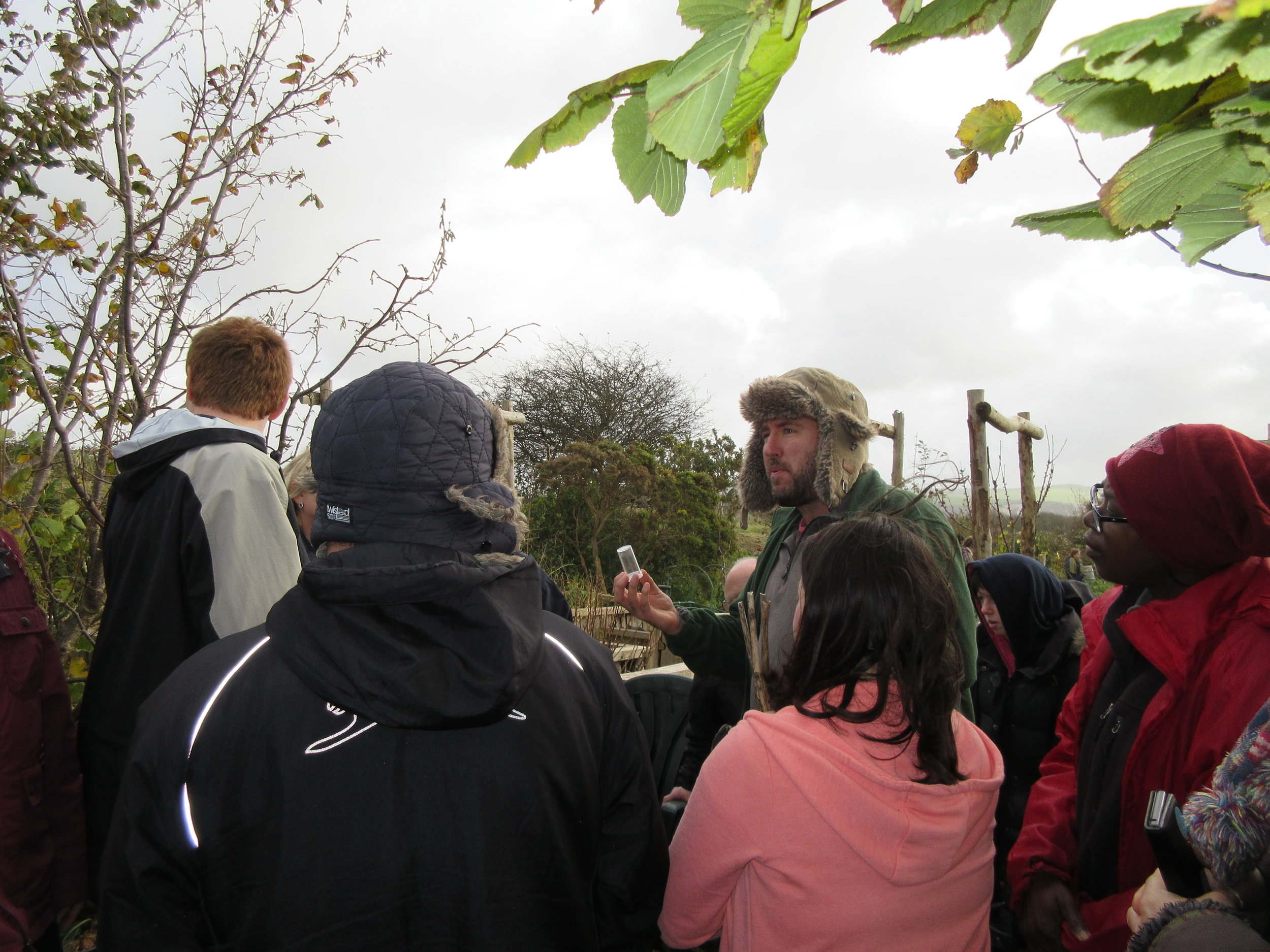 It's always a pleasure to welcome Michael Blencowe from the
It's always a pleasure to welcome Michael Blencowe from the 